- English (EN)
- Español (ES)
- Português (BR)

Is Panama Safe? Crime Rates & Safety Report
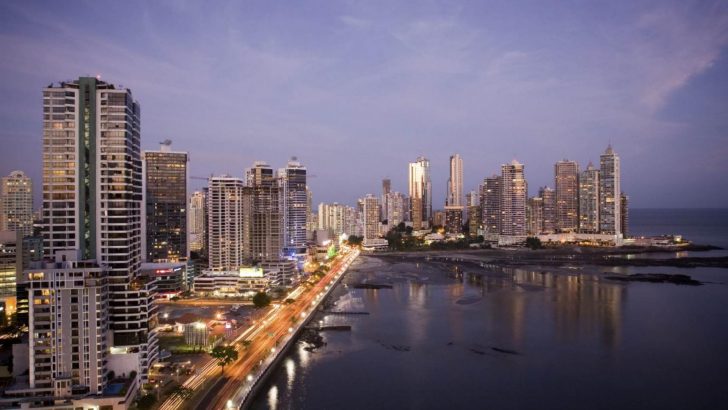
- Panama : Safety by City
- Panama City
Panama is located in Central America, boasting two coastlines: one on the Caribbean Sea and one on the North Pacific Ocean, with Colombia (and, of course, entire South America) to the southeast and Costa Rica (and the North American continent) to the northwest.
The most interesting part about it, both geographically and from a touristic point of view, is that it’s located on the isthmus that forms the land bridge connecting North and South America and controls the Panama Canal – the world-famous canal that connects the North Atlantic Ocean via the Caribbean Sea with the North Pacific Ocean, probably the most important and best known shipping routes in the world.
Panama slowly grew into one of the most popular tourist destinations in the world: tourists can visit two different oceans and coastlines, go climbing mountains, hiking through rainforests and enjoy the impressive city life which offers to its visitors’ contemporary art, fashion and fine dining.
However, the central marvel and the biggest attraction is still the Panama Canal and it can be seen via an aerial view through the local operator, and you can even enjoy stunt and trick flights with veteran air force pilots and skydives over this engineering miracle.
- Warnings & Dangers in Panama
OVERALL RISK: MEDIUM
Panama is generally safe, but you should take precaution on the streets of major cities, and after dark. Be wary of pickpockets and bear in mind that mugging and violent crime are also part of this country's street life.
TRANSPORT & TAXIS RISK: MEDIUM
Public transport is generally safe in Panama, but do be careful on buses and bus stops since that's where pickpockets and petty thieves operate. Bear in mind that bus stations tend to be high crime areas, and whenever possible opt for calling a taxi instead of hailing one on the street.
PICKPOCKETS RISK: HIGH
Pickpockets are a common occurrence on the streets of Panama and tourists are recommended to remain vigilant at all times when on the street. Make sure you don't flash your valuables on the street, be careful when withdrawing money from ATMs and of course, keep all your valuables in a safe place in your accommodation or safely by your side.
NATURAL DISASTERS RISK: MEDIUM
Ocean currents, hurricanes, earthquakes, and floods are only some of the natural disasters that sometimes hit Panama.
MUGGING RISK: MEDIUM
Violent crime exists in Panama and mugging and kidnapping isn't uncommon on the streets of Panama. In such a situation, hand over all your possessions immediately and do not resist. Avoid poorly lit and deserted areas.
TERRORISM RISK: LOW
Although there haven't been any terrorist attacks in Panama's recent history, they shouldn't be ruled out so remain vigilant at all times.
SCAMS RISK: MEDIUM
Scams are very common in Panama, so double check your change, never pay anything upfront and negotiate everything in advance. Watch out for people sending you free drinks and never leave your drink unattended.
WOMEN TRAVELERS RISK: LOW
Traveling to Panama is generally safe for solo women, but bear in mind that you should generally hike and explore in a company, never alone. Stay away from poorly lit and deserted streets and areas and from people that are visibly intoxicated or under the influence
- So... How Safe Is Panama Really?
Generally, Panama is a safe country to visit.
When you visit Panama, you can count on friendly people offering you help with anything you need, especially in rural areas.
However, crime rates are high, and it’s not just the petty crime that’s the issue: violent crime is a common issue in Panama, though it’s on its way to getting eradicated.
There are parts of this country that you should definitely avoid such as the border region between Panama and Colombia, (considered to be extraordinarily dangerous due to the presence of Colombian rebel groups and drug traffickers), most of the city of Colon, El Chorrillo neighborhood of Panama City, and Curundu and El Marañón neighborhoods which are poor and crime-ridden areas.
Although at night the main streets and plazas and districts with bars and restaurants are safe, visitors should be more cautious after dark, especially if they’re moving north along Avenida Central towards El Chorillo.
Pick-pocketing and mugging is a common issue in Panama City, so tourists are advised to exercise caution, particularly in crowded areas such as train and bus stations, airports and on busy streets, as well as in public transport.
- How Does Panama Compare?
- Useful Information
Many countries need a visa in order to enter Panama, while some, like the U.S and Australian nationals, do not need a visa for stays of up to 180 days. Make sure your passport is valid for at least 3 months beyond the date of arrival. If you are not sure about your visa status, visit www.doyouneedvisa.com which will let you know whether or not you need a visa based on your nationality and the country you want to visit.
There are two official currencies in Panama: United States Dollar and Panamanian balboa. ATMs are mostly available throughout the country, except in some isolated areas, while credit cards are accepted in some establishments such as restaurants and upscale hotels, but may not be accepted everywhere.
The climate in Panama is tropical maritime climate, which is characterized by a hot and humid season with plenty of precipitation (which lasts from May to December) and a short dry season (lasting from January to May).
Tocumen International Airport is the busiest international airport of Panama City, the capital of the country of Panama. It is, also, at the same time the busiest airport in Central America at the moment.
Travel Insurance
Just like anywhere else, we recommend getting travel insurance when traveling to Panama, since it covers not only the costs of medical problems but also theft and loss of valuables.
Panama Weather Averages (Temperatures)
- Average High/Low Temperature
Panama - Safety by City
Explore panama.
- 11 Best Beaches in Panama
- 10 Most Dangerous Cities in Panama
- 10 Best Zoos & Aquariums in Panama
- 12 Best Flea Markets in Panama
- 10 Safest Cities In Panama
- 16 Pros and Cons of Living in Panama
- Top 9 Shores Of Panama
- Where to Next?
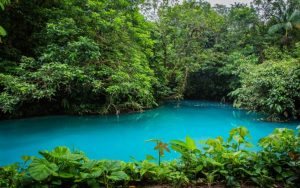
69 Reviews on Panama
Great website.
great website i am doing a school project on panama and this helped my mom a lot
Your mom is doing your report?
Don’t be a rat, Jim.
I have been living in Panamá for 15 years. Your comments on crime are almost total BS. Whereas there is some violent crime, it is overwhelmingly gang and drug involved, and generally confined to the poor neighborhoods in the cites. I have never even heard of anyone being mugged or forcibly robbed in Panamá. Public transportación and taxis are very safe, reliable and cheap here. Residential burglaries are an issue, like anywhere else, although less statistically than in the US. And I was law enforcement in NY. If you have a modicum of common sense, you will be fine in Panamá.
Thank you, dear Police Officer Steve, I’ m looking to have Retirement Seior unexpensive remaining of my life there : I’ ve been robbed hundreds of times in all over the rest of the world , I’ ll be careful more than the others.Thank you for your sincere advice. Wishing you Healthy long happy life.God Blessings.
Best place to relocate.
Steve, thanks buddy for your review. It helps me a lot to understand Panama thru local eyes.
Taxis safe in PANAMÁ? NOT. Use Uber. Taxis are not safe. And you live here? Me too. And you are clearly out of touch with reality here. The country is full of corruption. The police are corrupt and will do nothing to help you. I know of many instances of taxi drivers setting you up and robbing you and also of police robbing people. Panamá ain’t Kansas
Boo-Boo So how about you go back to Kansas,Robby? The Officer knows what he’s doing,unlike yourself. Sounds like you’re anti-LAW ENFORCEMENT. I smell it. Robby, Unfortunately; the planet is full of As—s Steve and I dealt with the Good-Bad and the Ugly;For 25-30 years. Show me your cards,,robby?
Only one Hurricane recorded in Panama, Hurricane Martha, category one in 1969. Kidnapping is a rare crime.
Express kidnappings
Kidnapping is not rare, it’s common. Express kidnappings wherein they take you to am atm, demand 300.00 and then let you go. They know most people can only get 300 at a time from the atm.
No Hurricanes in Panama
Martha made landfall in Veraguas Province, Panama, as a strong tropical storm–not as a full fledged “hurricane.” There are opposing currents on the two sides of the equator, in effect, canceling each other out. Panama is about 600 miles from the equator, but close enough to benefit from this. It’s impossible for a hurricane to actually cross the equator.
my experience
I have traveled to Panama 12 times and I have never had a problem. I travel alone and meet a friend or friends that live there. I have traveled many areas of the country and no problems. As a female, I am always cautious.
Rena, what brings you back to Panama so many times? Do you have a list of places that are a must for first-time visitors?
I am going for the first time doing my research on the country.
Good morning, I am planning an up coming trip to Panama for my first time. I plan on staying in Panama City. I would love some travel advice if I may ask you. Would you mind if I asked you a few questions? I guess that really is already one. Ha ha
Safe for couples travel
Have traveled there a few times now and it felt very safe. Of course have your wits about you in any big city (Panama City and L.A. alike)
The people are very helpful if you need directions or something and it’s much safer than the surrounding countries, likely because of how stable the government is in comparison.
Panama is a safety country, there are not natural disaster , the crime is low and people vey kind. I liked it a lot.
High crime rate
Too many people from other countries come up missing. That change my mind
Where you got that information from Because in my life time station in Panamá Never heard of too many people from different countries coming missing.. Panamá is safe to visit and to retire. Just like any other big country you have to be careful off your suranding eras
I’m planning to go there, pls am scared with some comments I read. Is it possible to quickly get married in panama? I would have loved to stay n settled with a Panamanian woman. Pls advice m.
Do research
Have no idea where you get your info from. This simply is not true, maybe you are thinking of the DR? I’ve lived in Panama for 4 years without problems or hearing excessive crime. Kind of the usual actually.
Been to Panama about ten times and liked it so much I decided to purchase some land and build a house, never felt unsafe in Panama, I actually feel safer there than in the states
Panama, great place, we too are building a home in Volcancito. For average the American, retiring here is not worth it. We have gun violence, and politicians who do not respond to the will of the majority of voters. You can live very well at half the price. We found the Panamanians to be some of the nicest people, we have encountered.
Looking to retire . . . .
Can you please explain by what you mean by saying, “For average the American, retiring here is not worth it.” Thanks!
Army wife stationed twice in Panama
My husband & I were ‘stationed’ in Panama twice. We loved it! You have to be ‘smart’ about where you go in Panama City. The shopping is great with wonderful bargains. There is a dry season (winter) and rainy season (summer). Both have their advantages. Our 2nd tour was when Noriega was in power. But we had a large presence of our military there, so it was OK then. We didn’t see our spouses much! So go & enjoy the Crossroads between the Americas! PS: read the book beforehand
How rainy is the beginning of June? Like coastal afternoon showers, monsoon or just a mix of sunny and rainy on and off? Thx
I think he means retiring in the USA is not worth it. Had to reread it myself to understand his point
Love Panama!
My wife and I lived on our sailboat in Panama, mostly in the San Blas for 2 years. Traveling through the canal 3 times. Overall a wonderful country. With great people. Yes there are some areas to avoid like Colon, the Columbian border area and some neighborhoods in Panama City. My wife and I walked a lot, including at night, took taxies and Ubers a real bargain. We stayed in a number of hotel of 4-5 star quality with 1-2 star pricing. Great food. Never ever had a problem. I come from a more dangerous country. Was visiting Panama this past March, just when Covid 19 hit. They were right on it ! Much better than a lot of major countries especially the US. We left Panama back to the US where there was much MORE covid that Panama. No, take it from a professional mariner, there are no hurricanes in Panama. It is south of the hurricane belt. A hurricane here would be considered extremely freak! I come from a country that has so much crime that many Europeans won’t vacation there. Much racial prejudice, hi crime and a very corrupt Oligarchic government. And guns EVERYWHERE. It’s called the United States of America. Was ready to move back to Panama when Biden got elected. May now try sticking it out and hope for improvement. But Panama a serious consideration as an alternative. As is Portugal.
I get it… We bought a place in Costa Rica for the same reasons.
You sound like a biased, racist idiot. The United States is not and never was run by an oligarch. Biden, you mean the vessel for leftism and the totalitarian State with 47 Executive Orders in one week, yes that is why a new crop of North Americans are seeking to leave and move to Panama. Wake up!
Amen! Another U.S. liberal freak who thinks Republicans are the ones destroying the country?? Moron. Ya so good to have our current liberal socialist dictators destroy capitalism, send billions of our taxes to support foreign countries and open the borders to unvetted illegals to render us reliant on government support. Ya who wants that President Trump who created a thriving economy with the lowest unemployment in history and safe borders!!!
Stop being blind
Trump did a lot of damage to your country, it’s going to take a long time to heal. The very rich run the USA and the rest who have been conditioned to believe that is a good thing, signed up with trump thinking he cared about them…. he does not. You are but minions sent out to disrupt peace and used as puppets to help with the destruction of democracy. Do you think taking away people’s right to vote is democratic? Do you think killing people and trying to overthrow your democracy because you simply didn’t like losing the vote is democratic? You are far from a US patriot if following an insane narcissistic oligarch and carrying out his bidding to disrupt the good, spread hate and racism. This is your idea of democracy? Put aside your hate for a change and show some compassion for fellow Americans and new immigrants who are the back bone of your country. Trump and friends are scum of the earth, using easily manipulated people like yourself to further their hold on monetary wealth.
oh that smell...
UFFF!! …I feel a “trumpet” smell in your words….or to Q..I don’t know but it smell bad, sound bad…any one feel the same? I bet that the US PATRIoT was at the assault to the Capitol , is it? Oh I’m sorry, is my bad…the “turistic visit to the Capitol”…you got what you want? or the fbi is still searching the videos? as far I know, the new crop of Americans seeking to live in panama or any alse place in the world is fliying out the “usa paradise.”.300 million guns on the street, tons of people with mental healt problems that can acces to assault tifles without any limitation and can show it on the strees as is happenning right now in Texas an that can do watheverer he whabt to do, american covind is sinking the world, the americans will be considered infected parias ( looks what happen in Europe right nown) politicians in both sides trying to use the virus to get benefits , monetaries or politics ah@!!! and the good proiud boys and antifa and many other groups of similar extremist ideology pushing the country to a civil war…., the climate change wih more flooding more fired more hurricane…all this is not a good reazon good reazon to leave this “country’?.. And on top of that,.. you can imagine Mr TRUMP retuning to power in 2024? …the amount of entreitment that we are going to have in those years? a lot!! of course I’m goig to see it from PAnama, in my couch in front of tv , in CNN or FOX acconding on how I feel that day with my hands ,more right or more left, depends . I invite you US PATRIOT to drinks some americam beer, the one thet the patriots drinks, if you u dare to come and see the disaster on television,,, but far from the disaster. if you not wnt to come, I wish you luck if you are an American patriot, like the ones I met in Vietnem and Korea and who did not live to enjoy their real Patriotismi
You have a point
I understand your point of view I agree that things in the USA are just getting worse. In my lifetime I have never seen America so divided. I don’t think I am overstating this. relations with Russia could not be worse. I want to retire to a location where I am out of, the line of fire.
Eighty-six the politics
I was under the impression that this article was about Panama, not US politics. This discussion stream right here is my number 1 reason for wanting to leave the US. When I was growing up in the 80s and 90s, in spite of political differences, the US was still one of the 2 most powerful nations in the world. Now, our political circus and our uncanny ability to make *any* discussion about Trump (whether for or against) has made us an international joke. Grow up, people. I’m sure you can find some political arguments to join on Reddit, but please leave this platform to those of us who want to get information about different countries other than the United States.
Veteran Patrotism
I’m very patriotic; I am a disabled veteran of the Gulf war and the USA and it’s allies is the country, I faught for; that does not mean that I am any less blind or forgiving for how racist, corrupt and dangerous it is.
U.S. Patriot must be a Republican. Name Calling is a Republican favorite pass time, along with deflecting, whataboutisms and blaming everyone else from Hilary to the Easter Bunny. Name calling is also childish. Just like you have an opinion so can everyone else. For sure the United States is ALL the things Fred says it is. What you seem not to realize is that NOT everyone ANYWHERE will have the same experiences simply because of the way they look, where they come from or who they want to be. YOU WAKE UP and stop trying to force your opinion and experience on others who obviously don’t experience it the way you do. The Oligarch government is the product of people getting into government just to take advantage of inside information to grow their wealth. For example: insider trading that is illegal for the average person but not U.S. politicians. Just think of how many U.S. politicians became wealthier buying and selling stock associated with Covid-19 Before the virus information was public; very corrupt indeed.
Consider the land and real estate grabs that they are privy to before they are listed and become public. The Governor of my state makes 172K a year. In one four year term his wealth increased by 5 million dollars. Not to mention how the wealthiest 1% can make political donations in excess of millions of dollars to get these politicians to create and vote on legislation that benefits them in achieving even more wealth. Also let’s mention what the politicians themselves get paid by large company lobbyist for voting for or against certain legislation. That’s “Oligarchic” The racism is very real, oppressive, and after Trump people now say the quiet ugly racist things out loud. The lack of gun control is because some Americans feel empowered by them and with all of the mass shooting, especially children this mind-set is insane. Quoting and agreeing with Fred: “Much racial prejudice, hi crime and a very corrupt Oligarchic government. And guns EVERYWHERE. It’s called the United States of America.” Panama is probably safer.
Great review!
I miss Ronald Reagen. Statesman, leader, zero tolerance for terrorists. A 500+ ship Navy, the bad guys in Palestine still remember when Ronnie sent the New Jesey for a visit. He could stand up to Putin unlike any other man, Brought down the Soviet Union. A great man and a great patriot. I wish we had politicians like him now. Old Vlad would be shaking in his boots. the only other President of the 20th century who could compare with him was Theodore Roosevelt. Reagen created the Bracero program that dealt with illegal immigration. He stood up to protesters who were rioting on college campuses, Very, very tough guy. Back on his feet after being shot. No better friend. No tougher enemy. Honest and kind. Sense of humor. respected all over the world. No matter how much you might admire trump. He is no Ronald Reagan. Nobody else is for that matter. He brought the country back after Carter He stands with the greatest of our presidents, Unlike Nixon, he took responsibility when his people made bad decisions. He was neve hateful. He could go at it all day with tip Oneal but at the end of the day, tip would go over to the white house, knock back a few and told jokes. As Reagen was fighting for his life after being shot, Oneal knelt at his bedside and prayed for him, I know I am older. But for those of us lucky enough to witness his greatness, the hacks of today don’ t dare stand in his shadow.
America land of the Not Free
I have news for you, as you havent been paying attention to American politics since Biden was installed (yes, installed), which is driving people like me AWAY. For the first time in US history, the American government is being weaponized against its own people. Enough to make Panama politicians blush. Families with little kids facing armed FBI agents at 7 in the morning? If thats your idea of a great country, you can move back and I will move South!
Thanks Panama Expats
Thank you; living on a boat, now that’s an idea. Sounds like a plan. Your comments about the U.S is exactly why I am leaving . No need to wait, I do not believe the U.S will get better…It’s broken. Time for something new. I was betting on Indonesia, but they are having tourist issues with an onslot of Russians and apparent bad behavior and disrespect. So as long as there is a Russian war that may be Indonesia’s issue for while. Then Thailand however, foreigners are not allowed to own land; which I understand, they don’t want to lose their country like Hawaii before it became part of the U.S, South Africa and other countries that were pretty much stolen by the wealthy. Cambodia and Panama are now in my research pervue and some of these post have helped with narrowing it down since my conerns are to avoid relocating to a place just as gun dangerous, xenophobic and as racist as the U.S. Thanks again.
Fred R You speak my language! The Truth and Nothing but the Truth So help me God! 1967-1968 Vietnam Veteran USAF Retired Law Enforcement 2003
Where in Panama do you suggest buying land at? Researching my options…
I have traveled to Panama.
I have found it to be a safe friendly Country.
But I like to have a local when I travel around, just to be safe.
I am planning on visiting again.
I have visited Panama twice in the past two years. Never, I repeat never have I had any problems in Panama. I have been to Colon, Panama City and places in between. The people are friendly and willing to help you when you have questions. I have more fears walking the streets in the U.S. than in Panama. I have never felt threatened or have I ever been threatened while in Panama. Go to Panama and have a great time, you will not be sorry. Panama is a wonderful country.
I want to travel to Panama but I have no lot. if anyone helps me I can
Hitch hike, bike there, it’ll be a nice long vacation.
Personal opinión (Panamá)
I’m from Panama travel Copa Airline they lost a suitcase never had an explanation for us. Coming back to the airport a man wanted money to let us get in the road to the airport. I love my country but it has really declined since the Americans left. The crime and trash everywhere is high. If we are nice or not depends if you travel to the interior. country people are the best. They welcome you to their home and share meals with you. They go out of their way to please you. But city people are not generous or friendly. I enjoyed the interior and it’s people.
Most economically progressive country in Latin America
Panama is generally safe, and you do not see the violent crimes you see in the U.S. and never the gun violence. Definitely no psychos grabbing their assault rifles to shoot innocent kids in school.
Although not as safe as Cuba, where crime (violent or non-violent) is all but non-existent and rated the safest county in the Western Hemisphere, Panama is a lot safer than Mexico and Guatemala. Honduras and El Salvador are extremely violent countries and the unsafest in Latin America.
Panama is economically stable because of its political stability…six democratically elected administrations since the U.S. invaded and overthrew General Noriega.
I recommend visiting and considering for retirement…
Well I live in PANAMÁ and 2 weeks ago the gangs went nuts and there are videos with hundreds of shots fired you folks don’t have a clue. I LIVE HERE. That’s the reality.
Panama is a really safe place to visit. Natural disasters, man thanks goodness, I don’t remember the last time we faced a natural disaster in the country. Economically stable country and pick pocketing as you mention is really low. Kidnapping? No way, that almost never happens in the country. Gun violence in the street? Almost never happens unless you visit some ghetto places which are very uncommon even in the capital Panama City.
Panama is a very diverse country!
We have been to Panama several times and love it. The canal is an interesting visit as well as Panama City. But you need to go to El Valle and Boquette as well. Bocas del Toro is a unique visit also. Panama is a very diverse country and you can’t see it all in one visit. Therefore we will be returning as soon as possible.
I was stationed there in the Navy 68-71. I enjoyed that tour more than any of my other tours, Spain, Germany. I always felt safe there, even in Colon, the nearest town to where i was stationed. Spent a lot of time in the “Club Florida”. met a wonderful lady there, Tai Li is what me and my friends called her. hated to leave and always wanted to go back but they closed the site where I worked. be safe
Response re politicians. Looking for somewhere to move out of the states if need be.
Just like the states! Response re politicians. Looking for somewhere to move out of the staes if need be.
bought a house near Pacific Ocean
I purchased a new home outside of Pedasi- last Fourth of July (2019) and a month later flew down to see it in person for first time ! So happy I’m made this investment for part time residence, the people including expatriates are vey nice and helpful- my compliment is it reminds me of old Mexico- clean, safe, friendly, and smart- they build their roads to last-
Where in pedasi?
Hi nice! Where in pedasi?
“No Stress”
I love Panama. Since 2013 I have come here a few times and decided to retire and move here in 2020. The biggest perks for me are the friendly people and it’s not a crime to be a black man!
Dream Country - PANAMA !!!
Panama is my dream country to live in (I’m American). I finally got a chance to go 2019 for my bday… All I can say is OMG…it was, was…wonderful, terrific, stupendous, amazing. The food was delicious and if you are American, plenty of Domino’s, Pizza H, Taco Bell we even went to a McD’s when the other local place we went to we found out was closed…and had a RUDE teenager serve us just like in the US ! Nice.
Back to Panama…the people were amazing, the food, views…the accommodations … Ancon Hill was beautiful, the canal was cool, the 3 hotels were beautiful…the neighborhood call San Francisco was just wonderful to walk thru. There were some spots that looked like some areas here in the US, but guess what – I kept it moving just like I do here. I’m seriously thinking about retiring here and not because of the current administration…because of the climate in the US now. Like an earlier poster said, nice to be black and not looked @ sideways. Black female.
I’ve done my research on Panama. Hurricanes are nill, last one in 1969ish, English is spoken even tho I’ll work on my Spanish, monetary system is something I’m used to, Uber’s are ridiculously cheap, I can teach English if I get bored, which I’ve done here and fortunately for me I can blend a bit, until I open my broken Spanish speaking mouth. Huge malls just like the US if that is your thing. Lots of historical things to do if that’s your thing, lots of different types of things to do, beach, hiking, food tasting. The skyline is absolutely amazing…my fav building is the F&F bldg or the screw tower. We found a nice expensive mall with Fendi, MK, Gucci and the like …I don’t really like hot, humid weather but I’ll deal w/it for the beautiful water and views. I’m old enough where I can just sit and watch the water w/some relaxing music and be happy.
Go if you can.
I’m working on going one to two times a year until I retire. I was told if I add my age (52) and number of years working (30) = 82 and it adds up to 80 I can retire. I want to get closer to 62 but not just 67…soooo maybe 7/8 more yrs and I’M OUT !!!
The truth about crime in Panama
Just like anyplace else, Panama has crime. New York has crime, San Francisco has crime etc. If you try to buy drugs, pick up a prostitute on the street, get obviously intoxicated in a bar, flash money, expensive watches etc you increase you risk. Much of the reported crime involves people that did a stupid thing and put themselves in harms way. Don’t carry a huge purse, hire a car a reputable car service, it’s easy and cheap. Don’t carry unessary credit cards or cash, why would you in the first place. Don’t overly share your info or brag about your income, wealth etc. Same advice I would give to visitors to most major US cities. As far as kidnappings go, the numbers are ridiculously low. If you leave valuables on a beach to go into the water it might get some attention just like it does in Hawaii and Florida. Act like a grown up in Pansms, be aware of your surroundings etc and you will have no issue at all Panama is a wonderful, safe place to visit it live.
Socio-political Climate?
I currently live in the USA and am considering moving to Panama upon retirement. The social and political climate/atmosphere has become toxic and intolerable here in the states. I never thought I would want to leave my country. Half of the nation’s population hates the other half. Each side seems dug in and things have gotten completely out of control when co-workers and neighbors and even family and friends cannot seem to tolerate each other. My question is: How do the people treat each other in Panama? Does allegiance to ideology drown out the voices of reason? I want to live in a place where politics is NOT discussed 24-hours a day and everywhere you go. Any responses would be greatly appreciated.
I am going to visit soon. I have friends in Boca del Toro. I will visit until I have figured it out. I am a single guy and a pro musician. I am used to living cheap. I plan on eventually owning property and home. I have no expectations of anything but a slower, relaxing life, in a country that seem to get along.
question. neutral rating
for retirement. how are the hospitals and end of care treatment? they taie u.s. medicare ? lower middle class. can i afford Panama?
Hola Panama
Panama is the best country in Central America. Please come here. It is safe and it’s also safer than Costa Rica. I dare you to come here.
Well, Americans make the biggest mistakes buying properties and have it stolen from them frkm the very Attorneys that set up their property Corporations (no one seems to be addressing it on here, bug time theft against home buyers too. I am in the midst of that stealing especially when one’s spuse dies or both dies…the family have hard time to clain or sell the corporatikn which their parents were force to buy from)…yes guys be up front and address these types of serious crimes and also include how top banks keep assets from the rest of the family when death occurrs. Yeap! Do confess
A wonderful country, with many impressive destinations
Panama has become an important destination for both tourists and people looking to retire in a nice country, where prices are lower. I’ve managed to go there a few times and I like it a lot. While there are still issues that need to be fixed like pickpockets and some scammers, I still think Panama has much more good things to offer than bad. Pickpockets are usually easy to spot if you carefully look and for scams, just use your judgment and refuse anything that feels off and you’ll be fine.
My wife really loved the Panama Canal. I think she could stare at ships transiting through for hours and hours. She loves this kind of stuff. There’s also a boat tour that really opens your eyes to how massive this place is. There’s also a museum, restaurant and an IMAX theater here so you can probably make a day out of it.
If hiking is more of your thing, then go for the town of Boquete. This place is safe, warm (both people wise and in climate) and is a well known spot for wildlife, nature and birdwatching. It’s also a good idea to have a car to tour the surrounding mountains but tours can also be taken in case you don’t own a vehicle.
We’re into surfing so Santa Catalina was a must visit. It’s a gorgeous place: small and friendly. I really relaxed while here. My mind slowed down and I could take in everything around me, the fresh air, the sea, nature and all sounds. There’s also Coiba National Park, a beautiful, untouched biodiversity hotspot. You’ll see many birds, turtles, crocodiles or whale sharks (which you can interact with if you scuba dive).
Overall, Panama has so much to offer especially to someone like me, who comes from an industrialized city where nature is not abundant. A great place to visit and even consider living in!
Panama Banks and Brokerage Firms
Great to know If I’m reading Isabel’s comment correctly. I’m 83 years old and have been to Panama several times, and I was thinking of purchasing an abode there for when I get old. Interesting comment about the banks also. Maybe I will rent a place instead. Does anyone else know anything about banks and brokerage trading firms in Panama? Cheers!
Love your “when I get old” comment! And “Cheers” is part of staying young, and a good Cigar now and then. Great website.
Perfect Vacay
I went in 2022 for a few weeks and had nothing but positive experiences. I was in Panama City, the Boquete region and Isla Palenque, all of which were safe and very welcoming. I traveled with 8 family members and everything went smoothly, many citizens tried to speak English to us and say “hey y’all” which was so nice. My favorite out of 15 countries I have visited.
Share Your Experience Cancel reply
Your Review
Title of your review
Article Contents
- Overall Risk
- Transport & Taxis Risk
- Pickpockets Risk
- Natural Disasters Risk
- Mugging Risk
- Terrorism Risk
- Women Travelers Risk
- Weather Averages (Temperatures)
- User Reviews
- Share Your Experience
Popular Destinations

Safety Index
Recent reviews & comments.
- Francis Booker on Los Angeles
- Garth on 10 Most Dangerous Cities In Georgia
- Alex on 10 Most Dangerous Cities in Japan
- Tristan Nash on Canton
- Jones Schultz on Canton
Popular US States
- Pennsylvania
Your browser is not supported for this experience. We recommend using Chrome, Firefox, Edge, or Safari.

Requirements to Travel to Panamá
To enjoy your trip to Panamá, you must comply with the following documents and regulations:
- Valid passport within at least six months of expiration
- Return ticket to the country of origin or the next destination to visit
- Proof of economic solvency of at least five hundred dollars (USD $500.00) in cash, credit card, bank reference, work letter, or traveler's checks. Some nationalities must present a higher amount. We recommend validating this information with the consulate of Panamá in your country or with your airline.
- Address of the place of lodging and purpose of travel.
- Some nationalities must present a tourist visa before their trip to Panamá. If this is your case, we recommend going directly to the Panamanian consulate in your country. For any other query, visit the National Migration Service of Panam á page or check with your airline.
- The yellow fever vaccine is mandatory for all people traveling from Brazil, who must present the international vaccination certificate issued by ANVISA at least 10 days before arrival. Exceptions:
- Currently, there are no restrictions or requirements specific to COVID-19. However, in this link , you can always review updated information.
- For more information, visit Tocumen Panamá .
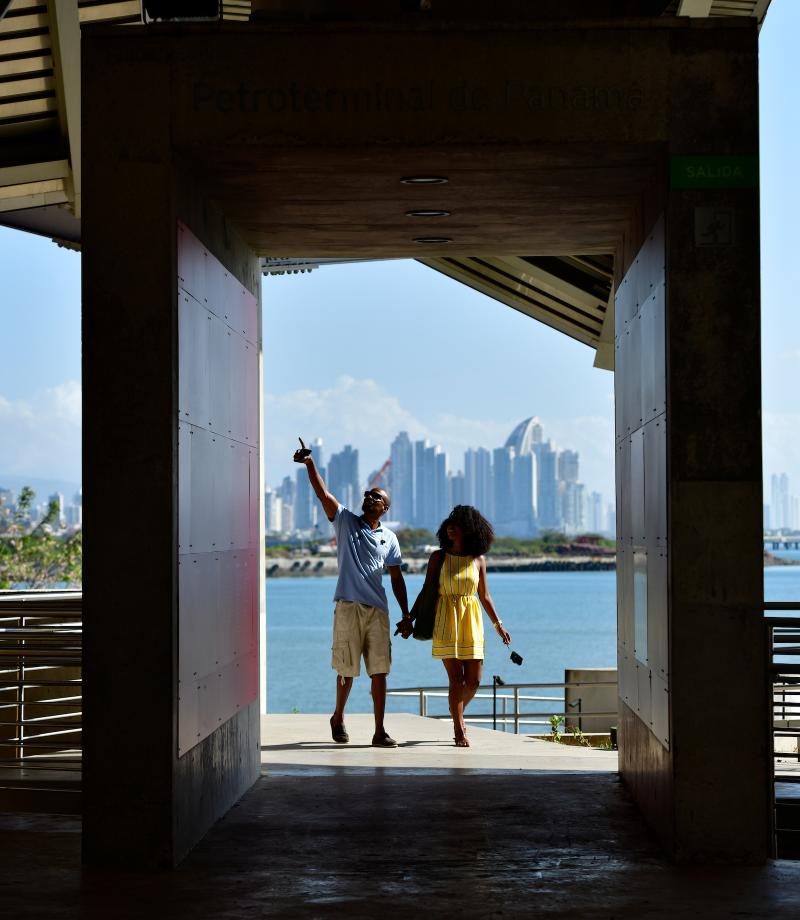
Things to Do
Places to visit.
- Skip to main content
- Skip to "About this site"
Language selection
Search travel.gc.ca.
Help us to improve our website. Take our survey !
COVID-19: travel health notice for all travellers
Panama travel advice
Latest updates: The Health section was updated - travel health information (Public Health Agency of Canada)
Last updated: April 15, 2024 13:01 ET
On this page
Safety and security, entry and exit requirements, laws and culture, natural disasters and climate, panama - take normal security precautions.
Take normal security precautions in Panama
Colón and some areas of Panama City - Exercise a high degree of caution
Exercise a high degree of caution in Colón and some areas of Panama City, due to high levels of crime.
Region beyond Yaviza - Avoid all travel
Avoid all travel to the areas beyond the town of Yaviza in Darién Province to the Colombian border, due to the extremely high level of violent crime.
Mosquito Gulf - Avoid all travel
Avoid all travel to the Mosquito Gulf, from Boca de Río Chiriquí to Coclé del Norte, due to the high level of illegal activity such as drug smuggling and human trafficking.
Back to top
Region between Yaviza and the Colombian border
Avoid all travel from the end of the Pan-American Highway (past Yaviza, about 230 km southeast of Panama City) to the Colombian border. This area includes parts of Darién National Park and privately owned nature reserves and tourist resorts.
Colombian guerrilla groups and drug traffickers are present in this area. The level of violent crime is extremely high, with numerous reports of:
- kidnappings
- armed robberies
- disappearances
If you choose to visit this region despite this advisory:
- be extremely vigilant at all times
- review your security situation regularly
- leave a detailed itinerary with family or friends
Mosquito Gulf
Avoid all travel to the Mosquito Gulf, from Boca de Río Chiriquí to Coclé del Norte.
This is a very remote part of the country with limited road access. There are high levels of illegal activity such as drug smuggling and human trafficking along the coast.
Petty crime
Petty crime, such as pickpocketing and purse snatching, occurs.
- Ensure that your belongings, including your passport and other travel documents, are secure at all times
- Avoid displaying signs of affluence or carrying large sums of cash
- Use ATMs located in public areas or inside a bank or business
- Don’t walk alone after dark
- Remain vigilant in all public places, especially at airports and bus terminals
In Panama City, high-crime areas include bus stations and shopping areas on Avenida Central as well as the following neighbourhoods:
- Ancón
- Curundú
- El Chorillo
- San Miguelito
- Juan Díaz
- Parque Soberania
- Río Abajo
- Veracruz Beach
Theft from hotel rooms occurs in both urban and resort areas.
Residential break-ins and robberies also occur. They are more likely to happen when nobody is home. Criminals may also try to gain your trust then enter your home.
- Stay in busy, reputable and well-protected hotels
- Always verify the identity of a visitor before opening your door
- Ensure that windows and doors are secure and locked in both private and commercial accommodations
Violent crime
Violent crime is not frequent, but does occur. There have been violent crimes committed in the cities of Colón and David, as well as in some beach communities.
Express kidnappings have also occurred. Criminals abduct victims, usually for a few hours, and force them to withdraw money from ATMs in exchange for their release.
Demonstrations
Demonstrations occasionally occur. They can lead to disruptions to traffic and public transportation. Even peaceful demonstrations can turn violent at any time. Police may use tear gas and other methods to disperse crowds.
- Avoid areas where demonstrations and large gatherings are taking place
- Follow the instructions of local authorities
- Monitor local and social media for information on ongoing demonstrations
- Check your route before travelling and be prepared to modify your plans in case of disturbances and roadblocks
Mass gatherings (large-scale events)
Women’s safety
Women travelling alone may be subject to some forms of harassment and verbal abuse.
Incidents of assault, rape and sexual aggression against foreigners have occurred, including at beach resorts. In some cases, hotel employees have been implicated.
- Avoid walking after dark, especially alone
- Avoid deserted or under-populated areas
- Exercise caution when dealing with strangers or recent acquaintances
- Don’t accept invitations or rides from strangers or recent acquaintances
If you are a victim of a sexual assault or other crime, you should report it immediately to the police and the Embassy of Canada.
Advice for women travellers
Water activities
Lifeguards don’t usually supervise beaches. Tidal changes can cause powerful currents, and riptides are common. Several drownings occur each year.
Rescue services may not be consistent with international standards.
- Consult residents and tour operators for information on possible hazards and safe swimming areas
- Follow the instructions and warnings of local authorities
Tour operators may not adhere to international standards.
If you undertake adventure sports, such as diving:
- choose a well-established and reputable company that has insurance
- ensure that your travel insurance covers the recreational activities you choose
If in doubt concerning the safety of the facilities or equipment, don’t use them.
Water safety abroad
Adventure tourism
If you engage in adventure tourism:
- never do so alone
- always hire an experienced guide from a reputable company
- buy travel insurance that includes helicopter rescue and medical evacuation
- ensure that your physical condition is good enough to meet the challenges of your activity
- ensure that you’re properly equipped
- ensure that you’re well informed about weather and other conditions that may pose a hazard
- inform a family member or friend of your itinerary
- obtain detailed information on each activity before setting out
Road safety
Road conditions and road safety are poor throughout the country.
Drivers often drive dangerously.
Night construction on the Pan-American Highway is frequent, and the highway is not well-lit.
- Keep car windows closed and doors locked at all times
- Be prepared for possible roadblocks
Public transportation
Public transportation has improved in the recent years but may be unreliable.
Local buses within Panama City don’t always follow a regular route. Due to the risk of theft, when travelling by bus:
- be aware of your surroundings
- protect your belongings
Taxis and ridesharing
Registered yellow taxis are generally safe if located at a taxi stand, which are usually found at malls, hotels and main transport hubs.
They are not metered. Fares are calculated according to the number of zones crossed to get to a destination. It's preferable to have small bills available to pay taxi fares.
When using a taxi:.
- agree to a fare before departure
- tell the driver you don’t want to share a taxi, since they may attempt to pick up additional passengers
- always sit in the back of the vehicle
Rideshare apps are commonly used throughout the country.
If you use a trusted ridesharing app, confirm the driver’s identity and the licence plate before getting in the car.
The following areas are known as transportation corridors for narcotics:
- the southeastern coast of Comarca Kuna Yala
Coiba Island
- the Mosquito Gulf
- the entire length of the Pacific coast
These areas are especially dangerous at night. Boaters should be wary of vessels that may be involved in smuggling.
We do not make assessments on the compliance of foreign domestic airlines with international safety standards.
Information about foreign domestic airlines
Every country or territory decides who can enter or exit through its borders. The Government of Canada cannot intervene on your behalf if you do not meet your destination’s entry or exit requirements.
We have obtained the information on this page from the Panamanian authorities. It can, however, change at any time.
Verify this information with the Foreign Representatives in Canada .
Entry requirements vary depending on the type of passport you use for travel.
Before you travel, check with your transportation company about passport requirements. Its rules on passport validity may be more stringent than the country’s entry rules.
Regular Canadian passport
Your passport must be valid for at least 3 months beyond the date you expect to leave Panama.
Passport for official travel
Different entry rules may apply.
Official travel
Passport with “X” gender identifier
While the Government of Canada issues passports with an “X” gender identifier, it cannot guarantee your entry or transit through other countries. You might face entry restrictions in countries that do not recognize the “X” gender identifier. Before you leave, check with the closest foreign representative for your destination.
Other travel documents
Different entry rules may apply when travelling with a temporary passport or an emergency travel document. Before you leave, check with the closest foreign representative for your destination.
Useful links
- Foreign Representatives in Canada
- Canadian passports
Tourist visa: not required for stays up to 180 days Business visa: required Student visa: required
Length of stay
If you wish to stay in the country for more than 180 days, you must change your residency status.
To renew your stay as a tourist, you must exit Panama for at least 30 days. Immigration authorities may deny you re-entry if you try to renew your stay in Panama by travelling out of the country for a short period of time and returning as a tourist.
Panama National Immigration Service (in Spanish)
You need a permit from Panama’s National Authority for the Environment to access Coiba National Park. Contact your tour operator to obtain it.
Criminal record
You may be refused entry to Panama, even for transit purposes, if you have a criminal record.
Other requirements
Entry stamp.
You must obtain an entry stamp from immigration officials upon entry into Panama. You may be fined US$1,000 if you fail to do so.
Exit or onward ticket
Immigration officials may ask you to show them a return or onward ticket and proof of sufficient funds to cover your stay.
You must register your biometrics (fingerprints and facial scan) at the port of entry.
Cash or credit card
You are required to have the equivalent of US$500 or a credit card when entering Panama.
Children and travel
Learn more about travelling with children .
Yellow fever
Learn about potential entry requirements related to yellow fever (vaccines section).
Relevant Travel Health Notices
- Global Measles Notice - 13 March, 2024
- Zika virus: Advice for travellers - 31 August, 2023
- COVID-19 and International Travel - 13 March, 2024
- Dengue: Advice for travellers - 8 April, 2024
This section contains information on possible health risks and restrictions regularly found or ongoing in the destination. Follow this advice to lower your risk of becoming ill while travelling. Not all risks are listed below.
Consult a health care professional or visit a travel health clinic preferably 6 weeks before you travel to get personalized health advice and recommendations.
Routine vaccines
Be sure that your routine vaccinations , as per your province or territory , are up-to-date before travelling, regardless of your destination.
Some of these vaccinations include measles-mumps-rubella (MMR), diphtheria, tetanus, pertussis, polio, varicella (chickenpox), influenza and others.
Pre-travel vaccines and medications
You may be at risk for preventable diseases while travelling in this destination. Talk to a travel health professional about which medications or vaccines may be right for you, based on your destination and itinerary.
Yellow fever is a disease caused by a flavivirus from the bite of an infected mosquito.
Travellers get vaccinated either because it is required to enter a country or because it is recommended for their protection.
- There is a risk of yellow fever in this country.
Country Entry Requirement*
- Proof of vaccination is required if you are coming from a country where yellow fever occurs.
Recommendation
- Vaccination is recommended depending on your itinerary.
- Contact a designated Yellow Fever Vaccination Centre well in advance of your trip to arrange for vaccination.
- Discuss travel plans, activities, and destinations with a health care professional.
- Protect yourself from mosquito bites .
About Yellow Fever
Yellow Fever Vaccination Centres in Canada * It is important to note that country entry requirements may not reflect your risk of yellow fever at your destination. It is recommended that you contact the nearest diplomatic or consular office of the destination(s) you will be visiting to verify any additional entry requirements.
There is a risk of hepatitis A in this destination. It is a disease of the liver. People can get hepatitis A if they ingest contaminated food or water, eat foods prepared by an infectious person, or if they have close physical contact (such as oral-anal sex) with an infectious person, although casual contact among people does not spread the virus.
Practise safe food and water precautions and wash your hands often. Vaccination is recommended for all travellers to areas where hepatitis A is present.
Measles is a highly contagious viral disease. It can spread quickly from person to person by direct contact and through droplets in the air.
Anyone who is not protected against measles is at risk of being infected with it when travelling internationally.
Regardless of where you are going, talk to a health care professional before travelling to make sure you are fully protected against measles.
Hepatitis B is a risk in every destination. It is a viral liver disease that is easily transmitted from one person to another through exposure to blood and body fluids containing the hepatitis B virus. Travellers who may be exposed to blood or other bodily fluids (e.g., through sexual contact, medical treatment, sharing needles, tattooing, acupuncture or occupational exposure) are at higher risk of getting hepatitis B.
Hepatitis B vaccination is recommended for all travellers. Prevent hepatitis B infection by practicing safe sex, only using new and sterile drug equipment, and only getting tattoos and piercings in settings that follow public health regulations and standards.
Coronavirus disease (COVID-19) is an infectious viral disease. It can spread from person to person by direct contact and through droplets in the air.
It is recommended that all eligible travellers complete a COVID-19 vaccine series along with any additional recommended doses in Canada before travelling. Evidence shows that vaccines are very effective at preventing severe illness, hospitalization and death from COVID-19. While vaccination provides better protection against serious illness, you may still be at risk of infection from the virus that causes COVID-19. Anyone who has not completed a vaccine series is at increased risk of being infected with the virus that causes COVID-19 and is at greater risk for severe disease when travelling internationally.
Before travelling, verify your destination’s COVID-19 vaccination entry/exit requirements. Regardless of where you are going, talk to a health care professional before travelling to make sure you are adequately protected against COVID-19.
The best way to protect yourself from seasonal influenza (flu) is to get vaccinated every year. Get the flu shot at least 2 weeks before travelling.
The flu occurs worldwide.
- In the Northern Hemisphere, the flu season usually runs from November to April.
- In the Southern Hemisphere, the flu season usually runs between April and October.
- In the tropics, there is flu activity year round.
The flu vaccine available in one hemisphere may only offer partial protection against the flu in the other hemisphere.
The flu virus spreads from person to person when they cough or sneeze or by touching objects and surfaces that have been contaminated with the virus. Clean your hands often and wear a mask if you have a fever or respiratory symptoms.
Malaria is a serious and sometimes fatal disease that is caused by parasites spread through the bites of mosquitoes. There is a risk of malaria in certain areas and/or during a certain time of year in this destination.
Antimalarial medication may be recommended depending on your itinerary and the time of year you are travelling. Consult a health care professional or visit a travel health clinic before travelling to discuss your options. It is recommended to do this 6 weeks before travel, however, it is still a good idea any time before leaving. Protect yourself from mosquito bites at all times: • Cover your skin and use an approved insect repellent on uncovered skin. • Exclude mosquitoes from your living area with screening and/or closed, well-sealed doors and windows. • Use insecticide-treated bed nets if mosquitoes cannot be excluded from your living area. • Wear permethrin-treated clothing. If you develop symptoms similar to malaria when you are travelling or up to a year after you return home, see a health care professional immediately. Tell them where you have been travelling or living.
In this destination, rabies is carried by dogs and some wildlife, including bats. Rabies is a deadly disease that spreads to humans primarily through bites or scratches from an infected animal. While travelling, take precautions , including keeping your distance from animals (including free-roaming dogs), and closely supervising children.
If you are bitten or scratched by an animal while travelling, immediately wash the wound with soap and clean water and see a health care professional. Rabies treatment is often available in this destination.
Before travel, discuss rabies vaccination with a health care professional. It may be recommended for travellers who are at high risk of exposure (e.g., occupational risk such as veterinarians and wildlife workers, children, adventure travellers and spelunkers, and others in close contact with animals).
Safe food and water precautions
Many illnesses can be caused by eating food or drinking beverages contaminated by bacteria, parasites, toxins, or viruses, or by swimming or bathing in contaminated water.
- Learn more about food and water precautions to take to avoid getting sick by visiting our eat and drink safely abroad page. Remember: Boil it, cook it, peel it, or leave it!
- Avoid getting water into your eyes, mouth or nose when swimming or participating in activities in freshwater (streams, canals, lakes), particularly after flooding or heavy rain. Water may look clean but could still be polluted or contaminated.
- Avoid inhaling or swallowing water while bathing, showering, or swimming in pools or hot tubs.
Travellers' diarrhea is the most common illness affecting travellers. It is spread from eating or drinking contaminated food or water.
Risk of developing travellers' diarrhea increases when travelling in regions with poor standards of hygiene and sanitation. Practise safe food and water precautions.
The most important treatment for travellers' diarrhea is rehydration (drinking lots of fluids). Carry oral rehydration salts when travelling.
Typhoid is a bacterial infection spread by contaminated food or water. Risk is higher among children, travellers going to rural areas, travellers visiting friends and relatives or those travelling for a long period of time.
Travellers visiting regions with a risk of typhoid, especially those exposed to places with poor sanitation, should speak to a health care professional about vaccination.
Insect bite prevention
Many diseases are spread by the bites of infected insects such as mosquitoes, ticks, fleas or flies. When travelling to areas where infected insects may be present:
- Use insect repellent (bug spray) on exposed skin
- Cover up with light-coloured, loose clothes made of tightly woven materials such as nylon or polyester
- Minimize exposure to insects
- Use mosquito netting when sleeping outdoors or in buildings that are not fully enclosed
To learn more about how you can reduce your risk of infection and disease caused by bites, both at home and abroad, visit our insect bite prevention page.
Find out what types of insects are present where you’re travelling, when they’re most active, and the symptoms of the diseases they spread.
There is a risk of chikungunya in this country. The risk may vary between regions of a country. Chikungunya is a virus spread through the bite of an infected mosquito. Chikungunya can cause a viral disease that typically causes fever and pain in the joints. In some cases, the joint pain can be severe and last for months or years.
Protect yourself from mosquito bites at all times. There is no vaccine available for chikungunya.
- In this country, dengue is a risk to travellers. It is a viral disease spread to humans by mosquito bites.
- Dengue can cause flu-like symptoms. In some cases, it can lead to severe dengue, which can be fatal.
- The level of risk of dengue changes seasonally, and varies from year to year. The level of risk also varies between regions in a country and can depend on the elevation in the region.
- Mosquitoes carrying dengue typically bite during the daytime, particularly around sunrise and sunset.
- Protect yourself from mosquito bites . There is no vaccine or medication that protects against dengue.
Zika virus is a risk in this country.
Zika virus is primarily spread through the bite of an infected mosquito. It can also be sexually transmitted. Zika virus can cause serious birth defects.
During your trip:
- Prevent mosquito bites at all times.
- Use condoms correctly or avoid sexual contact, particularly if you are pregnant.
If you are pregnant or planning a pregnancy, you should discuss the potential risks of travelling to this destination with your health care provider. You may choose to avoid or postpone travel.
For more information, see Zika virus: Pregnant or planning a pregnancy.
American trypanosomiasis (Chagas disease) is a risk in this country. It is caused by a parasite spread by infected triatomine bugs. The infection can be inactive for decades, but humans can eventually develop complications causing disability and even death.
Risk is generally low for most travellers. Protect yourself from triatomine bugs, which are active at night, by using mosquito nets if staying in poorly-constructed housing. There is no vaccine available for Chagas disease.
Animal precautions
Some infections, such as rabies and influenza, can be shared between humans and animals. Certain types of activities may increase your chance of contact with animals, such as travelling in rural or forested areas, camping, hiking, and visiting wet markets (places where live animals are slaughtered and sold) or caves.
Travellers are cautioned to avoid contact with animals, including dogs, livestock (pigs, cows), monkeys, snakes, rodents, birds, and bats, and to avoid eating undercooked wild game.
Closely supervise children, as they are more likely to come in contact with animals.
Person-to-person infections
Stay home if you’re sick and practise proper cough and sneeze etiquette , which includes coughing or sneezing into a tissue or the bend of your arm, not your hand. Reduce your risk of colds, the flu and other illnesses by:
- washing your hands often
- avoiding or limiting the amount of time spent in closed spaces, crowded places, or at large-scale events (concerts, sporting events, rallies)
- avoiding close physical contact with people who may be showing symptoms of illness
Sexually transmitted infections (STIs) , HIV , and mpox are spread through blood and bodily fluids; use condoms, practise safe sex, and limit your number of sexual partners. Check with your local public health authority pre-travel to determine your eligibility for mpox vaccine.
Medical services and facilities
Good health care is available in private hospitals and clinics in Panama City. Quality of care varies greatly in public hospitals throughout the country, which are limited outside Panama City.
You may have to pay in advance, in cash, to obtain medical services.
Medical evacuation can be very expensive and you may need it in case of serious illness or injury.
Make sure you get travel insurance that includes coverage for medical evacuation and hospital stays.
Travel health and safety
Keep in Mind...
The decision to travel is the sole responsibility of the traveller. The traveller is also responsible for his or her own personal safety.
Be prepared. Do not expect medical services to be the same as in Canada. Pack a travel health kit , especially if you will be travelling away from major city centres.
You must abide by local laws.
Learn about what you should do and how we can help if you are arrested or detained abroad .
Panama’s legal system is complex. Reporting a crime differs greatly from reporting a crime in Canada and may vary among Panama’s provinces. Local authorities generally do not speak English or French. Therefore, you may require a translator or legal representation.
Penalties for possession, use or trafficking of illegal drugs are severe. Convicted offenders can expect heavy fines and long jail sentences.
Drugs, alcohol and travel
Identification
Panamanian law requires all individuals to carry official identification documents at all times. Authorities may jail and fine you if you fail to produce identification upon request.
There may be curfews for minors (under 18 years old) in Panama City.
Police may arrest minors who are outside alone late at night in Panama City if the police believe they’re involved in suspicious activities. Police may detain minors until they can contact the parents, who may receive a fine.
Photography
Indigenous persons may ask you for a small fee if you take picture of them.
Ask permission before taking photographs of individuals, particularly of children and women.
2SLGBTQI+ travellers
Panamanian law does not prohibit sexual acts between individuals of the same sex.
However, 2SLGBTQI+ travellers could be discriminated against based on their sexual orientation, gender identity, gender expression or sex characteristics.
Travel and your sexual orientation, gender identity, gender expression and sex characteristics
You can drive in Panama with your Canadian driver’s licence for a period of up to 90 days.
Although vehicle insurance is mandatory, many Panamanians drive without it. In the event of an accident:
- call the police
- don’t move the vehicle until a police officer tells you to do so
You should carry an international driving permit.
International Driving Permit
Investments
If you plan on buying property or making other investments in Panama, seek legal advice in Canada and in Panama. Do so before making commitments. Related disputes could take time and be costly to resolve.
Dual citizenship
Dual citizenship is legally recognized in Panama.
If you are a Canadian citizen, but also a citizen of Panama, our ability to offer you consular services may be limited while you're there. You may also be subject to different entry/exit requirements .
Travellers with dual citizenship
International Child Abduction
The Hague Convention on the Civil Aspects of International Child Abduction is an international treaty. It can help parents with the return of children who have been removed to or retained in certain countries in violation of custody rights. The convention applies between Canada and Panama.
If your child was wrongfully taken to, or is being held in Panama, and if the applicable conditions are met, you may apply for the return of your child to the Panamanian court.
If you are in this situation:
- act as quickly as you can
- contact the Central Authority for your province or territory of residence for information on starting an application under The Hague Convention
- consult a lawyer in Canada and in Panama to explore all the legal options for the return of your child
- report the situation to the nearest Canadian government office abroad or to the Vulnerable Children’s Consular Unit at Global Affairs Canada by calling the Emergency Watch and Response Centre
If your child was removed from a country other than Canada, consult a lawyer to determine if The Hague Convention applies.
Be aware that Canadian consular officials cannot interfere in private legal matters or in another country’s judicial affairs.
- List of Canadian Central Authorities for the Hague Convention
- International Child Abduction: A Guidebook for Left-Behind Parents
- Travelling with children
- The Hague Convention - Hague Conference on Private International Law
- Canadian embassies and consulates by destination
- Emergency Watch and Response Centre
The currency in Panama is the balboa (PAB).
It is used interchangeably with the U.S. dollar (USD).
There have been issues with counterfeit US$50 and US$100 bills. Carry only small bills of U.S. dollars.
Hurricane season
Hurricanes usually occur from mid-May to the end of November. During this period, even small tropical storms can quickly develop into major hurricanes.
These severe storms can put you at risk and hamper the provision of essential services.
If you decide to travel to a coastal area during the hurricane season:
- know that you expose yourself to serious safety risks
- be prepared to change your travel plans on short notice, including cutting short or cancelling your trip
- stay informed of the latest regional weather forecasts
- carry emergency contact information for your airline or tour operator
- follow the advice and instructions of local authorities
- Tornadoes, cyclones, hurricanes, typhoons and monsoons
- Large-scale emergencies abroad
- Active storm tracking and hurricane watches and warnings - United States’ National Hurricane Center
Rainy season
The rainy season extends from April to December. Seasonal flooding can hamper overland travel and reduce the provision of essential services. Roads may become impassable and bridges damaged.
Earthquakes and tsunamis
Western Panama is located in an active seismic zone. Earthquakes and tsunamis can occur.
A tsunami can occur within minutes of a nearby earthquake. However, the risk of tsunami can remain for several hours following the first tremor. If you’re staying on the coast, familiarize yourself with the region’s evacuation plans in the event of a tsunami warning.
In the event of a natural disaster, follow the advice of the local authorities.
- Earthquakes - What to Do?
- Tsunami alerts - U.S. Tsunami Warning System
- Latest earthquakes - U.S. Geological Survey
Local services
Emergency services exist but may be limited. In case of emergency, dial:
- police: 104
- medical assistance: 911
- firefighters: 103
Consular assistance
For emergency consular assistance, call the Embassy of Canada to Panama, in Panama City, and follow the instructions. At any time, you may also contact the Emergency Watch and Response Centre in Ottawa.
The decision to travel is your choice and you are responsible for your personal safety abroad. We take the safety and security of Canadians abroad very seriously and provide credible and timely information in our Travel Advice to enable you to make well-informed decisions regarding your travel abroad.
The content on this page is provided for information only. While we make every effort to give you correct information, it is provided on an "as is" basis without warranty of any kind, expressed or implied. The Government of Canada does not assume responsibility and will not be liable for any damages in connection to the information provided.
If you need consular assistance while abroad, we will make every effort to help you. However, there may be constraints that will limit the ability of the Government of Canada to provide services.
Learn more about consular services .
Risk Levels
take normal security precautions.
Take similar precautions to those you would take in Canada.
Exercise a high degree of caution
There are certain safety and security concerns or the situation could change quickly. Be very cautious at all times, monitor local media and follow the instructions of local authorities.
IMPORTANT: The two levels below are official Government of Canada Travel Advisories and are issued when the safety and security of Canadians travelling or living in the country or region may be at risk.
Avoid non-essential travel
Your safety and security could be at risk. You should think about your need to travel to this country, territory or region based on family or business requirements, knowledge of or familiarity with the region, and other factors. If you are already there, think about whether you really need to be there. If you do not need to be there, you should think about leaving.
Avoid all travel
You should not travel to this country, territory or region. Your personal safety and security are at great risk. If you are already there, you should think about leaving if it is safe to do so.
You are using an outdated browser. Upgrade your browser today or install Google Chrome Frame to better experience this site.
Panama Traveler View
Travel health notices, vaccines and medicines, non-vaccine-preventable diseases, stay healthy and safe.
- Packing List
After Your Trip
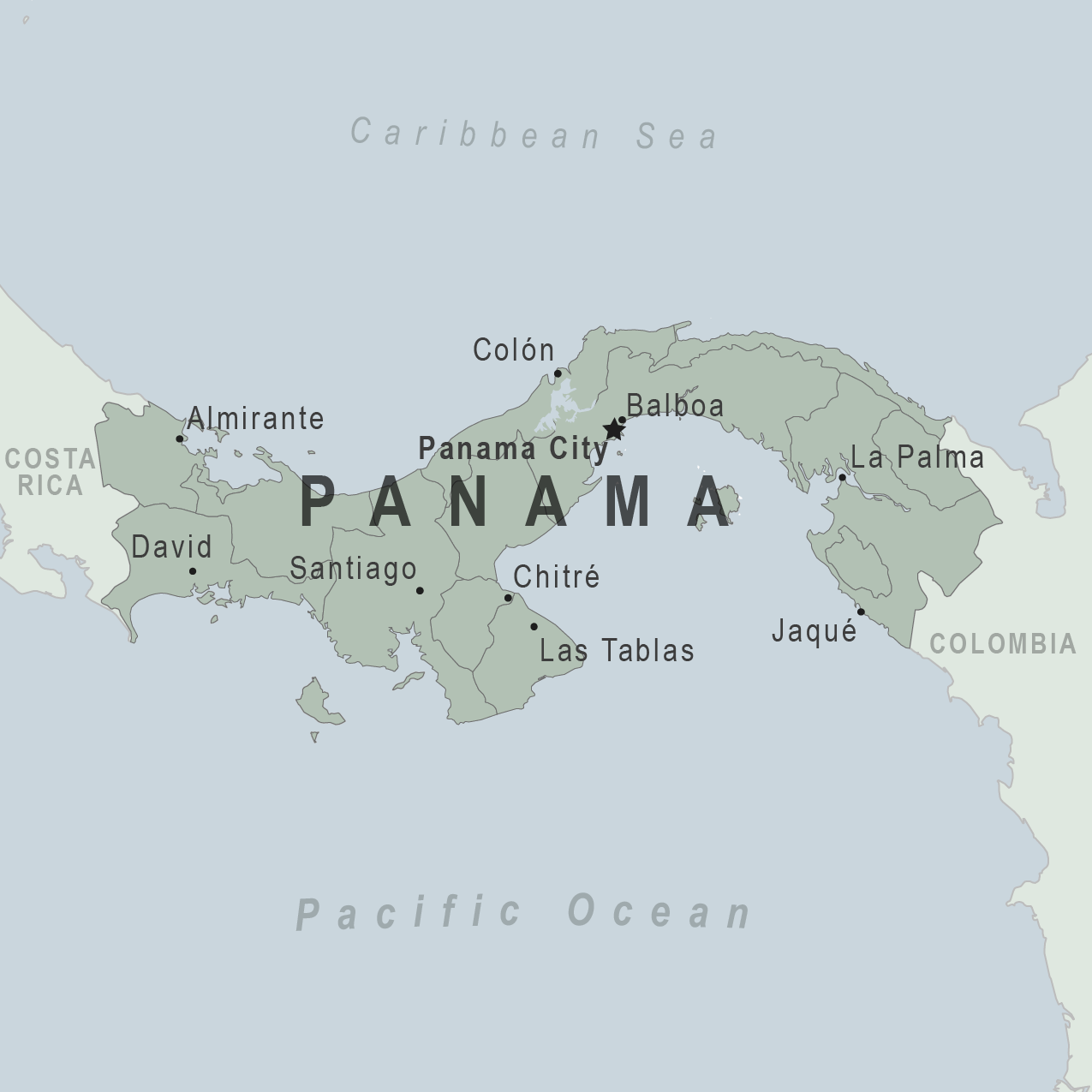
Be aware of current health issues in Panama. Learn how to protect yourself.
Level 1 Practice Usual Precautions
- Dengue in the Americas February 28, 2024 Dengue is a risk in many parts of Central and South America, Mexico, and the Caribbean. Some countries are reporting increased numbers of cases of the disease. Travelers to the Americas can protect themselves by preventing mosquito bites. Destination List: Argentina, Brazil, Colombia, Costa Rica, French Guiana (France), Guadeloupe, Guatemala, Haiti, Jamaica, Martinique (France), Mexico, Nicaragua, Panama, Paraguay, Peru, Saint Barthelemy, Saint Martin, Turks and Caicos Islands (U.K.)
⇧ Top
Check the vaccines and medicines list and visit your doctor at least a month before your trip to get vaccines or medicines you may need. If you or your doctor need help finding a location that provides certain vaccines or medicines, visit the Find a Clinic page.
Routine vaccines
Recommendations.
Make sure you are up-to-date on all routine vaccines before every trip. Some of these vaccines include
- Chickenpox (Varicella)
- Diphtheria-Tetanus-Pertussis
- Flu (influenza)
- Measles-Mumps-Rubella (MMR)
Immunization schedules
All eligible travelers should be up to date with their COVID-19 vaccines. Please see Your COVID-19 Vaccination for more information.
COVID-19 vaccine
Hepatitis A
Recommended for unvaccinated travelers one year old or older going to Panama.
Infants 6 to 11 months old should also be vaccinated against Hepatitis A. The dose does not count toward the routine 2-dose series.
Travelers allergic to a vaccine component or who are younger than 6 months should receive a single dose of immune globulin, which provides effective protection for up to 2 months depending on dosage given.
Unvaccinated travelers who are over 40 years old, immunocompromised, or have chronic medical conditions planning to depart to a risk area in less than 2 weeks should get the initial dose of vaccine and at the same appointment receive immune globulin.
Hepatitis A - CDC Yellow Book
Dosing info - Hep A
Hepatitis B
Recommended for unvaccinated travelers younger than 60 years old traveling to Panama. Unvaccinated travelers 60 years and older may get vaccinated before traveling to Panama.
Hepatitis B - CDC Yellow Book
Dosing info - Hep B
CDC recommends that travelers going to certain areas of Panama take prescription medicine to prevent malaria. Depending on the medicine you take, you will need to start taking this medicine multiple days before your trip, as well as during and after your trip. Talk to your doctor about which malaria medication you should take.
Find country-specific information about malaria.
Malaria - CDC Yellow Book
Considerations when choosing a drug for malaria prophylaxis (CDC Yellow Book)
Malaria information for Panama.
Cases of measles are on the rise worldwide. Travelers are at risk of measles if they have not been fully vaccinated at least two weeks prior to departure, or have not had measles in the past, and travel internationally to areas where measles is spreading.
All international travelers should be fully vaccinated against measles with the measles-mumps-rubella (MMR) vaccine, including an early dose for infants 6–11 months, according to CDC’s measles vaccination recommendations for international travel .
Measles (Rubeola) - CDC Yellow Book
Rabid dogs are commonly found in Panama. However, if you are bitten or scratched by a dog or other mammal while in Panama, rabies treatment is often available.
Consider rabies vaccination before your trip if your activities mean you will be around dogs or wildlife.
Travelers more likely to encounter rabid animals include
- Campers, adventure travelers, or cave explorers (spelunkers)
- Veterinarians, animal handlers, field biologists, or laboratory workers handling animal specimens
- Visitors to rural areas
Since children are more likely to be bitten or scratched by a dog or other animals, consider rabies vaccination for children traveling to Panama.
Rabies - CDC Yellow Book
Recommended for most travelers, especially those staying with friends or relatives or visiting smaller cities or rural areas.
Typhoid - CDC Yellow Book
Dosing info - Typhoid
Yellow Fever
Required for travelers ≥1 year old arriving from countries with risk for YF virus transmission. 1
Recommended for travelers ≥9 months old going to all mainland areas east of the Canal Zone including Darién Province, the indigenous provinces (comarcas indígena) of Emberá and Kuna Yala (also spelled Guna Yala), and areas of the provinces of Colón and Panamá, east of the Canal Zone. Not recommended for travel limited to the Canal Zone; areas west of the Canal Zone; Panama City (the capital); Balboa district (Pearl Islands) of Panamá Province; or the San Blas Islands of Kuna Yala Province.
Yellow Fever - CDC Yellow Book
Avoid contaminated water
Leptospirosis
How most people get sick (most common modes of transmission)
- Touching urine or other body fluids from an animal infected with leptospirosis
- Swimming or wading in urine-contaminated fresh water, or contact with urine-contaminated mud
- Drinking water or eating food contaminated with animal urine
- Avoid contaminated water and soil
Clinical Guidance
Avoid bug bites, chagas disease (american trypanosomiasis).
- Accidentally rub feces (poop) of the triatomine bug into the bug bite, other breaks in the skin, your eyes, or mouth
- From pregnant woman to her baby, contaminated blood products (transfusions), or contaminated food or drink.
- Avoid Bug Bites
Chagas disease
- Mosquito bite
Leishmaniasis
- Sand fly bite
- An infected pregnant woman can spread it to her unborn baby
Airborne & droplet
- Breathing in air or accidentally eating food contaminated with the urine, droppings, or saliva of infected rodents
- Bite from an infected rodent
- Less commonly, being around someone sick with hantavirus (only occurs with Andes virus)
- Avoid rodents and areas where they live
- Avoid sick people
Tuberculosis (TB)
- Breathe in TB bacteria that is in the air from an infected and contagious person coughing, speaking, or singing.
Learn actions you can take to stay healthy and safe on your trip. Vaccines cannot protect you from many diseases in Panama, so your behaviors are important.
Eat and drink safely
Food and water standards around the world vary based on the destination. Standards may also differ within a country and risk may change depending on activity type (e.g., hiking versus business trip). You can learn more about safe food and drink choices when traveling by accessing the resources below.
- Choose Safe Food and Drinks When Traveling
- Water Treatment Options When Hiking, Camping or Traveling
- Global Water, Sanitation and Hygiene | Healthy Water
- Avoid Contaminated Water During Travel
You can also visit the Department of State Country Information Pages for additional information about food and water safety.
Prevent bug bites
Bugs (like mosquitoes, ticks, and fleas) can spread a number of diseases in Panama. Many of these diseases cannot be prevented with a vaccine or medicine. You can reduce your risk by taking steps to prevent bug bites.
What can I do to prevent bug bites?
- Cover exposed skin by wearing long-sleeved shirts, long pants, and hats.
- Use an appropriate insect repellent (see below).
- Use permethrin-treated clothing and gear (such as boots, pants, socks, and tents). Do not use permethrin directly on skin.
- Stay and sleep in air-conditioned or screened rooms.
- Use a bed net if the area where you are sleeping is exposed to the outdoors.
What type of insect repellent should I use?
- FOR PROTECTION AGAINST TICKS AND MOSQUITOES: Use a repellent that contains 20% or more DEET for protection that lasts up to several hours.
- Picaridin (also known as KBR 3023, Bayrepel, and icaridin)
- Oil of lemon eucalyptus (OLE) or para-menthane-diol (PMD)
- 2-undecanone
- Always use insect repellent as directed.
What should I do if I am bitten by bugs?
- Avoid scratching bug bites, and apply hydrocortisone cream or calamine lotion to reduce the itching.
- Check your entire body for ticks after outdoor activity. Be sure to remove ticks properly.
What can I do to avoid bed bugs?
Although bed bugs do not carry disease, they are an annoyance. See our information page about avoiding bug bites for some easy tips to avoid them. For more information on bed bugs, see Bed Bugs .
For more detailed information on avoiding bug bites, see Avoid Bug Bites .
Stay safe outdoors
If your travel plans in Panama include outdoor activities, take these steps to stay safe and healthy during your trip.
- Stay alert to changing weather conditions and adjust your plans if conditions become unsafe.
- Prepare for activities by wearing the right clothes and packing protective items, such as bug spray, sunscreen, and a basic first aid kit.
- Consider learning basic first aid and CPR before travel. Bring a travel health kit with items appropriate for your activities.
- If you are outside for many hours in heat, eat salty snacks and drink water to stay hydrated and replace salt lost through sweating.
- Protect yourself from UV radiation : use sunscreen with an SPF of at least 15, wear protective clothing, and seek shade during the hottest time of day (10 a.m.–4 p.m.).
- Be especially careful during summer months and at high elevation. Because sunlight reflects off snow, sand, and water, sun exposure may be increased during activities like skiing, swimming, and sailing.
- Very cold temperatures can be dangerous. Dress in layers and cover heads, hands, and feet properly if you are visiting a cold location.
Stay safe around water
- Swim only in designated swimming areas. Obey lifeguards and warning flags on beaches.
- Practice safe boating—follow all boating safety laws, do not drink alcohol if driving a boat, and always wear a life jacket.
- Do not dive into shallow water.
- Do not swim in freshwater in developing areas or where sanitation is poor.
- Avoid swallowing water when swimming. Untreated water can carry germs that make you sick.
- To prevent infections, wear shoes on beaches where there may be animal waste.
Keep away from animals
Most animals avoid people, but they may attack if they feel threatened, are protecting their young or territory, or if they are injured or ill. Animal bites and scratches can lead to serious diseases such as rabies.
Follow these tips to protect yourself:
- Do not touch or feed any animals you do not know.
- Do not allow animals to lick open wounds, and do not get animal saliva in your eyes or mouth.
- Avoid rodents and their urine and feces.
- Traveling pets should be supervised closely and not allowed to come in contact with local animals.
- If you wake in a room with a bat, seek medical care immediately. Bat bites may be hard to see.
All animals can pose a threat, but be extra careful around dogs, bats, monkeys, sea animals such as jellyfish, and snakes. If you are bitten or scratched by an animal, immediately:
- Wash the wound with soap and clean water.
- Go to a doctor right away.
- Tell your doctor about your injury when you get back to the United States.
Consider buying medical evacuation insurance. Rabies is a deadly disease that must be treated quickly, and treatment may not be available in some countries.
Reduce your exposure to germs
Follow these tips to avoid getting sick or spreading illness to others while traveling:
- Wash your hands often, especially before eating.
- If soap and water aren’t available, clean hands with hand sanitizer (containing at least 60% alcohol).
- Don’t touch your eyes, nose, or mouth. If you need to touch your face, make sure your hands are clean.
- Cover your mouth and nose with a tissue or your sleeve (not your hands) when coughing or sneezing.
- Try to avoid contact with people who are sick.
- If you are sick, stay home or in your hotel room, unless you need medical care.
Avoid sharing body fluids
Diseases can be spread through body fluids, such as saliva, blood, vomit, and semen.
Protect yourself:
- Use latex condoms correctly.
- Do not inject drugs.
- Limit alcohol consumption. People take more risks when intoxicated.
- Do not share needles or any devices that can break the skin. That includes needles for tattoos, piercings, and acupuncture.
- If you receive medical or dental care, make sure the equipment is disinfected or sanitized.
Know how to get medical care while traveling
Plan for how you will get health care during your trip, should the need arise:
- Carry a list of local doctors and hospitals at your destination.
- Review your health insurance plan to determine what medical services it would cover during your trip. Consider purchasing travel health and medical evacuation insurance.
- Carry a card that identifies, in the local language, your blood type, chronic conditions or serious allergies, and the generic names of any medications you take.
- Some prescription drugs may be illegal in other countries. Call Panama’s embassy to verify that all of your prescription(s) are legal to bring with you.
- Bring all the medicines (including over-the-counter medicines) you think you might need during your trip, including extra in case of travel delays. Ask your doctor to help you get prescriptions filled early if you need to.
Many foreign hospitals and clinics are accredited by the Joint Commission International. A list of accredited facilities is available at their website ( www.jointcommissioninternational.org ).
In some countries, medicine (prescription and over-the-counter) may be substandard or counterfeit. Bring the medicines you will need from the United States to avoid having to buy them at your destination.
Malaria is a risk in some parts of Panama. If you are going to a risk area, fill your malaria prescription before you leave, and take enough with you for the entire length of your trip. Follow your doctor’s instructions for taking the pills; some need to be started before you leave.
Select safe transportation
Motor vehicle crashes are the #1 killer of healthy US citizens in foreign countries.
In many places cars, buses, large trucks, rickshaws, bikes, people on foot, and even animals share the same lanes of traffic, increasing the risk for crashes.
Be smart when you are traveling on foot.
- Use sidewalks and marked crosswalks.
- Pay attention to the traffic around you, especially in crowded areas.
- Remember, people on foot do not always have the right of way in other countries.
Riding/Driving
Choose a safe vehicle.
- Choose official taxis or public transportation, such as trains and buses.
- Ride only in cars that have seatbelts.
- Avoid overcrowded, overloaded, top-heavy buses and minivans.
- Avoid riding on motorcycles or motorbikes, especially motorbike taxis. (Many crashes are caused by inexperienced motorbike drivers.)
- Choose newer vehicles—they may have more safety features, such as airbags, and be more reliable.
- Choose larger vehicles, which may provide more protection in crashes.
Think about the driver.
- Do not drive after drinking alcohol or ride with someone who has been drinking.
- Consider hiring a licensed, trained driver familiar with the area.
- Arrange payment before departing.
Follow basic safety tips.
- Wear a seatbelt at all times.
- Sit in the back seat of cars and taxis.
- When on motorbikes or bicycles, always wear a helmet. (Bring a helmet from home, if needed.)
- Avoid driving at night; street lighting in certain parts of Panama may be poor.
- Do not use a cell phone or text while driving (illegal in many countries).
- Travel during daylight hours only, especially in rural areas.
- If you choose to drive a vehicle in Panama, learn the local traffic laws and have the proper paperwork.
- Get any driving permits and insurance you may need. Get an International Driving Permit (IDP). Carry the IDP and a US-issued driver's license at all times.
- Check with your auto insurance policy's international coverage, and get more coverage if needed. Make sure you have liability insurance.
- Avoid using local, unscheduled aircraft.
- If possible, fly on larger planes (more than 30 seats); larger airplanes are more likely to have regular safety inspections.
- Try to schedule flights during daylight hours and in good weather.
Medical Evacuation Insurance
If you are seriously injured, emergency care may not be available or may not meet US standards. Trauma care centers are uncommon outside urban areas. Having medical evacuation insurance can be helpful for these reasons.
Helpful Resources
Road Safety Overseas (Information from the US Department of State): Includes tips on driving in other countries, International Driving Permits, auto insurance, and other resources.
The Association for International Road Travel has country-specific Road Travel Reports available for most countries for a minimal fee.
For information traffic safety and road conditions in Panama, see Travel and Transportation on US Department of State's country-specific information for Panama .
Maintain personal security
Use the same common sense traveling overseas that you would at home, and always stay alert and aware of your surroundings.
Before you leave
- Research your destination(s), including local laws, customs, and culture.
- Monitor travel advisories and alerts and read travel tips from the US Department of State.
- Enroll in the Smart Traveler Enrollment Program (STEP) .
- Leave a copy of your itinerary, contact information, credit cards, and passport with someone at home.
- Pack as light as possible, and leave at home any item you could not replace.
While at your destination(s)
- Carry contact information for the nearest US embassy or consulate .
- Carry a photocopy of your passport and entry stamp; leave the actual passport securely in your hotel.
- Follow all local laws and social customs.
- Do not wear expensive clothing or jewelry.
- Always keep hotel doors locked, and store valuables in secure areas.
- If possible, choose hotel rooms between the 2nd and 6th floors.
Healthy Travel Packing List
Use the Healthy Travel Packing List for Panama for a list of health-related items to consider packing for your trip. Talk to your doctor about which items are most important for you.
Why does CDC recommend packing these health-related items?
It’s best to be prepared to prevent and treat common illnesses and injuries. Some supplies and medicines may be difficult to find at your destination, may have different names, or may have different ingredients than what you normally use.
If you are not feeling well after your trip, you may need to see a doctor. If you need help finding a travel medicine specialist, see Find a Clinic . Be sure to tell your doctor about your travel, including where you went and what you did on your trip. Also tell your doctor if you were bitten or scratched by an animal while traveling.
If your doctor prescribed antimalarial medicine for your trip, keep taking the rest of your pills after you return home. If you stop taking your medicine too soon, you could still get sick.
Malaria is always a serious disease and may be a deadly illness. If you become ill with a fever either while traveling in a malaria-risk area or after you return home (for up to 1 year), you should seek immediate medical attention and should tell the doctor about your travel history.
For more information on what to do if you are sick after your trip, see Getting Sick after Travel .
Map Disclaimer - The boundaries and names shown and the designations used on maps do not imply the expression of any opinion whatsoever on the part of the Centers for Disease Control and Prevention concerning the legal status of any country, territory, city or area or of its authorities, or concerning the delimitation of its frontiers or boundaries. Approximate border lines for which there may not yet be full agreement are generally marked.
Other Destinations
If you need help finding travel information:
Message & data rates may apply. CDC Privacy Policy
File Formats Help:
- Adobe PDF file
- Microsoft PowerPoint file
- Microsoft Word file
- Microsoft Excel file
- Audio/Video file
- Apple Quicktime file
- RealPlayer file
- Zip Archive file
Exit Notification / Disclaimer Policy
- The Centers for Disease Control and Prevention (CDC) cannot attest to the accuracy of a non-federal website.
- Linking to a non-federal website does not constitute an endorsement by CDC or any of its employees of the sponsors or the information and products presented on the website.
- You will be subject to the destination website's privacy policy when you follow the link.
- CDC is not responsible for Section 508 compliance (accessibility) on other federal or private website.
We’re on the road right now – join in on the fun and follow @thebrokebackpacker on IG!
- Meet the Team
- Work with Us
- Czech Republic
- Netherlands
- Switzerland
- Scandinavia
- Philippines
- South Korea
- New Zealand
- South Africa
- Budget Travel
- Work & Travel
- The Broke Backpacker Manifesto
- Travel Resources
- How to Travel on $10/day
Home » Central America » Travel Safety
Is Panama Safe for Travel? • (2024 Insider Tips)
Adventurous jungles, glorious beaches and both the Caribbean and Pacific lapping its shores! Add a sprinkle of some vibrant and colourful cities with the relics of colonial Spain. And top with a laid back local life, Panama is an all round AWESOME to visit.
Home to the famous Panama Canal, as well as the very infamous Darien Gap, Panama is the place to go for you if you are looking for proper adventures. It feels like something from a movie and is freaking epic.
Then again, those rainforests also make for a great place for Colombian rebel groups to hang out in. It also makes for a convenient place for drug trafficking gangs to use. Elsewhere, in the cities and towns, in crowded areas, tourist sights and public transport, theft is common…
So naturally, this may lead you to wonder about how viable a trip to Panama really is. You may well be asking, “How Safe is Panama?” and this is why we have created this insider’s guide to staying safe in Panama. From taxis and transport to advice for solo female travellers and even families, our guide has you covered.
There is no such thing as a perfect safety guide, as things change quickly. The question of “Is Panama Safe?” will ALWAYS have a different answer depending on who you ask.
The information in this safety guide was accurate at the time of writing. If you use our guide, do your own research, and practice common sense, you will probably have a wonderful and safe trip to Panama.
If you see any outdated information, we would really appreciate it if you could reach out in the comments below. Otherwise, stay safe friends!
Updated December 2023

Unlock Our GREATEST Travel Secrets!
Sign up for our newsletter and get the best travel tips delivered right to your inbox.
Is Panama Safe to Visit Right Now?
Safest places in panama, 12 top safety tips for travelling to panama, is panama safe to travel alone, is panama safe for solo female travellers, where to start your travels in panama, is panama safe for families, getting around panama safely, what to pack for your panama trip, getting insured before visiting panama, faqs about staying safe in panama, so, how safe is panama.
Yes, but with care. In general, backpacking in Panama is pretty safe. Based on an official report by the United States Foreign Agriculture Service, Panama had a total of 862, 206 visitors in just the first half of 2022. Tourists generally had no problem with their visit.
In fact, it’s one of the safest countries in the Central American region – people are friendly and there are plenty of laid-back rural areas to explore.
Straddling two continents, with two distinct coastlines (the Caribbean and North Pacific) connected by a world-famous canal, Panama is definitely of interest. Hiking, rainforests, mountains, culture – it’s all here, which is why its tourist levels have been on the rise recently.
With all those tourists coming in, obviously, it’s in Panama’s interests to keep them safe. Tourist police in the most visited areas (including Panama City, of course) make sure that visitors not only feel but are more secure.
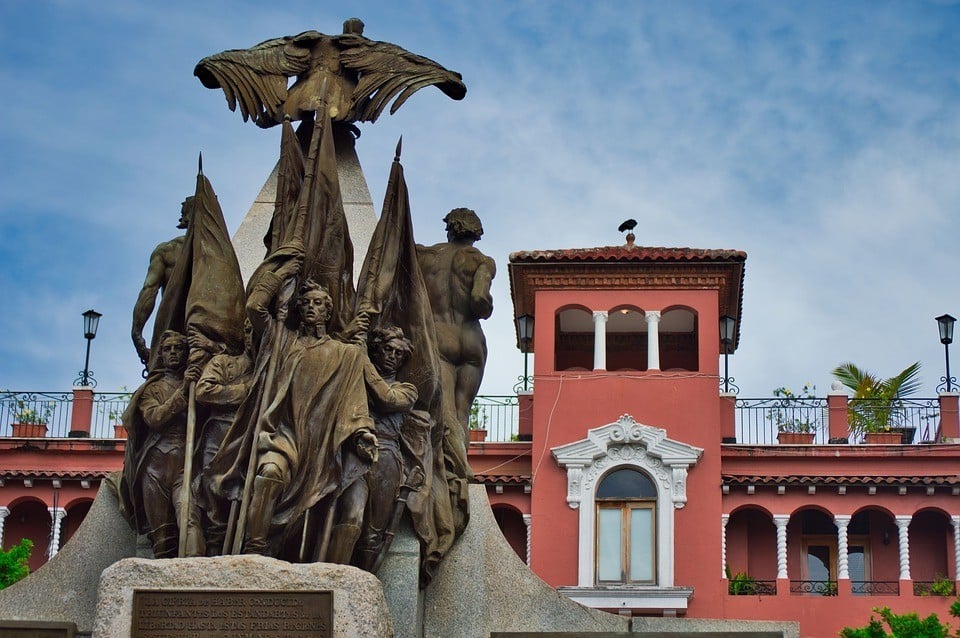
There is still a lot of crime to contend with in this Latin American nation. Serious crimes are mainly between rival drug trafficking gangs. On the whole, petty crime rates are actually pretty high; mugging and pickpocketing is a common issue, especially in the capital.
The risk of street crime, specifically to an unsuspecting tourist that walked into the wrong neighbourhood, is relatively high. Knowing where to stay in Panama City and other cities is important.
The Colombian Border (specifically the Darien Province) is a dangerous area. The violence that still sporadically affects Colombia can spill over the border into Panama.
Nature can pose a risk too, with everything from the rainy season and riptides, to dense jungle and nasty critters to consider.
There is A LOT to keep in mind when planning your trip to Panama, but as long as you’re an experienced traveller and come prepared with some safety hacks, you should have a pretty safe time in Panama right now.
Without further ado, let’s look into the details of what makes this country tick…
Check out our detailed where to stay guide for Panama so you can start your trip right!
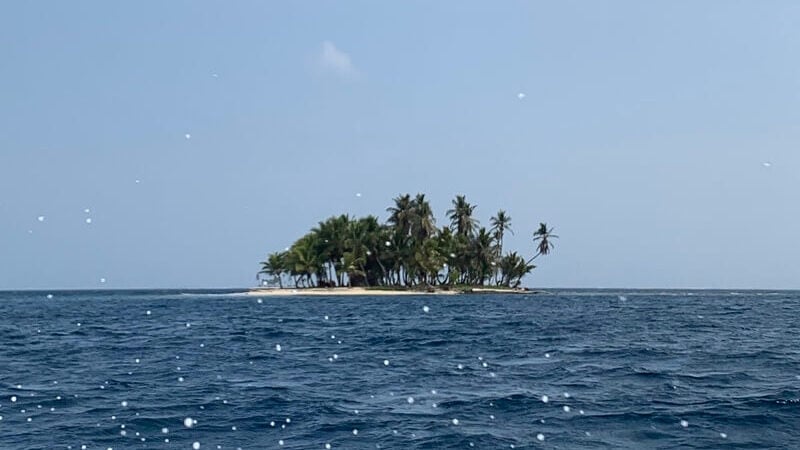
When choosing where you’ll be staying in Panama, a bit of research and caution is essential. You don’t want to end up in a sketchy area and ruin your trip. To help you out, we’ve listed the safest areas to visit in Panama below.
Boquete is a small hamlet located in the high-cloud forest of the Chiriqui mountains. It is a very refreshing place to visit, with brisk mountain air, whitewater rivers, and dozens of little plantations dotting the edge of the village. Those who want to relax in the jungle with a cup of organic, local coffee or enjoy adventure sports will like Boquete very much
El Valle de Anton
Thanks to its relatively close proximity to Panama City and its stunning natural setting, El Valle de Anton is one of the best eco-retreats in Panama and a favourite getaway for locals. Situated in the heart of a caldera and surrounded by leftover volcanic monoliths on all sides, Anton is a great place to go hiking or just escape to somewhere more bucolic.
El Valle de Anton is home to many Panamanian eco-retreats . People from all over Panama come here to reap the health benefits that volcanoes provide.
Bocas del Toro
This Panamanian island chain in the Caribbean Sea is full of colour, fun and a whole lot of chilled-out, beach-based stuff for all you people out there who love lounging around next to the sea.
Plenty of nature – from marine life to jungle critters – also means that this is a paradise for people who wanna see what Bocas del Toro’s natural side has to offer.
It’s known for its beaches and nature, sure, but oh boy does it have a partying side. Being backpacker-friendly, there are a ton of affordable hostels in Bocas too.
Places to Avoid in Panama
Unfortunately, not all places in Panama are safe. You need to be careful and aware of your surroundings pretty much anywhere you go in the world, and the same goes for visiting Panama. To help you out, we’ve listed a couple of no-go or caution areas below:
- Panama City – El Chorrillo, San Miguelito and Curundú are neighbourhoods in Panama City that are especially known for high crime statistics. Avoid completely if possible.
- The border area with Colombia – political tension, possible drug traffic and no attractions. It’s a no-brainer to stay away.
- The central province of Colon – there’s a high rate of street crime here that means heightened vigilance, or altogether avoidance – unless with a guide or tour group.
Side note: If you want to travel to Darien Province, you should only travel with an organised group – even then, you’ll only be allowed to areas where Panamanian police are surveilling. Never stray from your group and ensure that you register your presence with the Sena Front, which is Panama’s National Border Control.
It’s important to know that Panama is definitely not a super safe place, so a bit of caution and research before you start your travels will go a long way. If you want to increase your safety during your stay, read on for our insider travel tips. Stick to those and you won’t have a single issue in Panama.
Keeping Your Money Safe in Panama
One of the most common things to happen to you whilst travelling is losing your money. And let’s face it: the most annoying way for this to actually occur is when it’s stolen from you.
Petty crime is pretty much a problem all over the world.
The best solution? Get a money belt.

Stash your cash safely with this money belt. It will keep your valuables safely concealed, no matter where you go.
It looks exactly like a normal belt except for a SECRET interior pocket perfectly designed to hide a wad of cash, a passport photocopy or anything else you may wish to hide. Never get caught with your pants down again! (Unless you want to…)
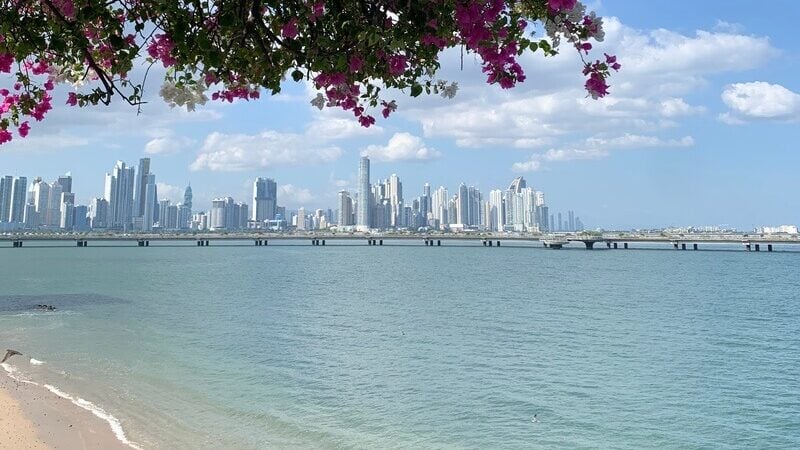
Panama has loads on offer for any kind of traveller. Although visitor numbers are increasing, there’s still a fair bit of crime going on in this Latin American country.
Here are my top travel safety tips…
- Don’t carry around large sums of money – having wads of cash makes you more conspicuous and could make you a target for thieves
- Try not to seem like a tourist – being loud, looking lost, dressing like a tourist… all no beuno
- Be careful when taking money out of ATMs – people have been attacked using them. Inside banks are best and avoid using them at night
- Be wary of pickpockets – they operate in the usual busy areas
- Only use registered taxi companies – more on this later, but you need to be aware that they can be sketchy
- Don’t get involved with drugs – even having a small amount can land you in prison for 15 years
- Take a good medical kit with you – you never know when you might need it!
- Learn some Spanish before you go – a few phrases will help read menus, ask for directions, and generally get around
- Cover up against mosquitoes – dengue fever and malaria are common. Cover up arms and legs and use repellent, especially at dawn and dusk
- Carry your passport – it’s a pain, but it’s required. No copies. Tourists have spent the night in prison because they haven’t been able to provide ID to police when asked.
- Always keep an emergency stash of cash – Never keep all your cards/ currency in one place. And hide it all from thieves with a hidden money belt .
- Don’t walk around topless off the beach – men or women. It’s strictly enforced and you’ll be stopped by the police
- Know what to do in the event of an earthquake – they happen here. Chiriqui Province gets numerous 5.5+ magnitude earthquakes
- Get a sim card – the benefits of maps, translation, information and being able to contact people is invaluable
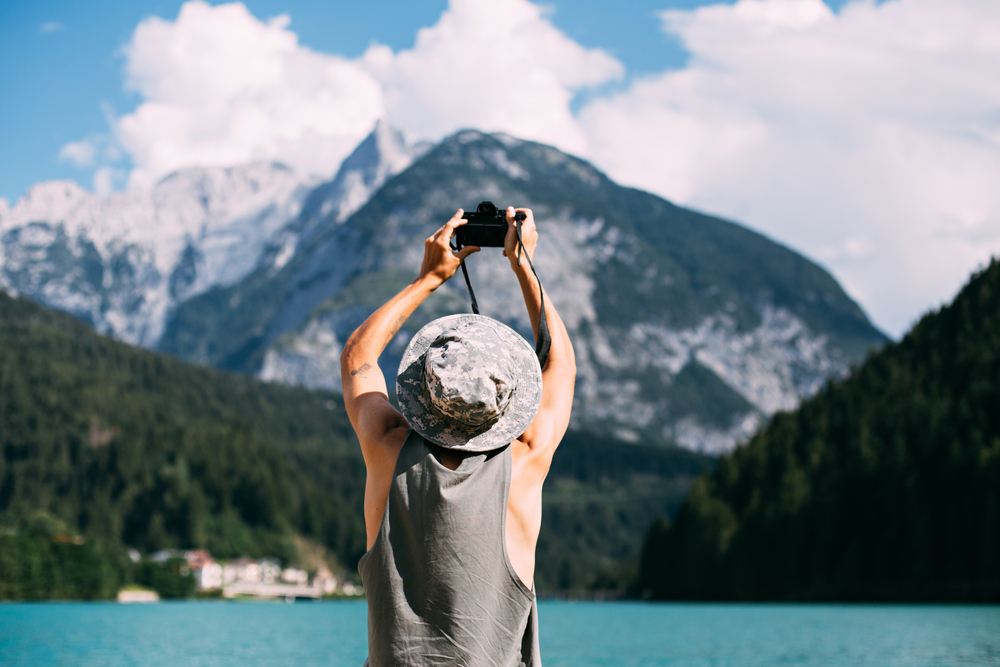
In Panama, solo travel is totally doable. I did it. I loved it.
There’s enough going on to keep you busy, and enough in terms of other travellers and friendly locals that you won’t feel lonely.
But, it won’t be 100% awesome all the time. Here are my Panama solo travel tips to help it go smoothly…
- Stay aware of your surroundings . Being solo, you only have yourself to rely on, which means you need to be extra cautious of who is around you and what is going on in your peripherals.
- If you’re going out hiking by yourself, make sure you go well prepared and pack enough supplies .
- If you are planning on going out into nature without a guide, you should definitely notify the staff at your accommodation (as well as any travel buddies or friends/family back home), just in case.
- Do your research on dangerous area s in places you’re visiting. This can be a combination of your own online research – hitting up travel groups on Facebook as well as forums – and asking locals.
- Don’t push yourself too much . Even though you’ve got this whole tick list of things to do (probably), know that you don’t have to do everything your guidebook recommends.
- Consider having multiple bank accounts . Having no way to access your money is not worth it.
- Research your accommodation in advance . Make sure that it’s in a good area of town, a secure building with staff that people mention (positively) in reviews.
In general, as a solo traveller, Panama is surprisingly safe.
However, you should definitely pay attention to your surroundings and not make yourself vulnerable to being a victim of crime. Not standing out, not being oblivious to situations and trusting your gut will help.
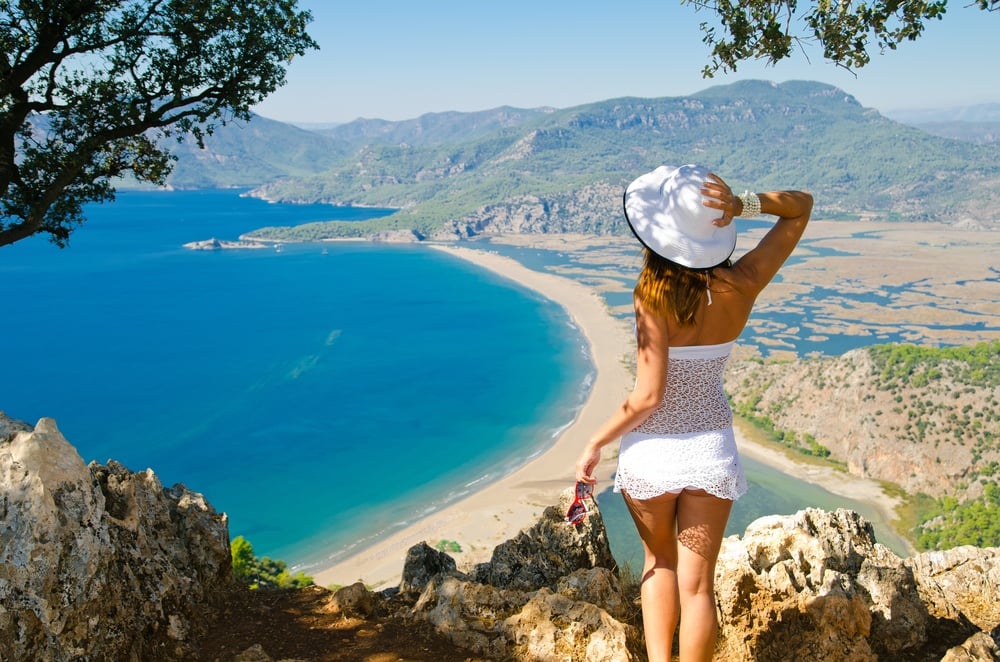
Panama is pretty safe for a solo female traveller. I met loads of ’em.
There’s nature to explore, beaches to admire, culture to soak up, locals to meet. It’s cool.
As a female in the world, you’re going to have to come across things like annoying men, more attention because you’re travelling solo, and some uncomfortable situations. Keep my Panama-specific solo female traveller tips in mind…
- Some men may hassle you in Panama , mainly in terms of flirtatious comments, horn honking, staring and (bizarrely) hissing. It’s best to simply ignore their behaviour.
- In general, it’s not a good idea to go hiking by yourself or exploring remote areas alone. This is best done with a tour guide, preferably in a group tour.
- When it comes to what to wear, you should dress modestly .
- You might want to consider making friends with some fellow travellers at your accommodation , so you can travel around and explore the country together. Either way, you won’t be with people 100% of the time, so it pays to be even more cautious than you usually would be.
- Don’t walk around at night – at all. It’s just not a good idea. With Panama’s crime rate, combined with you not knowing anything about the streets you’ll be walking around, it will just put you at risk.
- Be wary of taxis . It’s common for taxis to be shared, but this can be risky. Avoid the risk and pay a little more to have the taxi all to yourself instead.
Solo female travel in Panama may seem like a distant dream, but if you’ve travelled solo anywhere in Latin America before, you will know the sort of vibe to expect in this country.
With that in mind, it’s not somewhere I would recommend for first-time female travellers.
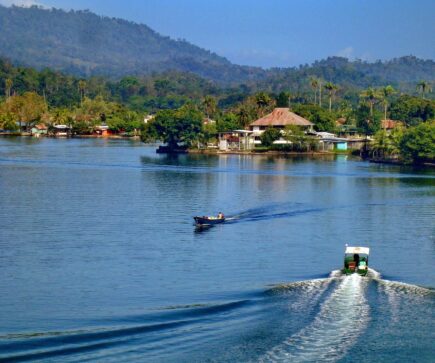
This charming island chain is one of the top spots for backpackers in Panama. Not just because it’s safe, but also because it’s affordable and offers some great parties.
As you might be able to guess, Panama IS a family-friendly society.
If you’re looking for a place to travel with your children, somewhere that’s definitely going to be an adventurous place to be, then this could be it.
There is some good infrastructure for travelling around here as well as a fair few family-friendly resorts.
Opt to go on a tour, which will take you on adventures into jungles and all sorts of other exciting things. There are many tour and travel agencies that are geared towards family vacations.
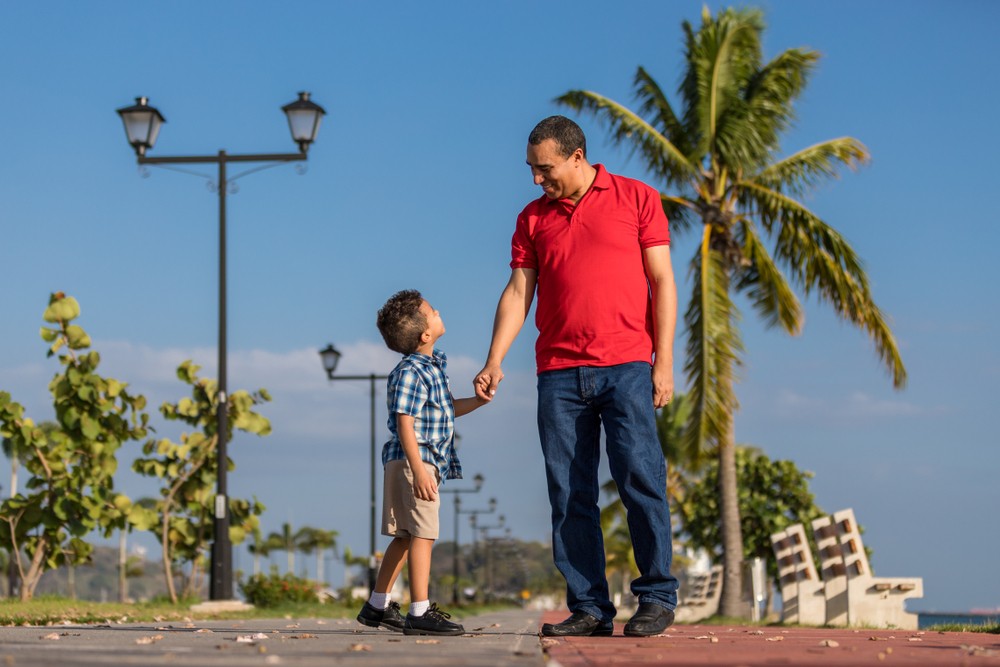
Unless you want to stay put in a resort, I wouldn’t recommend bringing children any younger than 4 as this could end up being a very stressful way to see the country.
Needless to say, it’s important to keep your children covered up from the sun (don’t forget sunscreen), as well as from mosquitoes (make sure you use child-friendly repellent). Be extra careful at beaches and ensure that your children don’t go too far from you at any time. Warn them of the dangers of the sea!
In Panama City, it’s best to stock up on supplies for your children such as nappies and baby food. Things like high chairs in restaurants, as well as children’s menus, don’t really exist – neither do baby changing facilities.
In general, Panama is safe for families. It’s an amazing destination. Tours are definitely an option for anybody travelling to the country with their family, but to make things even safer for yourself.
Panama has a surprisingly good standard of roads and a good system to go with it – in general, that is. However, that doesn’t necessarily mean that driving in Panama is a good idea.
The driving standards of its citizens are pretty low. Traffic causes a lot of congestion. There are lots of hazards to look out for. Secondary roads are also (often) in pretty bad shape
All in all, I wouldn’t recommend driving in Panama. Basically, it’s not worth it. Unless you’re really into your adventuring and part of your whole thing is to drive in rugged (or chaotic) places, I wouldn’t say driving is something you should do here.
As of recently, Uber does operate in Panama. Is Uber safe in Panama? Yes, Uber is also safe in Panama. It operates in Panama City and Panama City only.
Taxis are plentiful in Panama. Not only that, but they’re also very cheap. However, they can be a bit of a problem. Taxis in Panama aren’t easy – or super safe. ALWAYS agree on a price BEFORE entering the vehicle. Charm (and a bit of Spanish) always goes a long way.
The Panamanian government advises tourists to use the Metrobus system to “ensure your own safety” – a few Red Devils can be seen dotted around, but I don’t recommend using them.
Renting bicycles in some locations is a great, cheap way to get around too. Cycling in Panama works great in places like Bocas Del Toro, where you can always rent bikes or mopeds for super cheap!
There you have it: the transport in Panama is safe, reliable and cheap.
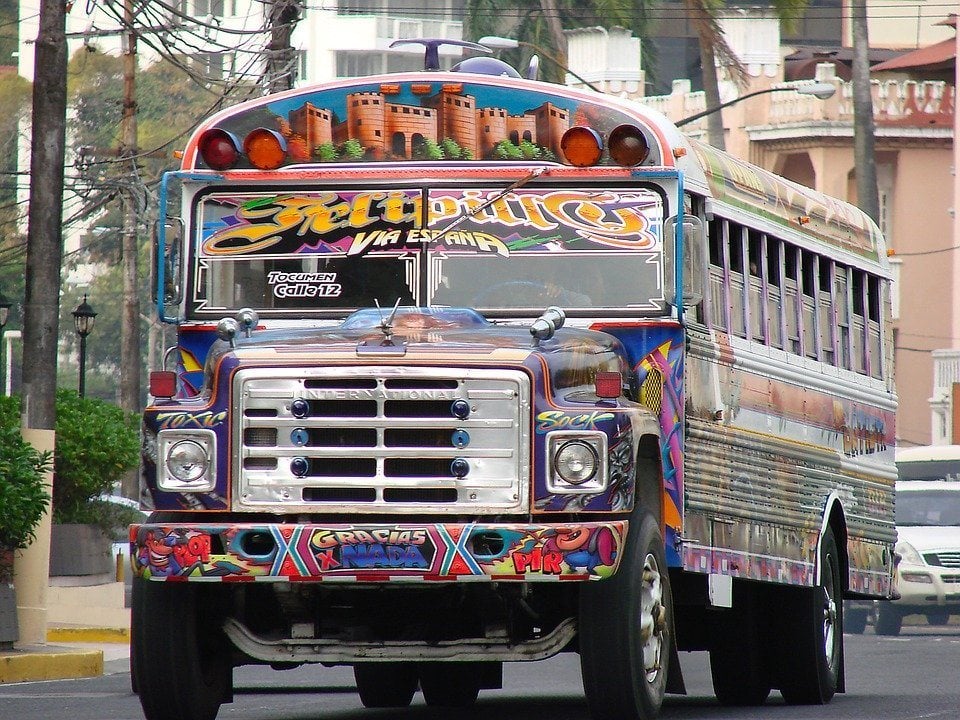
Everyone’s packing list is going to look a little different, but here are a few things I would never want to travel to Panama without…

Hanging Laundry Bag
Trust us, this is an absolute game changer. Super compact, a hanging mesh laundry bag stops your dirty clothes from stinking, you don’t know how much you need one of these… so just get it, thank us later.

A decent head torch could save your life. If you want to explore caves, unlit temples, or simply find your way to the bathroom during a blackout, a headtorch is a must.

Yesim stands as a premier eSIM service provider, catering specifically to the mobile internet needs of travellers.

Monopoly Deal
Forget about Poker! Monopoly Deal is the single best travel card game that we have ever played. Works with 2-5 players and guarantees happy days.

This is a regular looking belt with a concealed pocket on the inside – you can hide up to twenty notes inside and wear it through airport scanners without it setting them off.
Staying protected in 2024 is a no-brainer. If you’re worried about safety, cover your back with travel insurance.
ALWAYS sort out your backpacker insurance before your trip. There’s plenty to choose from in that department, but a good place to start is Safety Wing .
They offer month-to-month payments, no lock-in contracts, and require absolutely no itineraries: that’s the exact kind of insurance long-term travellers and digital nomads need.

SafetyWing is cheap, easy, and admin-free: just sign up lickety-split so you can get back to it!
Click the button below to learn more about SafetyWing’s setup or read our insider review for the full tasty scoop.
Here are some quick answers to common questions about safety in Panama.
Where should I not go in Panama?
Anywhere in Panama that seems slightly sketchy should be avoided. Neighbourhoods like El Chorillo and Santa Ana are known for gang activity, so better stay away!
Is Panama dangerous? / How dangerous is Panama?
Panama can definitely be dangerous if you’re looking for trouble. While there are no-go areas, there’s definitely a way to have a great and safe time in Panama. As long as you use your common sense and be careful, you should have a trouble-free trip.
Is Panama safe for a family vacation?
For adventurous and active families, Panama can be a great place. It’s definitely not the safest travel destination, but with a bit of research and precautions, you can have a great time with your family.
What should I avoid in Panama?
Avoid these things in Panama for a safe trip: – Don’t carry around large sums of money – Don’t look wealthy – Don’t get involved with drugs – Avoid being careless when getting money out of the ATM

Is Panama safe for American tourists?
YES! In fact, on my recent trip to Panama City and Bocas Del Toro, American Tourists were EVERYWHERE! Just be sure to exercise increased caution when in dangerous areas. (Just as any other foreign tourist should do).
Panama is statistically speaking one of the safest countries in Central America.
Even so, there are things about Panama that may make you think twice about visiting this country: theft from tourists is common, pickpocketing happens, and muggings can occur too. This isn’t like where you’re from (most likely, anyway) and will therefore require you to be more careful and cautious than usual.
The position of Panama, sandwiched between Central America and South America, occupying both the Caribbean and Pacific coasts, is both a blessing and a curse. You get the best of both worlds in terms of natural beauty on either side. You get the rainforest of the Darien Gap, but then again, it’s the funnel through which so much trafficking takes place, making a lot of the country unsafe to travel.
However, it’s all relative. You could come to Panama, stay in a resort, and be absolutely fine the entire time – no safety issues at all.
You could even have a tour organized when you plan to visit, meaning you get to travel around with a group of people and be led around by a knowledgeable guide (our recommendation). Independent travel, however, is possible: just be sensible with how you go and you’ll be fine.
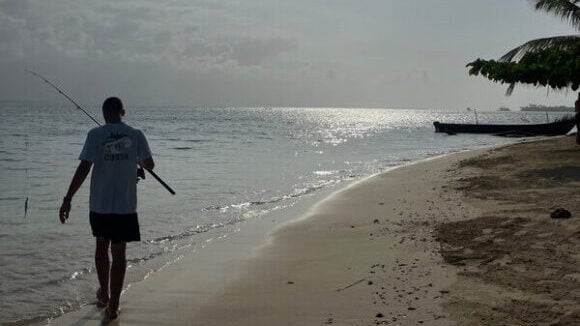
Looking for more info on traveling to Panama?
- Let me help you choose where to stay in Panama
- Swing by one of these fabulous festivals
- Plan the rest of your trip with our fantastic backpacking Panama travel guide!
- See exactly how to travel the world for a year , even if you’re broke
- Take a look at my expert travel safety tips learned from 15+ years on the road
Disclaimer: Safety conditions change all over the world on a daily basis. We do our best to advise but this info may already be out of date. Do your own research. Enjoy your travels!

And for transparency’s sake, please know that some of the links in our content are affiliate links . That means that if you book your accommodation, buy your gear, or sort your insurance through our link, we earn a small commission (at no extra cost to you). That said, we only link to the gear we trust and never recommend services we don’t believe are up to scratch. Again, thank you!
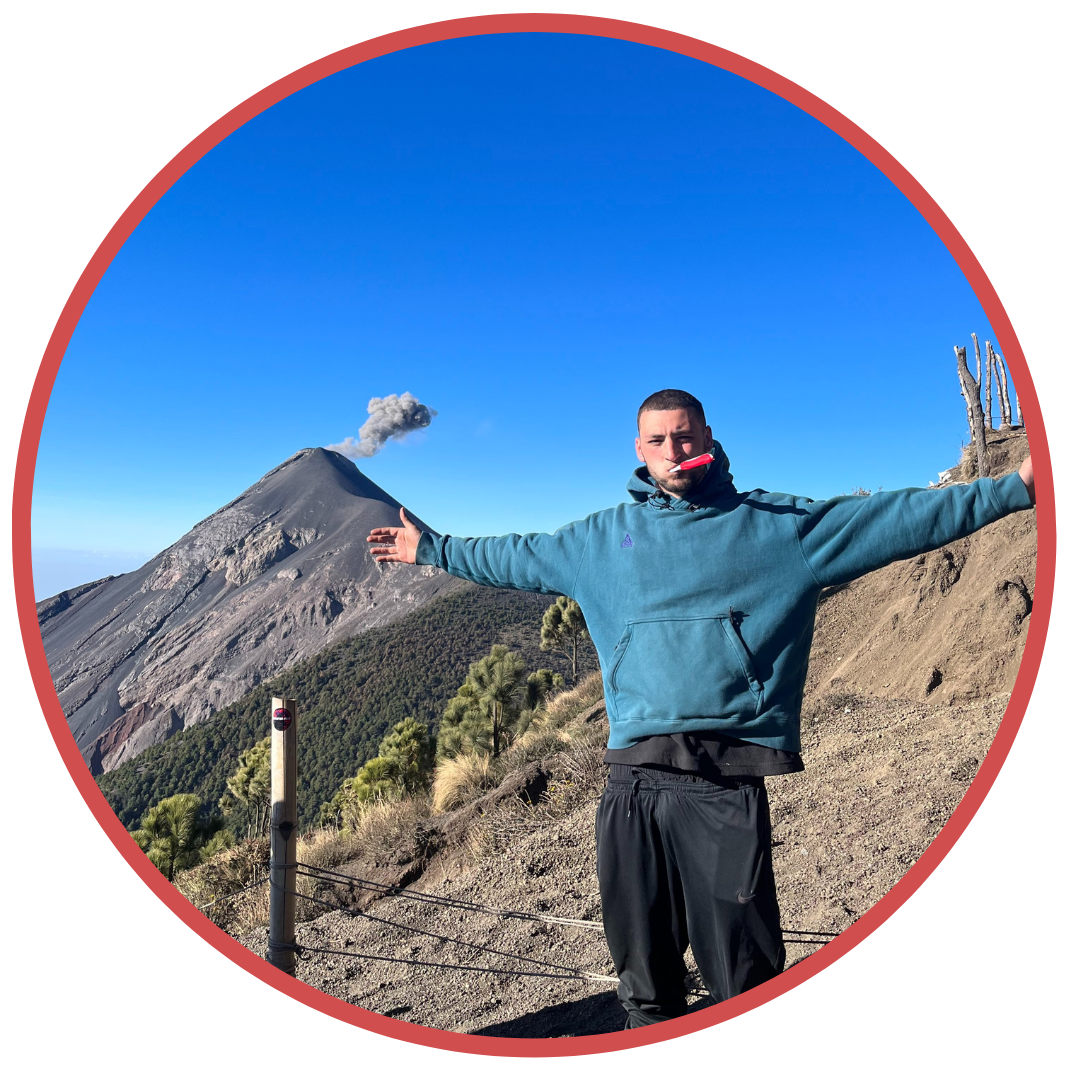
Joe Middlehurst
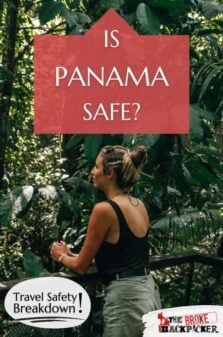
Share or save this post

I was stationed there in the early 1980’s, and I just returned from a tour there. I’m trying to spend the rest of my life there. A very BEAUTIFUL PLACE, without the HATE of a.m.e.r.i.K.K.K.a.
Leave a Reply Cancel reply
Your email address will not be published. Required fields are marked *
Save my name, email, and website in this browser for the next time I comment.
Notify me of followup comments via e-mail.

Is Panama Safe? Travel Safety Tips and Recommendations 2023
Panama, a Central American country bridging two oceans, is a popular destination for travelers looking for adventure and natural beauty. But before going, the question is: Is Panama safe?
Crime rates in Panama are low compared to other countries. But, in large cities like Panama City, crime is higher in some areas. So, be aware of your surroundings and avoid displaying valuables openly. Keep personal belongings secure and only carry essential items when exploring.
Use hotel safes to store important documents and do research beforehand. Consult official advisories and seek guidance from locals or knowledgeable experts. This way, you can stay safe and have a memorable trip. Don’t forget that if you’re careful, Panama is a place of danger with a side of adventure!
Understanding the Safety Situation in Panama
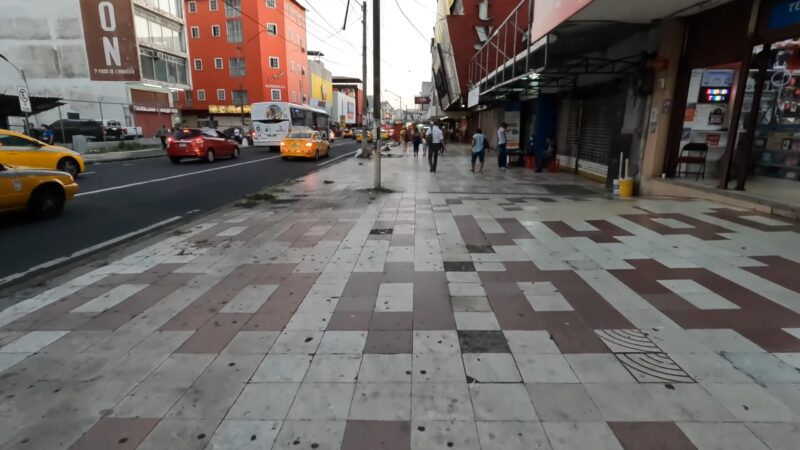
Anyone planning a trip to Panama should understand the safety situation. It has its own unique risks, but you can still have a great time if you’re careful.
Panama City is generally safe during the day. But, like most cities, there are areas that are best avoided at night. Stick to busy areas and use reliable transportation.
When visiting the beaches and other sites outside the city, stay informed of the potential risks. Some remote areas may not have access to medical care or emergency services. Research your destination before you go and bring a first-aid kit and plenty of water.
Crime rates in Panama have gone down, but petty thefts can still occur. Be aware of your surroundings and keep valuable items secure. Don’t show wealth or expensive jewelry.
Don’t miss out on the amazing experiences in Panama. Know the basics and be prepared, and you can have a fantastic vacation. So pack up and enjoy!
Researching and Planning Your Trip
To ensure your safety when planning a trip to Panama, research crime statistics and safety measures. Choose accommodations and locations that prioritize safety. Pack the right safety essentials for a secure journey. With these sub-sections in mind, let’s delve into the details of researching and planning your trip for a safe and worry-free experience.
Researching Crime Statistics and Safety Measures
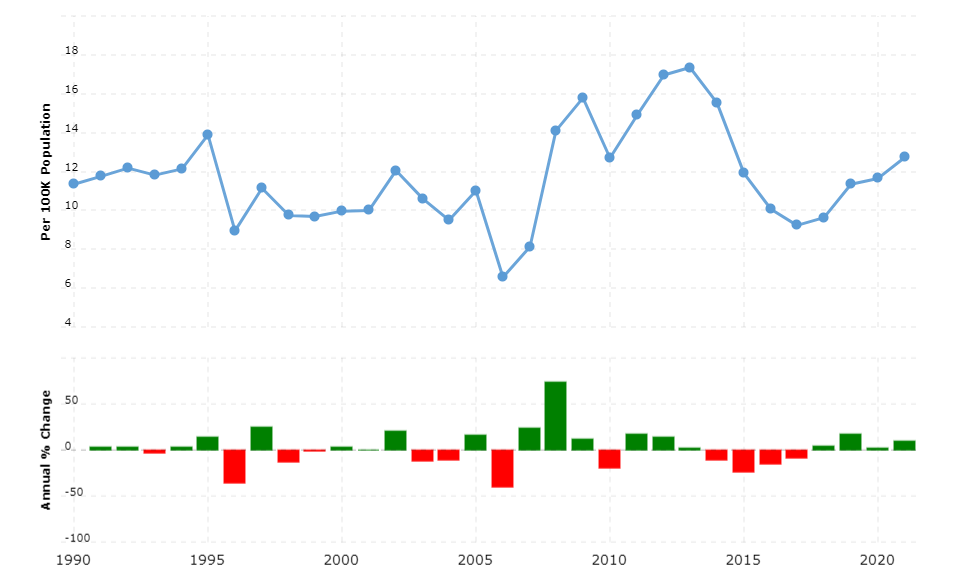
Researching crime stats and safety measures is essential to plan a successful trip. Gather info about your destination’s crime rate and safety precautions. Below is a table of popular tourist spots and their safety numbers:
Consider unique aspects of each destination too. Learn local customs and traditions to blend in. Also, stay updated with travel advisories.
To ensure safety:
- Dress appropriately and avoid flashy jewelry or accessories.
- Keep a copy of important documents separate.
- Use reliable transportation.
- Stay vigilant in crowded areas.
Research crime statistics and safety measures to make informed decisions. Even in safe spots, practice common sense precautions for worry-free travel. When choosing accommodations, prioritize both comfort and security.
Choosing Safe Accommodations and Locations
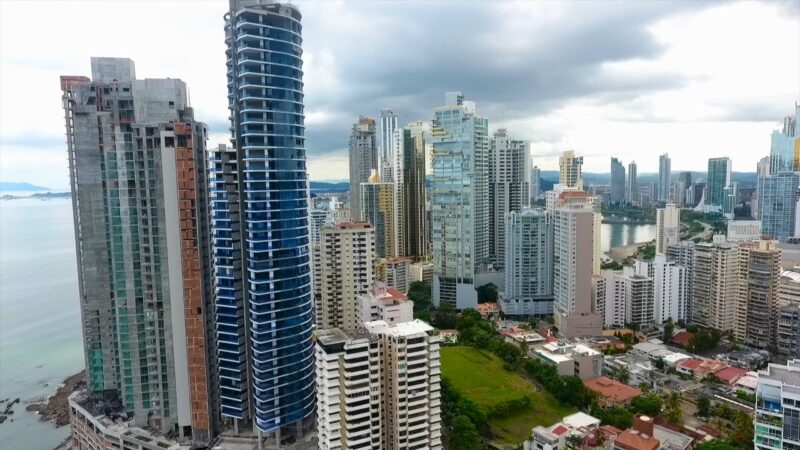
Safety is a top priority when planning a trip. Here are 5 key points to keep in mind:
- Research the crime rate in the area ahead of booking accommodation. Check reliable sources for info on safety and recent incidents.
- Read reviews from previous guests to get a sense of the security measures in place. Look for mentions of lit entrances, cameras, and secure access points.
- Choose locations that are popular with tourists. These areas usually have better infrastructure, more police, and less petty crime.
- Avoid secluded places, especially if you’re traveling alone. Go for places near public transport or with easy access to main roads.
- If unsure about safety, reach out to local tourism authorities or forums for advice.
Remember to consider any unique details specific to your destination that could affect safety. For example, some cities have stricter alcohol rules and pickpocketing hotspots. So, stay informed to make informed decisions.
[su_note note_color=”#93e6b7″]Pro Tip: Invest extra time into researching safe neighborhoods within a city. This can boost your travel experience while keeping you safe.[/su_note]
Don’t leave home without the essentials, unless you want an adventure!
Packing the Right Safety Essentials
Packing the right safety essentials is a must for any trip. Here are the main points to remember:
- Pack a fully equipped first aid kit, including band-aids, antiseptic wipes and necessary meds.
- Bring items for protection against the elements – sunscreen, insect repellent, hat etc.
- Don’t forget safety gear for activities – a whistle, life jacket if near water etc.
- Bring a portable charger or extra batteries for your electronic devices.
- Carry a photocopy of important documents – keep them separate from originals.
- Let someone know your travel plans – who you’ll be staying with, how long you’ll be gone.
Research the safety requirements of your destination too. With these tips in mind, you can travel with confidence and peace of mind. And stay safe in Panama with a map, compass and a blindfold, just in case you stumble on hidden treasure or a drug lord!
Navigating Panama Safely
To navigate Panama safely with transportation, street smarts, and personal safety in mind, and to deal with scams and petty theft, follow these travel safety tips and recommendations. Remain vigilant and prepared as you explore the beautiful country, ensuring a safe and enjoyable experience while avoiding potential risks.
Transportation Safety Tips
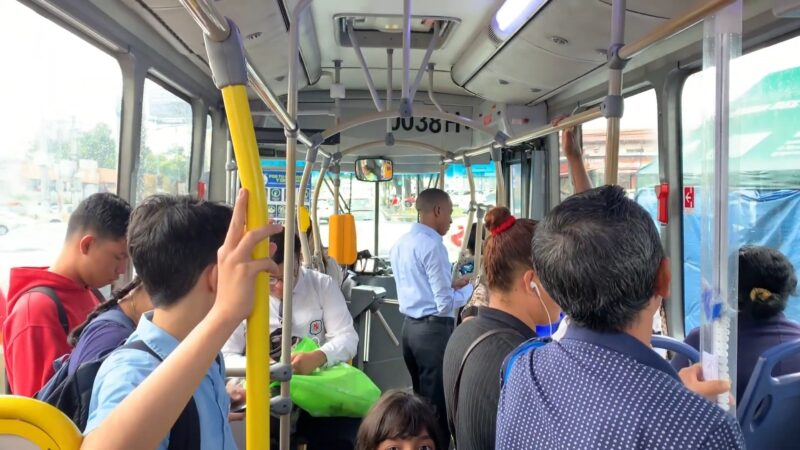
Prioritize safety while traveling in Panama! Here’s what to do for a secure transportation experience:
- Find reputable companies – licensed taxis or registered tour operators.
- Use taxi apps or call trusted taxi services for rides.
- Be careful during crowded peak hours on public transport.
- Keep your belongings close and avoid displaying expensive items.
- Stay alert and aware, especially in busy tourist areas.
- Pre-plan routes and tell someone you trust your travel plans.
For an extra layer of safety, carry a copy of your passport or ID with you. According to the U.S. Department of State, exercise vigilance when in Panama. Follow these tips and you’ll be sure to have a safe journey!
Street Smarts and Personal Safety
Street smarts and personal safety are key when visiting Panama. Keep these points in mind to stay safe:
- Be aware of your surroundings, people, and activities nearby.
- Don’t show off valuables or carry a lot of money.
- Stay in well-lit, crowded areas, especially at night.
- Watch out for strangers offering help or chatting.
- Use reliable transportation like registered taxis or reputable ride-sharing services .
Also, remember that thievery can happen anywhere. Secure your belongings and keep them in sight.
Follow these tips for extra safety:
- Walk with confidence and purpose.
- Dress modestly and don’t wear flashy items.
- Know where to turn if you need help: police stations, tourist info centers, and embassies.
Here’s a cautionary tale: A traveler was strolling around Panama City when they noticed danger. They took a taxi to get out fast. The driver said the area was known for crime. This shows that you should trust your gut and make informed decisions when in unfamiliar places.
In conclusion, be street smart and prioritize safety when in Panama. That way, you’ll have an amazing time without putting yourself at risk. Stick to the ‘sticky finger rule’: if it looks too good to be true, it probably is – unless you’re a magician!
Dealing with Scams and Petty Theft
Be aware of your surroundings at all times. Don’t show off valuable items such as phones or jewelry, as it may draw unwanted attention. Always keep your stuff secure. Use a money belt or discreet pouch for your passport, cash, and other important documents. Opt for registered taxis or pre-booked transfers so you don’t get scammed or robbed.
Learn about common scams in Panama. Understand techniques used by pickpockets and scam artists, like distraction tactics or fake police. Some parts of Panama have higher rates of theft than others. So, before you go, get info on the area, such as neighborhoods and cities. That way, you can make smart decisions and stay safe.
To remain safe in Panama:
- Dress modestly and try to speak basic Spanish . This can help to avoid scammers targeting tourists.
- Research good accommodations with good security . Read reviews about safety and consider staying in central areas.
- Use ATMs with caution . Stick to machines inside banks or well-lit places. Cover your PIN when entering it .
By following these tips, you can minimize chances of becoming a victim of scams and theft in Panama. Remember that being prepared and aware are essential for a safe and enjoyable experience of this beautiful country. From beaches to rainforest hikes, Panama offers amazing experiences.
Exploring Panama’s Attractions and Activities
To explore Panama’s attractions and activities with a focus on safety, delve into coastal areas and beach safety, outdoor adventures and wildlife encounters, and cultural experiences and nightlife safety. Each sub-section provides solutions for enjoying these activities in a secure and enriching manner.
Coastal Areas and Beach Safety
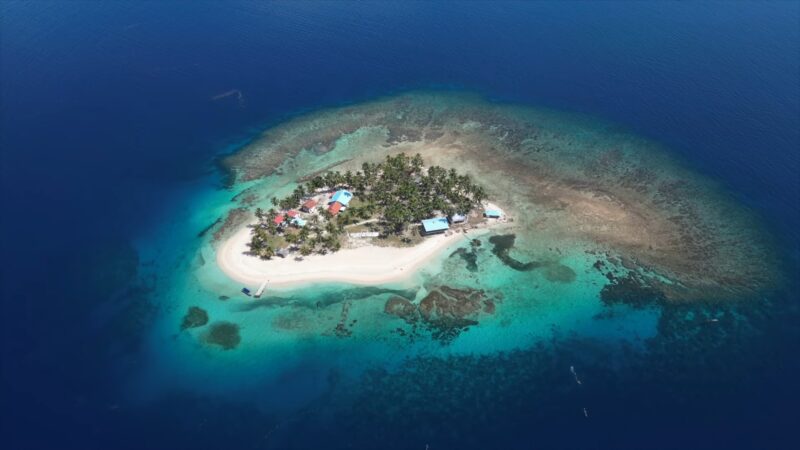
Panama boasts stunning coastlines on both the Caribbean Sea and the Pacific Ocean . Enjoy its beautiful sandy beaches, turquoise waters, and vibrant marine life. Safety is key when visiting Panama’s coastal areas – swim in areas with lifeguards. Heed warning signs and instructions from authorities about beach conditions.
For some unique activities, take a boat tour around the Pearl Islands archipelago . Snorkel and dive in its crystal-clear waters. Head to Bocas del Toro on the Caribbean coast for surfing, paddleboarding, and kayaking. Explore coral reefs or go on a journey through mangrove forests.
Be aware of local wildlife like sea turtles and jellyfish. Panama holds the record for having an Atlantic and Pacific coast within 75 kilometers (47 miles) – the shortest distance in the world! Enjoy varied coastal experiences in this extraordinary destination.
Outdoor Adventures and Wildlife Encounters
In Panama, outdoor adventures and wildlife encounters are thrilling experiences for nature lovers. Take a hike between the lush rainforests, zip-line through the treetops, and spot colorful birds such as toucans and jaguars.
Venture into national parks like Soberania and Darien for biodiversity, and witness playful monkeys, sloths, and exotic frogs. For an incredible experience, travel to Coiba Island National Park for crystal-clear waters filled with marine life.
Did you know that Panama is home to over 900 bird species? With such a diverse avian population, birdwatchers flock to this tropical haven. If you’re brave enough, end the night with some karaoke in Panama City!
Cultural Experiences and Nightlife Safety
Unlock the cultural secrets of Panama! During the day, explore museums and historical sites, like the Panama Canal Museum and Biomuseo . At night, enjoy the vibrant nightlife – but with safety in mind.
Be aware of your surroundings. Stick to well-lit areas and trusted establishments. For added security, travel in a group or hire reputable transportation services.
Consider joining guided tours or hiring local guides. They can help you navigate the language barrier and local customs. Research popular nightlife spots in advance to choose venues known for their security measures. Ask locals and fellow travelers for recommendations on safe places to visit after dark.
Combine cultural exploration with safety and you’ll have an unforgettable experience.
Interacting with the Locals
To navigate your interactions with the locals in Panama, equip yourself with cultural etiquette and respectful behavior, as well as tips for language and communication. Understanding the customs and showing respect will help you connect with the people and make your experience in Panama more enriching and enjoyable.
Cultural Etiquette and Respectful Behavior
When going to a foreign country, it is wise to be aware of accepted behavior and etiquette. For example, in some cultures, removing shoes when entering a home is respectful. Learning how to greet locals the right way speaks volumes. In Japan, bowing is the way to go.
Additionally, different countries have different body language rules . Eye contact may be seen as a sign of confidence in some places, but rude in others. Furthermore, each culture has certain taboo topics . Politics and personal matters should be avoided in conversation to show respect for their values. And lastly, learning key phrases is essential when interacting with locals.
Language and Communication Tips
Learn a few basic phrases in the local language. Respect their culture and it may open doors to meaningful interactions.
Notice non-verbal communication. Gestures and facial expressions can be different across cultures, so observe and adjust.
Show patience and understanding when there’s a language barrier. Speak slowly and use simple words. Be ready to repeat or rephrase.
Look out for communication styles. Pay attention to tone of voice and body language to understand the intentions. Remember cultural context. Some countries take time for small talk before business, others prefer to be direct.
I once went to Japan and got lost with no knowledge of the language. Approaching locals was difficult, but I gave it a try. They helped me find my way back – their hospitality was amazing. It reminded me of human connection beyond language.
When traveling, effective language skills can make it unforgettable. Appreciate the culture and adapt communication style. To make friends, consider offering street tacos as bribes!
Additional Safety Considerations
To ensure your safety when traveling to Panama, it is essential to consider additional safety factors. Explore the political stability and potential for protests in the country, as well as the preparation required for natural disasters and emergencies. By addressing these sub-sections, you will be equipped with valuable knowledge to navigate potential risks and enjoy a secure travel experience in Panama.
Political Stability and Protests
Political stability and protests can affect safety when traveling. To make informed decisions, consider the following:
- Analyze the current political climate of the destination.
- Evaluate potential for civil unrest or demonstrations.
- Monitor news for any recent protests or events.
- Consider the influence of social media on protests.
- Observe the government’s response to past protests.
History, changes in leadership, and international relations can also affect political stability and protests.
Here’s a story that illustrates the importance of understanding a destination’s political stability. Tourists visiting a country during an election period found themselves in a protest. They were unaware of the possible risks and had to rely on local authorities to get to safety.
This story emphasizes the importance of staying informed about political stability and protests before traveling. Being aware and prepared can help prevent danger during unexpected events.
Travelers should stay up-to-date with current affairs and seek guidance from reliable sources. Have a backup plan too, as it’s never wise to put all your eggs in one earthquake-prone basket.
Natural Disasters and Emergency Preparedness
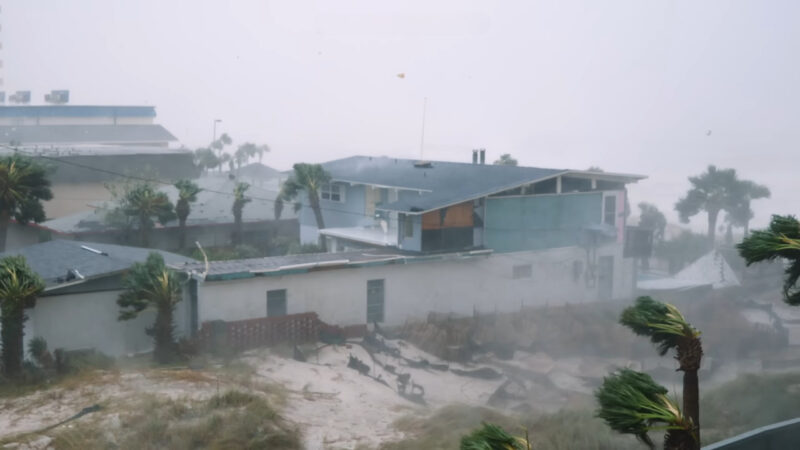
Natural disasters can strike any time, so emergency preparedness is key. To stay safe, you must be equipped and informed. Here are some safety tips:
- Keep up-to-date on local news and weather.
- Make an emergency plan with family – including a meeting point, contacts, supplies.
- Prepare an emergency kit with food , water, medications, flashlights, batteries, first aid.
- Know how to switch off utilities in case of emergencies.
- Learn evacuation routes and shelters near you.
Also, secure heavy furniture/appliances to prevent them from toppling. Install smoke detectors/carbon monoxide alarms at home for early warnings.
FEMA says only 39% of Americans have an emergency plan. So, remember: staying safe is serious! Unless you’re a featherweight boxer – then you can take it lightly.
My personal experience in Panama is that it’s a safe, enchanting destination for tourists. It’s loaded with culture, spectacular scenery, and friendly hospitality – making it a great place to visit. Still, like when you travel anywhere, it’s important to be mindful and take precautions.
Panama has made great strides in terms of safety. The government has taken steps to reduce crime and guarantee the safety of travelers. Plus, there’s a dependable police force that strives to keep order and protect locals & visitors.
When you explore Panama, it’s best to stay in populated areas and not wander off into isolated places. Also, keep watch of your possessions as there can be thievery at crowded spots or tourist attractions. Utilize hotel safes and secure lockers to provide an extra layer of security for your valuables.
Something special about Panama’s safety measures is their ‘ Turismo Seguro ‘, or ‘Safe Tourism’ police force. These officers patrol touristy spots, guaranteeing the safety of visitors and offering help if needed. This is a great initiative to make sure tourists feel safe.
To get a better understanding of Panama’s safety, here’s a real story. I once chatted with a traveler who’d just been to Panama. She had plenty of positive things to say about her trip, and mentioned feeling secure in all the places she visited – from Panama City to the tranquil beaches of Bocas del Toro.
Frequently Asked Questions
Is panama safe for travelers.
Yes, Panama is generally a safe country for travelers. Like any other destination, it’s important to take precautions and be aware of your surroundings, but overall, Panama is considered safe for tourists.
Are there any areas in Panama that should be avoided?
While Panama is generally safe, it’s recommended to avoid certain areas, especially at night. These include some parts of Panama City, such as El Chorrillo and Curundu, as well as remote parts of the Darien Province . It’s always a good idea to research and follow the advice of local authorities before visiting any specific areas.
What are some general safety tips for traveling in Panama?
- Stay vigilant and be aware of your surroundings at all times.
- Avoid displaying expensive jewelry or electronics in public.
- Use reputable transportation options and avoid unmarked taxis.
- Keep your belongings secure and be cautious of pickpockets.
- Follow any travel advisories issued by your government.
- Respect local customs and traditions to avoid any potential misunderstandings.
Is it safe to drink tap water in Panama?
In most urban areas of Panama, the tap water is considered safe to drink. However, it’s always a good idea to carry a reusable water bottle and fill it with filtered or bottled water, especially in more remote or rural regions.
Are there any specific health concerns in Panama?
There are a few health concerns to be aware of when traveling to Panama. These include mosquito-borne diseases such as dengue, Zika, and malaria in certain regions. It’s advisable to take necessary precautions, such as using mosquito repellent and wearing long-sleeved clothing, especially if you are visiting tropical or rural areas.
What should I do in case of an emergency while in Panama?
In case of an emergency, dial 911 in Panama for immediate assistance. It’s also recommended to have the contact information for your embassy or consulate readily available. Familiarize yourself with the location of nearby hospitals or medical facilities before your trip.
Related Posts:
- Finding an Escort in Panama City: Tips and Recommendations
- Guatemala vs. Panama: Comparing Culture, History, and Travel
- Planning the Perfect Panama Vacation: Tips and Destinations
- 13 Things to Do in Panama City in 2023 - Must-See…
- Panama vs. Argentina Football Matches: Highlights and Recap
- Argentina vs. Panama: National Football Team Match…
We’re sorry, this site is currently experiencing technical difficulties. Please try again in a few moments. Exception: request blocked
16 things to know before you visit Panama City in 2024

Mar 10, 2024 • 8 min read
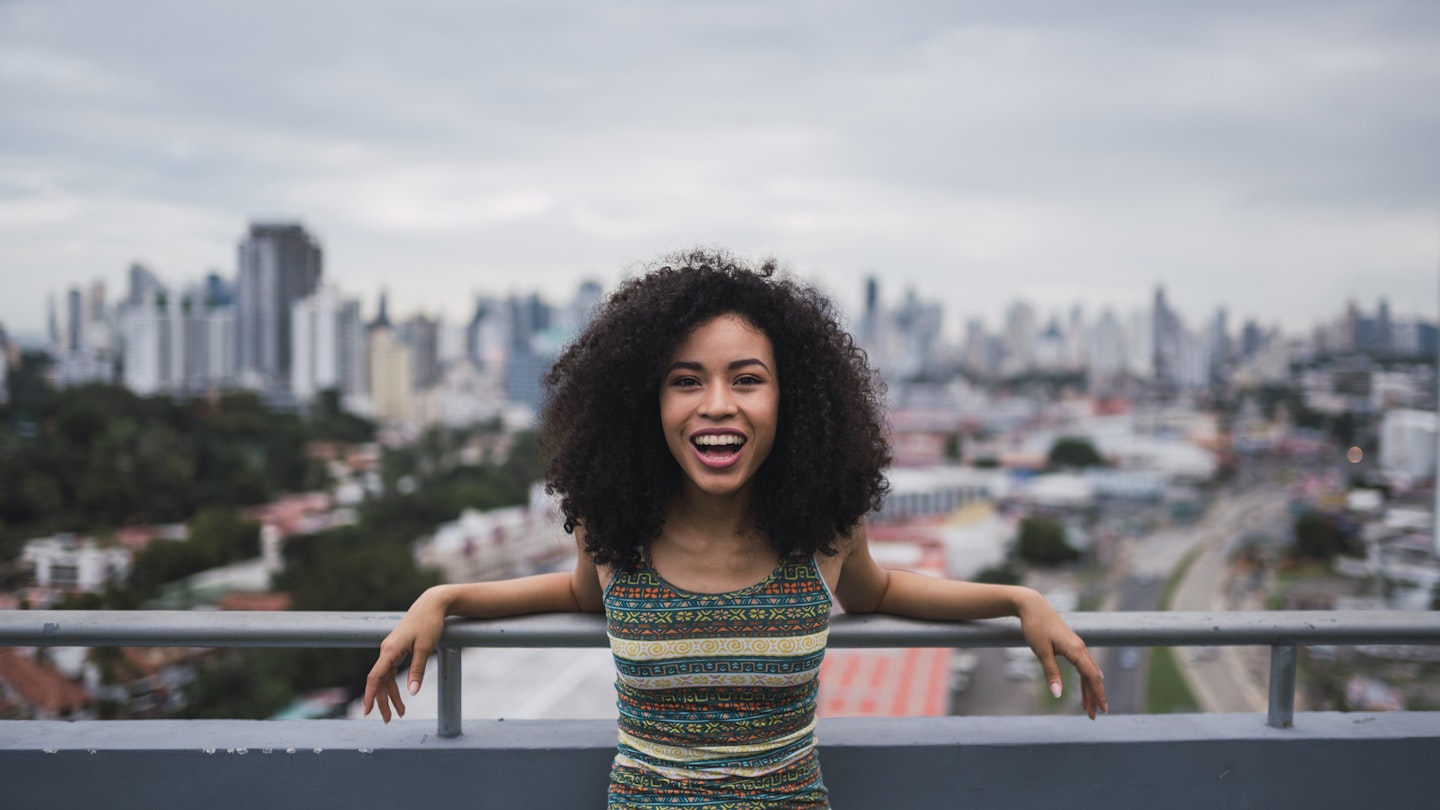
Get prepared for your visit to Panama City with our guide to what you need to know before you go © Westend 61 / Getty Images
Panama's capital is a cosmopolitan cityscape with a skyline dominated by gleaming skyscrapers and streets full of culture, incredible food and enticing attractions.
Explore on foot and take a stroll along the bay while the Pacific breeze keeps you cool, before exploring Panama City's different neighborhoods and finding its colonial history etched on every street.
Tourist crime here is low and most are of the low-key, opportunistic type you'll encounter in any major city. Keep your wits about you, avoid the more rough-and-tumble parts of town and you'll be just fine.
From planning your trip to local etiquette, here’s what you need to know before traveling to Panama City .
1. Where you stay depends on your budget and needs
Every neighborhood has its advantages and disadvantages. With cobblestone streets and Spanish colonial architecture, the historic quarter of Casco Viejo is the most memorable and romantic part of the city.
It has lots of high-end restaurants, luxury lofts and swanky rooftop bars, but a dearth of budget-friendly places to eat and its public transport links aren’t the best.
The Calidonia district in the southern part of the city occupies a grid of streets from Plaza 5 de Mayo to Calle 42 Este. Avenida Central bustles with market stalls, and the roads to the south are dotted with budget-friendly hotels.
The district is also near plenty of Metro trains and buses . You can pick up cheap street food during the day when kitchens open for local hospital staff and civil servants. After dark, however, Calidonia becomes shady and downbeat with limited dining options.
To the east of Calidonia, the so-called banking district is a patchwork of several districts or corregimientos , including modern and emerging neighborhoods that host the lion’s share of high-end lodgings and Airbnb rentals.
There are a few hostels and not nearly enough economical hotels. Many decent restaurants are dispersed throughout the banking district but are not always within walking distance.
If you’re in town to party, the Marbella and Bella Vista neighborhoods have great access to the bars and clubs on Calle Uruguay. El Cangrejo is an entertainment zone with a casino, good Metro train links on Vía España and a parade of restaurants on Vía Argentina.

2. Time your visit for budget-friendly deals and great weather
The high season coincides with the dry season – mid-December to early April – when prices are generally higher. The major festivals of Christmas, New Year, Carnival and Semana Santa see a price increase in the capital, but not as much as the beaches , where most city-dwellers spend the holidays.
Mid-April to early December is the cheapest time to visit Panama City, as long as you don’t mind getting soaked by the rain.
Most deluges last only an hour or two in the afternoon, but the season gets wetter as it goes on. In the depths of it, the skies can be overcast for days, but the rains are usually intermittent and the cloud cover can bring relief from the relentless Panamanian sun.
3. You're better off with a Metro card than a car
Although a car is good for day trips out of town, don’t plan on driving much in the city. The one-way road system is baffling, city thoroughfares are often congested, and diversions are par for the course.
Instead, use Panama City’s public transport system , which includes a fleet of air-conditioned buses and Central America’s first-ever Metro train. Buy a three-in-one “RapiPass” upon arrival and gain access to Metro trains and buses, and the departure gates at Albrook bus station.
4. Always keep a stash of low-denomination bills
You'll need to show your ID and sign a register if you pay for anything with a higher bill than US$20. Counterfeit money is an issue in the country, so all $50 and $100 bills will be scrutinized in Panama.
5. Don’t smoke in public
Legislation introduced in 2008 banned smoking in public places. People who smoke in non-designated areas are subject to fines of $25–100.

6. Dress for comfort but look sharp
Panamanians like to dress up and look their best. The ostentatious displays of fashion on display in Obarrio include stiletto heels that somehow survive the assault course of the city’s pavements.
When socializing, casual attire is fine, but avoid wearing shorts and sandals to nice restaurants or social functions.
7. Tip hotel cleaning staff
If you stay in a hotel, leave a tip for the person who cleans your room – US$2–3 a day is fine. A 10% tip is often added in good restaurants, but not always – check the bill before paying.
In low-key local eateries, you may leave some loose change for the server. Unless they help with luggage, taxi drivers don’t expect a tip.
8. Don’t use drugs
Although Panama City is steeped in narco dollars, Panamanian society frowns on drug use, and the law does not tolerate it. If the police find you in possession of even small quantities of marijuana, you could spend several years in a Panamanian prison.
9. Don’t expect people to speak English
Panama City Spanish is Caribbean Spanish – extremely fast and heavily laden with jerga (slang). If Spanish is not your first language, you may struggle to catch it.
Don’t expect to find many English speakers during your day-to-day transactions. English is widely spoken in the business community, but not much outside of it, and mastering a few basic Spanish phrases will help you get around.
10. It's safe to drink tap water
The tap water in Panama City is perfectly safe to drink. Save on plastic waste by refilling water bottles at a faucet. If you prefer purified water, you can refill at the 20-liter garrafones in most hotel lobbies.
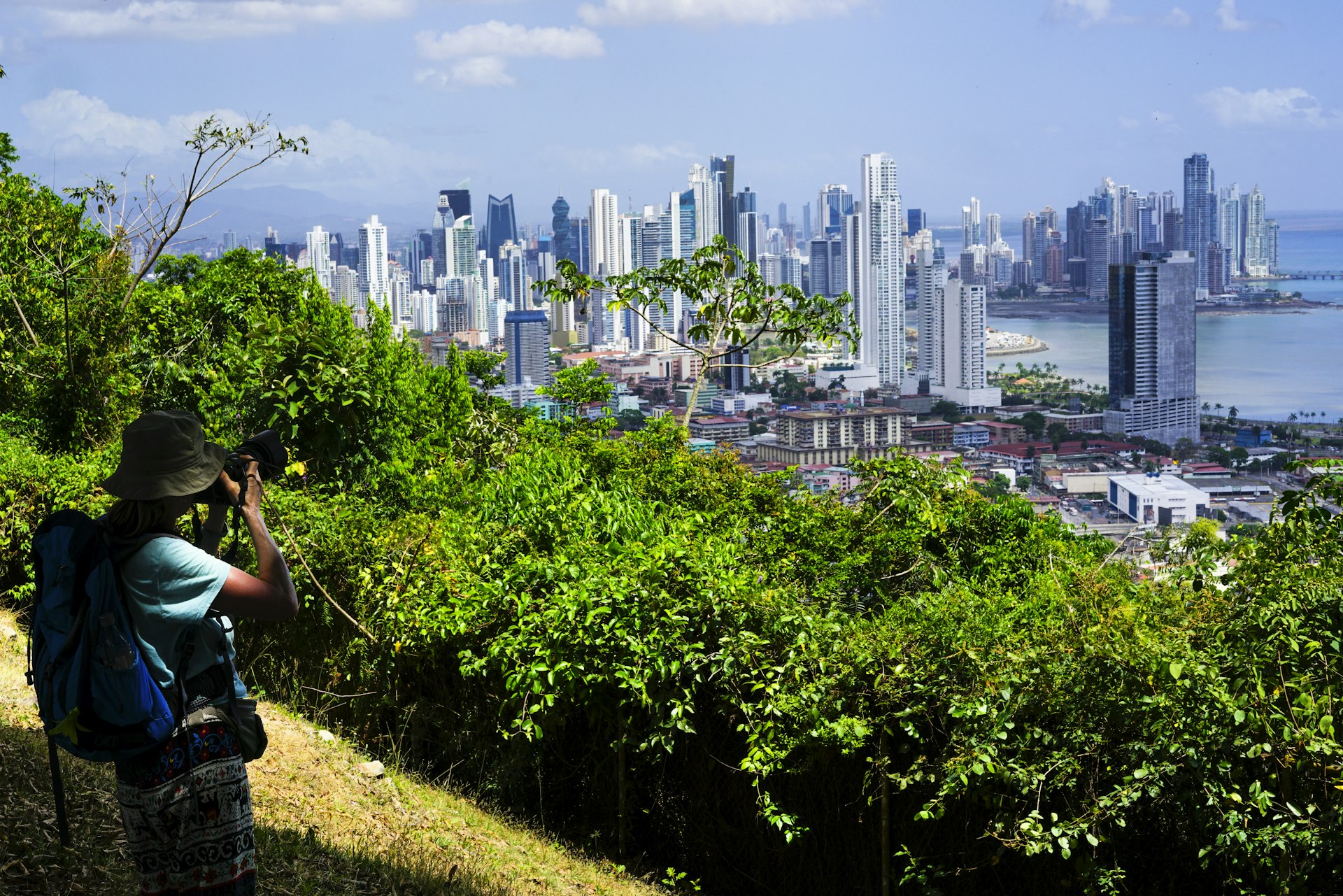
11. Prepare for environmental hazards
Panama City is an urban hothouse scratched out of the jungle. The elements are fierce – humidity is often 100%. You should take a day or two to relax and acclimate to the heat if you come from a cold-weather country.
Always apply sunscreen before going outside and keep an adequate water supply handy. Wear light clothes and a hat to keep the sun off your face. Bring a sturdy umbrella if you visit during the wet season.
Panama City suffers from flash floods during heavy downpours. If you get caught in a storm, you could end up wading through deep puddles. Traffic is generally heavy, and many parts of the city are not pedestrian-friendly. People living with asthma may find their symptoms are aggravated by fumes.
Sadly, the Bay of Panama is a dump for industrial effluence and untreated sewage, so the oceanfront malecón sometimes reeks.
12. Be aware of common scams
Scammers operate in all big cities and some target tourists. Be wary of strangers who tell unfortunate and earnest stories that end with them asking for money. If it seems suspicious, it probably is. Watch out for fake tour guides who ask for payment in advance and then stand you up.
Old-school taxi scams that involve going around the houses to increase the fare can happen anywhere in the world, but in Panama City, it’s common for taxis to simply overcharge. There are no meters in the cabs.
Fares are supposed to be based on zones, but in practice, they rarely are. If you look foreign, taxi drivers will bump up the fare. It's best to negotiate and agree on the price beforehand.
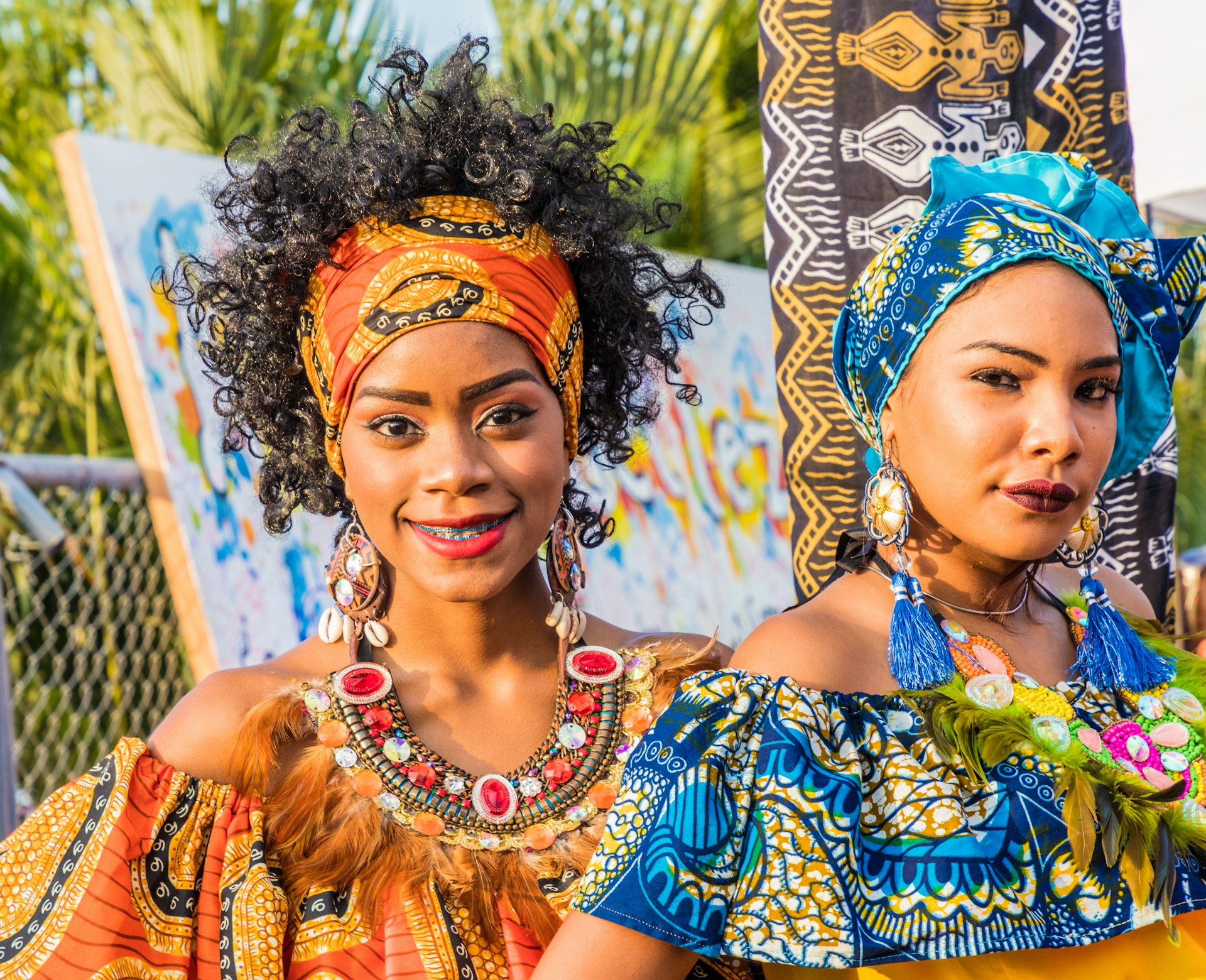
13. Solo women travelers may receive unwanted attention
Panama City is typically safe for solo women travelers, but it's best to avoid walking alone at night in Casco Viejo, Santa Ana or Calidonia. Women may receive attention from chatty men on Metro trains or buses. If a man won’t leave you alone, ask a nearby older woman to assist.
14. Steer clear of sketchy neighborhoods
Thirty years ago, Casco Viejo was dicey. Today, things have somewhat improved, but there are still pockets of the old neighborhood where you should exercise caution.
If you’re staying in Casco Viejo, the 20-minute walk from the nearest Metro train station, 5 de Mayo, is risky at night. Use a taxi or an Uber instead. To the west of Casco Viejo, the neighboring El Chorrillo district is very dangerous and neglected. You should avoid this neighborhood entirely.
The district of Santa Ana, north of Casco Viejo, is bisected by the pedestrianized peatonal , a lively shopping street that is safe to walk during the day; stay alert in the crowds. The side roads east of the peatonal are sketchy, and you shouldn’t wander around them.
At its north end, the peatonal connects with Plaza 5 de Mayo, the National Assembly, a Metro station, a bus terminal and a grimy confluence of roads and flyovers. The area is lively into the evening, but stay alert and use a vehicle after 11pm.
North of 5 de Mayo, Avenida Central strikes into Calidonia district with street vendors and hustle. It's fine to explore in the day, but don’t flaunt expensive equipment or jewelry. Calidonia is spooky and seedy after dark. Avoid run-down or poorly lit streets.
15. Keep your documents handy
Everyone is legally required to carry a photo ID at all times in public in Panama. Tourists should carry their passport or a photocopy of their passport with the photo page and immigration entry stamp.
16. LGBTIQ+ travelers are welcome
Attitudes in rural Panama are somewhat conservative but less so in Panama City. LGBTIQ+ travelers are unlikely to encounter prejudice, and discrimination based on sexual orientation and gender identity is prohibited by Panamanian law. There’s a lively gay scene in Casco Viejo and El Cangrejo.
This article was first published August 2022 and updated March 2024
Explore related stories
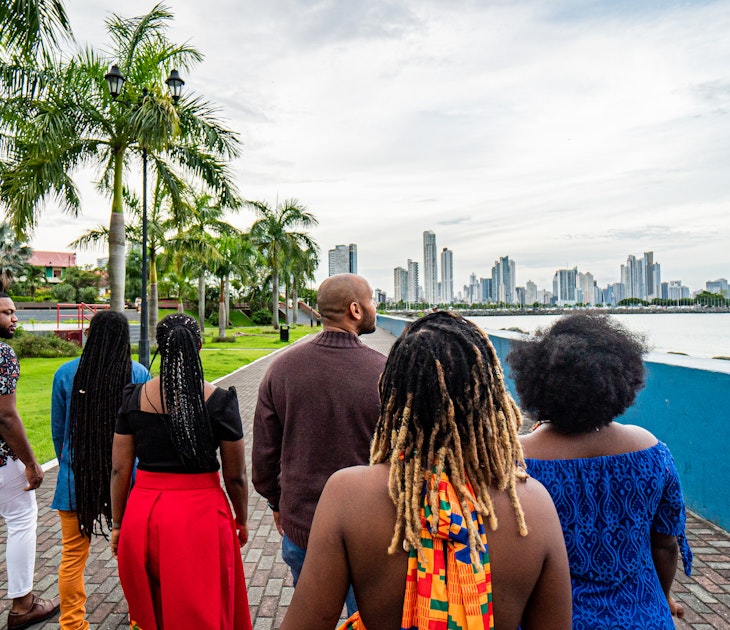
Public Transport
Dec 23, 2023 • 6 min read
Panama may be small, but its attractions are mighty and not always easy to get to. Here's everything you need to know about getting around Panama.

Dec 20, 2023 • 7 min read
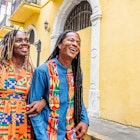
Dec 3, 2023 • 7 min read
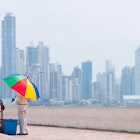
Dec 1, 2023 • 6 min read
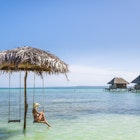
Oct 10, 2023 • 6 min read
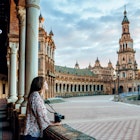
Sep 29, 2023 • 9 min read

Mar 14, 2023 • 5 min read
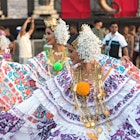
Mar 12, 2023 • 7 min read
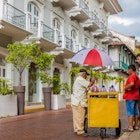
Mar 11, 2023 • 7 min read
- Travel Guides
Is Panama safe?
Panama is a very safe country. The people here are friendly and the medical services, especially in Panama City , are great. Crime isn’t a problem in most places, but there are a few areas that tourists should avoid, including the city of Colón, poorer parts of Panama City, and some regions of the Darién . Be sure to wear sunscreen while you’re visiting and exercise caution while hiking in the forest or swimming in the ocean. There are hospitals in larger cities and clinics in smaller towns. If any emergency arises, call 911 for an ambulance or 104 for the police.
Frequently asked questions
Can’t find the answer you’re looking for? Reach out to our local experts .
What should I do in case of an emergency in Panama?
In case of a medical emergency, dial 911—this will call the ambulance service. If the ambulance does not arrive promptly, however, try to grab a taxi and get to the nearest hospital. There are hospitals in most cities, and smaller towns will have clinics where you can receive medical care. Prescription and non-prescription drugs can be purchased at a pharmacy.
For other emergencies, you can reach the police by calling 104 or the fire department by calling 103. If you still have questions or are uncertain about whom to call, you can call directory assistance for help – they can be reached by calling 102. The embassies of most countries – including the U.S., Canada, and the UK – are located in Panama City, should you require any additional legal help.
What are the medical facilities like in Panama?
Panama has great medical facilities and doctors, particularly in Panama City and other large cities. Many doctors speak English and provide high-quality care for their patients. Outside of larger cities there are regional hospitals and clinics. Doctors are on-site and at most places an appointment is not necessary. There are also pharmacies scattered across Panama where travelers can purchase both prescription and non-prescription drugs. The cost of medical care or medicine is usually pretty cheap. Travelers who are considering visiting more adventurous, remote places may want to consider buying travel insurance.
Get your personalized travel insurance quote here .
Are there many insects in Panama?
Panama is a tropical country and does have its fair share of bugs. It is, however, not as bad as you might think, and with the proper amount of protection you will be fine.Sand flies (known locally as chitras), who tend to bite ankles and feet, can be a nuisance on some beaches and are worse during the rainy season. To protect yourself against them, use insect repellent and keep your feet covered with socks and shoes. Chiggers – a type of mite that live in fields and grassy areas – can sometimes climb onto you and burrow into your skin. To avoid them, use insect repellent on your clothes when hiking, especially around the legs. Panama has large spiders (including tarantulas) and some scorpions. Shake out your clothes (especially your shoes) before putting them on and if you see anything, leave it alone. There are also some ferocious ants and bees in Panama. Again, be on the lookout for these while hiking in the forest, and you should be fine.
Is the water safe to drink in Panama?
In most places, the water in Panama is safe to drink. The Panama Canal Company had a high standard for hygiene, and as a result the water is clean in Panama City and much of the rest of the country. Bocas del Toro is one of the few places in Panama that does not have reliably safe water. Water also remains questionable on the developing islands. If there is any question about the purity of the water, err on the side of caution and drink bottled water.
Is it safe to eat the local fruits and vegetables in Panama?
Panama’s local fruits and vegetables are safe to eat. Panama is a tropical country with farms scattered across it, and many small farmers sell their produce at markets or alongside the road. Fruit includes mangoes, papaya, pineapple, passion fruit, bananas and plantains. Domestic vegetables include corn, yucca, squash, and a few types of beans.
Is crime a problem in Panama?
In most places, crime is not a problem in Panama. Most Panamanians are warm and welcoming and do not engage in violent acts. There are, however, a few areas of Panama where crime is an issue, mostly in impoverished urban areas with high unemployment rates. By exercising the right amount of caution and common sense, visitors to Panama should be fine.Avoid the city of Colón, where crime and thefts are unfortunately common. It’s also best to avoid some of the poorest neighborhoods in Panama City , including El Chorrillo and Curundu, and be alert while visiting Casco Viejo.
Don’t bring valuable items into public; don’t leave them in locked cars while going for a hike or in a backpack while going for a swim. If your hotel room has an in-room safe, use it. Petty theft can occur, but if you’re smart and sensible you can easily avoid it.
It’s best to avoid walking alone at night and getting intoxicated with strangers. Also, leave your passport at your hotel when you go out and bring a copy instead.
Do I need to take malaria pills or get certain vaccinations for my trip to Panama?
There are no immunizations or vaccinations required for travelers from North America or Europe. Travelers from places where yellow fever is endemic may be required to show proof of vaccination, including tropical South America and sub-Sahara Africa. Health conditions and vaccination recommendations do change, however, so it’s best to check with your doctor for current requirements before traveling.The kinds of precautions you will need to take depend on where you plan to go. If you plan to stay in urban areas, you won’t need malaria pills. However, if you want to spend time in remote, outdoor areas, you may want to consider taking antimalarial medication. As always, it’s best to discuss your options with a physician.
If I need medicine, can I easily get it in Panama?
Yes. There are pharmacies throughout the country where you can find most prescription and non-prescription drugs. Some pharmacies are a part of larger chains, while others are small, local operations. Most medicine is cheap and widely available. If you are unable to find the brand you are looking for, chances are there is a generic option. Some drugs – including antibiotics, sleeping pills, and strong pain medications – are not available over the counter in Panama.
Is it safe to swim in the ocean in Panama?
The safety of swimming largely depends on where you are. There are beaches scattered along both coasts of the country, which either may or may not be safe to swim in. By and large, most tourist-friendly areas will have safe swimming areas. However, it is best to check first, as the beaches do not have lifeguards and you will be swimming at your own risk. Panama is also known for its riptides, so exercise caution. The San Blas Islands (Guna Yala) , Contadora Island , and most parts of Bocas del Toro are safe for swimming.
Are there many snakes in Panama?
Panama does have snakes, but it’s very rare to come across one while hiking. By taking a few basic precautions, you can usually avoid being bothered by snakes. Be careful around piles of dried leaves or fallen trees, as snakes can sometimes be found beneath these. If you are bitten, remain calm and get to the nearest hospital as soon as possible. Keep the wound below the heart and do not try to suck out the poison, as this can actually make the situation worse.
Are there many mosquitoes in Panama?
Panama has mosquitos, but they are not overwhelming. There aren’t many mosquitos near urban areas , but they can become more of a nuisance in rural parts, especially along the Caribbean coast, which is rainier than the rest of Panama. Mosquitos are most active during dawn and dusk, so it’s best to stay indoors around these times if you’re worried about getting bit. Using insect repellent (with 30-50 percent DEET) and wearing long-sleeved shirts and pants will help you avoid exposure. Sleeping in rooms with screened windows and/or mosquito netting is also a good idea.
The most seamless way to plan

Cookies on GOV.UK
We use some essential cookies to make this website work.
We’d like to set additional cookies to understand how you use GOV.UK, remember your settings and improve government services.
We also use cookies set by other sites to help us deliver content from their services.
You have accepted additional cookies. You can change your cookie settings at any time.
You have rejected additional cookies. You can change your cookie settings at any time.
- Passports, travel and living abroad
- Travel abroad
- Foreign travel advice
Warnings and insurance
The Foreign, Commonwealth & Development Office ( FCDO ) provides advice about risks of travel to help British nationals make informed decisions. Find out more about FCDO travel advice .
Before you travel
No travel can be guaranteed safe. Read all the advice in this guide and see support for British nationals abroad for information about specific travel topics.
Follow and contact FCDO travel on Twitter , Facebook and Instagram . You can also sign up to get email notifications when this advice is updated.
Travel insurance
If you choose to travel, research your destinations and get appropriate travel insurance . Insurance should cover your itinerary, planned activities and expenses in an emergency.
Related content
Is this page useful.
- Yes this page is useful
- No this page is not useful
Help us improve GOV.UK
Don’t include personal or financial information like your National Insurance number or credit card details.
To help us improve GOV.UK, we’d like to know more about your visit today. We’ll send you a link to a feedback form. It will take only 2 minutes to fill in. Don’t worry we won’t send you spam or share your email address with anyone.
Nomadic Matt's Travel Site
Travel Better, Cheaper, Longer
Panama Travel Tips
Last Updated: September 1, 2023
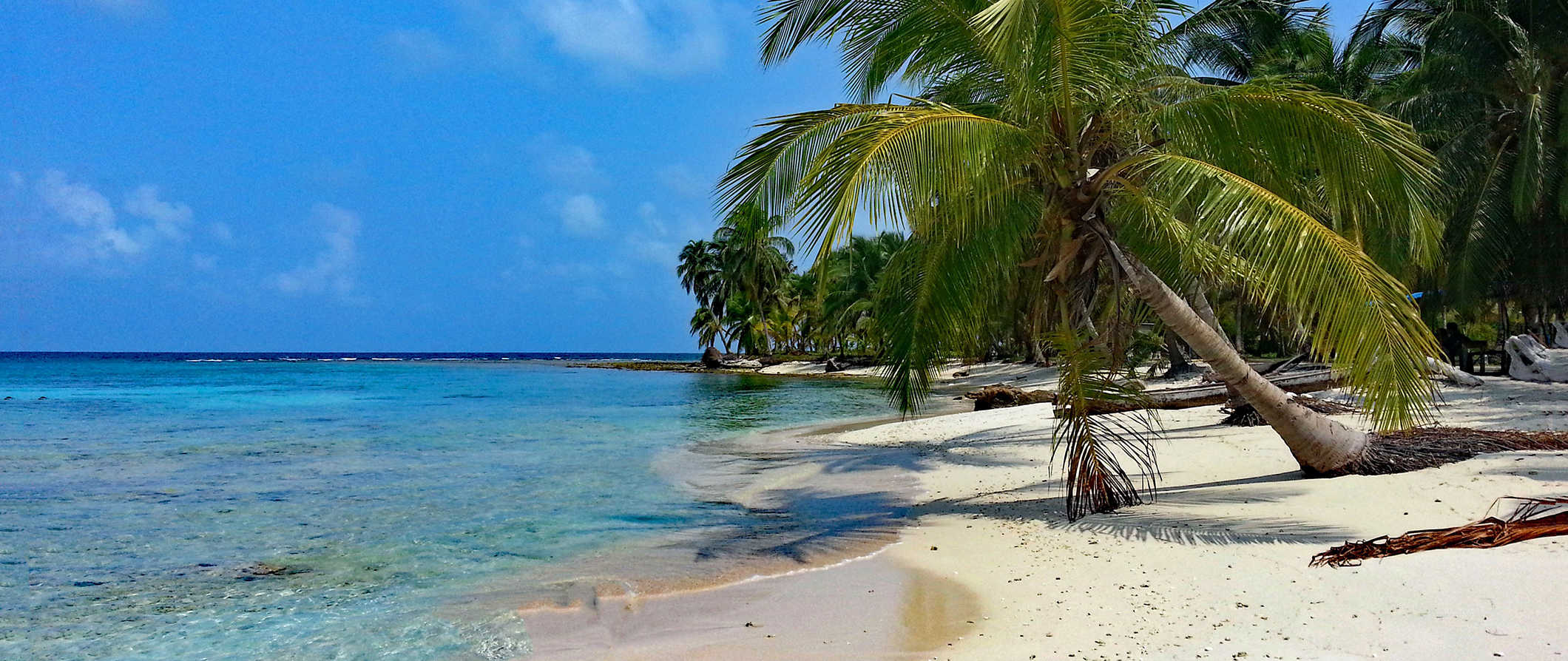
Its importance in global trade has helped the country proper (it’s one of the most developed in the region). And in recent years, Panama has also become a major tourist destination as flights from the US have become increasingly affordable and more Americans begin to retire here.
Most travelers visit Panama either at the end or the beginning of their journey through Central America here and stick to the well-worn tourist trail of Bocas del Toro, Boquete , the San Blas islands, and Panama City but, if you head to some of the lesser-known destinations, you’ll be rewarded with better food, amazing scenery free of tourists, and lower prices.
Panama is a beautiful country with an up and coming food scene (finally because, honestly, the food here is a bit bland) that I would say you need longer than you think to explore!
This travel guide to Panama can help you plan the perfect trip there without breaking the bank.
Table of Contents
- Things to See and Do
- Typical Costs
- Suggested Budget
- Money-Saving Tips
- Where to Stay
- How to Get Around
- How to Stay Safe
- Best Places to Book Your Trip
- Related Blogs on Panama
Click Here for City Guides
Top 5 things to see and do in panama.
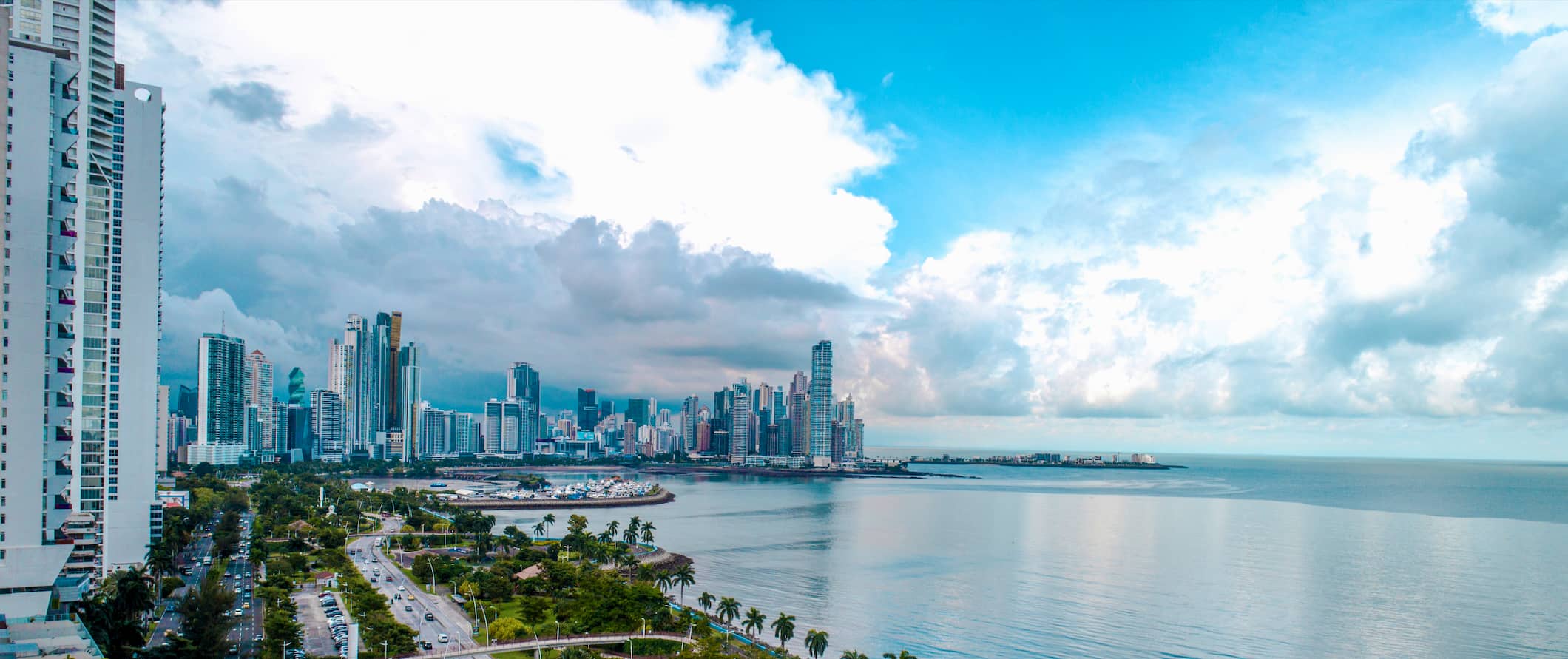
1. See the Panama Canal
Opened in 1914, the Panama Canal is one of the 7 Wonders of the Modern World and sees around 13,000-14,000 ships cross between the Pacific Ocean and the Caribbean each year. The Canal is 80 kilometers (50 miles) long and raises ships an impressive 27 meters (85 feet) using a complex lock system. It took a decade to create, relying on the labor of over 40,000 people — and over 5,000 of them died in the process. The Miraflores Locks are the easiest to reach from Panama City. Admission is $20 USD, and this includes the exhibitions at the visitor center as well as seeing the ships pass through from the observation deck.
2. Hang out in Bocas del Toro
Bocas is Panama’s most popular backpacker destination, combining a laid-back Caribbean attitude with the pristine natural setting of jungles, forests, and mangroves. Surfing is extremely popular here and there are always water taxis to take you to secluded coves, beaches, and the best snorkeling spots. This area is made up of three main islands: Isla Colon, Isla Bastimentos, and Isla Carenero. Bastimentos is calm and there are fewer people here so it’s a nice place to chill out away from it all. This area is also home to the Ngäbe and Naso Tjerdi indigenous cultures.
3. Relax in Boquete
Boquete is a laid-back village located in the mountainous region of the Chiriquí Highlands. There are several coffee plantations nearby, the ‘Mi Jardin es Su Jardin’ private garden, and several hiking trails of varying difficulty should you need to stretch your legs. This is a wonderful place to hike, bird watch, try some of the delicious regional coffee, and enjoy nature. One of the highlights here is the Volcán Barú volcano, where you can hike or take a 4X4 jeep tour up to the summit to catch the sunrise. The views are truly spectacular and you can enjoy panoramas of both the Atlantic and Pacific Coasts at the same time.
4. Sail the San Blas islands
This collection of 378 islands is a popular spot for sailing and boat tours (there are lots of resorts here too). These mostly uninhabited islands are under control of the Guna indigenous people and are still very rustic (no Wi-Fi, limited electricity), allowing them to maintain their raw beauty for ecotourism. The lodging there is made up of simple huts, hammocks, and tents. You can also opt to do a sailing tour around the area and stay on a boat. Most 3-day/2-night sailing tours cost around $285 USD, including food, while a 4-day sailing trip costs $559 USD. You can also visit on a day trip if you’re short on time
5. Tour a coffee plantation
Other things to see and do in panama, 1. check out the ruins of panama viejo.
Founded in 1519 by Spanish conquistador Pedro Arias de Ávila, Panama Viejo (“Old Panama”) was once the country’s capital. It was one of the Pacific coast’s busiest Spanish trading towns until it was destroyed by Captain Henry Morgan in 1671. The remaining ruins are spread out over 57 acres and include the original cathedral (you can climb the bell tower for an amazing panoramic view), a hospital, and churches and convents. Because of it is historic significance, in 1997 it was declared a UNESCO World Heritage Site together with Panama City’s historic Casco Viejo neighborhood. Admission is $15 USD for adults and $2 USD for kids. It’s only a 10-minute drive or 30-minute bus ride from Panama City.
2. Bike along Amador Causeway in Panama City
This 6-kilometer (4-mile) causeway is made from the excavated rocks of the Panama Canal and links Panama City with three islands: Flamenco, Naos, and Perico. It’s an easy ride and you’ll have a view across the canal on one side and the city skyline on the other. There are plenty of restaurants to stop at along the way too. You can rent bikes on the causeway; expect to pay $10-20 USD for a rental.
3. Take the Panama Canal Railway
The Panama Canal Railway connects Panama City with Colón and runs from the Pacific Ocean to the Atlantic Ocean with this scenic 76-kilometer (47-mile) route. The train is an old-fashioned locomotive complete with an observation car that offers views of the canal, Gutan Lake, and the passing rainforests. The three-hour round-trip journey costs $50 USD ($30 USD for children aged 2-12).
4. Visit Portobelo
Christopher Columbus named this settlement Puerto Bello or “Beautiful Harbor” when he arrived there in 1502. Over time, it was shortened to Portobelo . The settlement became an important town at the northern end of the Gold Road, and its 18th-century fortifications were built by the Spanish to protect their gold from pirates. You can still see the original canon battery and the crumbling ruins of the fort. Portobelo is also a good launching point for sailing trips to San Blas. The cuisine in Portobelo has a lot of African influences as well, including curries, coconut, seafood, and fragrant spices (head to Casa Congo for an authentic taste of Congolese food).
5. Hit the beach in Pedasi
Located on the Pacific side, this town is located five hours from Panama City and is known for its surfing. Though it has become a haven for expats in recent years, it’s still not really “on” the tourist trail. Not a lot of people go here and you’ll have the beaches mostly to yourself. The water is warm and you can find surf lessons at Shokogi Surf School starting from about $40 USD for one hour for a private lesson and $30 for a group class in Playa Venao. This is also a prime spot to see humpback whales from May-November.
6. Hike in the rainforest parks
Parque Metropolitano is a rainforest in the center of the city, a short 15-minute walk from the Albrook Shopping Center. Admission is only $4 USD and, if you hike up to the top of Cedar Hill, you’ll have fantastic views over the city. Keep an eye out for sloths, toucans, hummingbirds, pacas, monkeys, and anteaters. Parque Soberania (admission $5 USD) stretches along the shores of the Panama Canal and is the most easily accessible rainforest from Panama City. This park is a bird watchers’ paradise, with over 500 different species. The ride from Panama City takes 25 mins. Parque Chagres (also $5 USD) is a bit further away (it’s about 65 kilometers/40 miles north of Panama City) but worth the trip for the variety of wildlife: 114 mammal species (including big cats), 96 species of reptiles and 396 species of birds!
7. Spot wildlife at Volcan Baru
Volcan Baru is the only volcano in Panama, and, at 11,500 feet, also the highest point in the country. The lower slopes are home to dozens of coffee plantations, while the higher ground is part of the Volcan Baru National Park. Bring your camera as the rainforest here is a good place to spot the colorful Resplendent Quetzal, which is considered one of the most beautiful birds in the world for its bright coloring. Expect to pay around $75-85 USD for a guided hike. For $120-150 USD, you can take a bumpy 4×4 ride up to the summit at the crack of dawn to see the sunrise. You can also hike the volcano independently.
8. Surf in Santa Catalina
Santa Catalina, located on Panama’s Pacific Coast, a six-hour drive west of Panama City, is a hotspot with the surfing community. Only 300 people live in this town on the Pacific coast, so don’t come here expecting fancy resorts or high-end dining. This is the place to be if you want to catch some fantastic waves and relax on some sandy beaches. If you want to learn how to surf, check out the surf camps where you can pay $225 for two-day camps and that includes accommodation, food, surfboard rentals, and lessons. For private lessons, expect to pay around $40 USD for a two-hour class.
9. Canoe to Embera Indian Village
To get to this village, which is located inside Chagres National Park, you’ll need to paddle up the Chagres river in a dugout canoe and then walk through a rainforest, giving you the chance to really immerse yourself in the surrounding nature. When you finally meet the Embera tribe you’ll be offered traditional food, music, and dancing followed by the chance to buy the tribe’s handicrafts or go for a swim under a waterfall. Day tours from Panama City cost between $85-175 USD per person, depending on how many people are going.
10. Explore Casco Viejo
Casco Viejo (“Old Quarter”) is the historic district of Panama City and the oldest city in all of the Americas. These days, the city’s red-bricked streets are lined with restaurants, cafes and bars, though the Spanish-colonial style architecture makes Casco Viejo feel worlds apart from the glitzy skyscrapers of the newer parts of Panama City. There’s a coastal fortification walk, churches, and cute little squares to admire. It’s a popular place to stay and eat in and watch the sunset from one of the many rooftop bars. Head to Mercado de Mariscos (the fish market) for a $3 USD cup of ceviche (a dish of diced fish that has been cured in lemon juice, with onions, peppers, and spices).
For more information on specific cities in Panama, check out these guides:
- Boquete Travel Guide
- Panama City Travel Guide
Panama Travel Costs
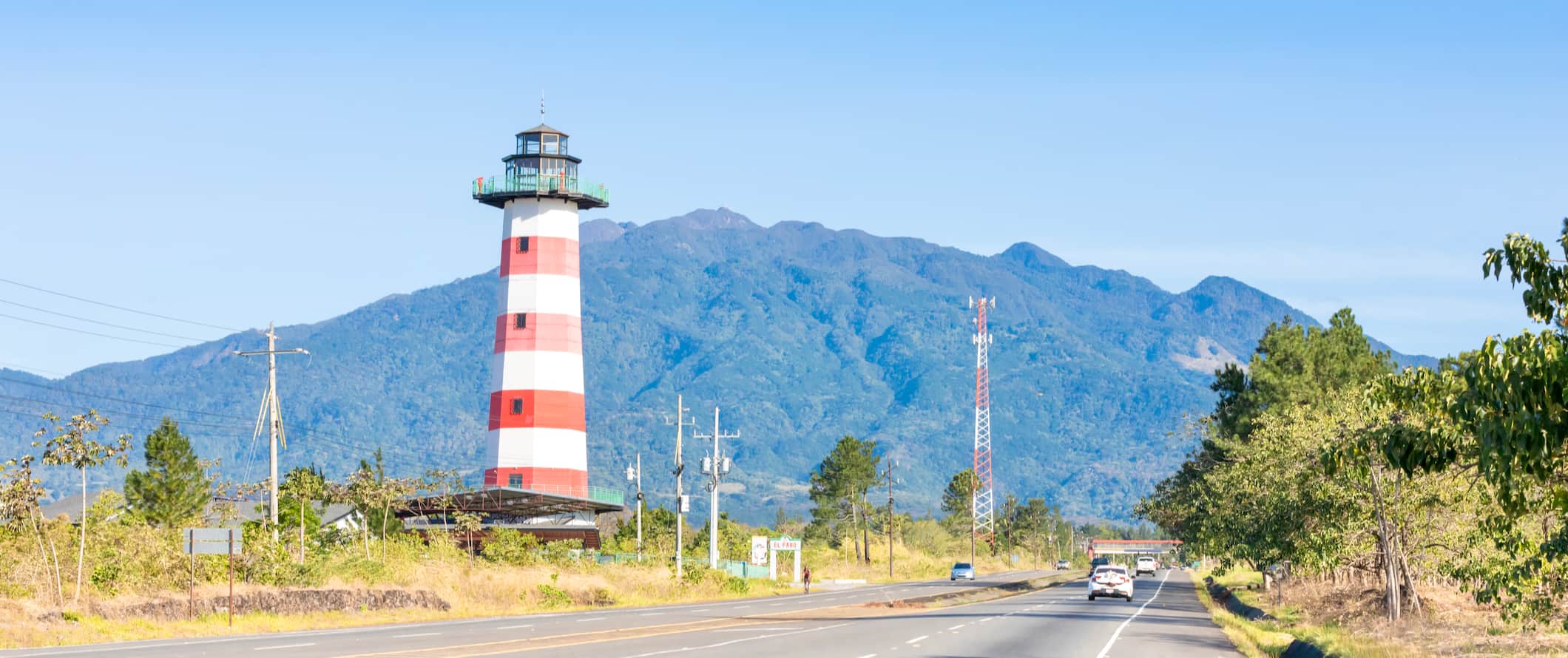
Note: Panama uses both the Panamanian Balboa (PAB) and US Dollars. Even though the PAB still exists, US Dollars predominate in day-to-day use (you’d be hard pressed to even find Balboas when visiting Panama).
Also, be advised that ATMs can be found in all larger towns and in touristy areas like Bocas del Toro, but if you’re planning to venture off the beaten path, check beforehand if there’s an ATM, or take out enough cash in advance. The San Blas Islands, for example, do not have any ATMs. Be aware that in most of Panama outside the capital, cash is king, and credit cards aren’t accepted in a lot of places.
Accommodation – Accommodation is cheap in Panama with a night in a hostel dorm costing $12-30 USD for a 6-8-bed dorm. A 10-bed dorm is usually around $10 USD. Private rooms range from $25-45 USD per night. All hostels offer free Wi-Fi and some include free breakfast.
Prices don’t really fluctuate much in the off-season – you might end up paying $1-2 USD less per night, but it isn’t significant.
Camping is available around the country at $5-10 USD per night for a basic plot for a tent without electricity.
Budget two-star hotels start around $30 USD per night. For a 3-star hotel or higher, expect to pay at least $65-80 USD per night. In the off-season, prices drop $5-10 USD per night.
Airbnb is available around the country, with an entire home or apartment starting at $50 USD per night (but average double that price or more). Private rooms start at $20 USD per night but usually average triple that price. Book in advance for the best deals.
Food – Panamanian cuisine features rice, black beans, yuca (a starchy vegetable similar to the potato), plantains, beef, chicken, and seafood. Common dishes include empanadas, chicken and rice, fried fish, and ceviche (a raw fish dish with lemon).
Local food-stall meals cost around $3-5 USD and get you chicken, rice, and beans. In a specialty coffee shop, you’ll pay between $3.50-5 USD for a coffee in Panama City, and between $2-4 USD in Boquete. Fish markets anywhere in the country usually have freshly-caught lunches for around $6 USD.
Breakfast is around $5 USD in a sit-down restaurant while a sandwich in a restaurant with table service averages $6-9 USD. Restaurants with table service generally cost around $10 per meal but remember to avoid restaurants with English menus as they’re usually more expensive.
For a nice meal with wine, expect to pay around $40 USD for 2-3 courses. A pint of domestic beer at a bar costs around $2.50 USD.
If you want to cook for yourself, expect to pay between $35-50 USD for a week’s worth of groceries including staples like fruit, veggies, rice, beans, and some meat.
Backpacking Panama Suggested Budgets
If you’re backpacking around Panama City, expect to spend about $45 USD per day. This includes staying in a hostel dorm, limiting your drinking, cooking your meals, using public transportation to get around, and doing mostly free and cheap activities like hiking and wandering the Old Town.
On a mid-range budget of around $150 USD per day, you can stay in a private Airbnb, enjoy a few drinks, eat out for a few meals, take the occasional taxi, and do some paid activities like visiting the canal.
On a “luxury” budget of $220 USD per day or more, you can stay in a hotel, eat out for all your meals, drink more, take more taxis, and do whatever tours and activities you want. This is just the ground floor for luxury though. The sky is the limit!
You can use the chart below to get some idea of how much you need to budget daily, depending on your travel style. Keep in mind these are daily averages — some days you’ll spend more, some days you’ll spend less (you might spend less every day). We just want to give you a general idea of how to make your budget. Prices are in USD.
Panama Travel Guide: Money-Saving Tips
Panama isn’t hugely expensive but it is more expensive than other countries in the region so you’ll have to work a little to save money here. Here are some of the best ways to save money in Panama:
- Travel off-season – Traveling is cheaper during the rainy season, between April and November. Most tourists visit Panama between December and April – that’s when hotel prices go up, especially in popular destinations like Bocas del Toro.
- Eat at the local food stands – Meals at local food stalls cost between $4-5 USD. You’ll get rice, chicken, beans, and a drink. I didn’t love the food in Panama (it’s quite greasy) but at those prices, it made eating very cheap.
- Avoid taxis – I found taxis here to be a complete rip-off. As my friend JP says, “You get Gringoed.” They were also far more unwilling to negotiate. I’d try to avoid them if possible.
- Refill your water – In most of the country, you can drink the tap water. There’s no need to always buy new water bottles so save yourself a few dollars a day and fill up from the tap. The only places you can’t drink from the tap are the islands (including Bocas del Toro). To ensure your water is safe, use a LifeStraw water filter .
- Stick to beer – Beer is much cheaper than cocktails so stick to beer if you go out drinking. It’s much cheaper!
- Carry small change – Most taxis and small shops won’t accept larger bills for small purchases so make sure you carry change.
- Embrace the bus! – Long-distance buses in Panama are a few steps above the infamous “chicken buses” so often found here in Central and South America. While a far cry from luxurious, they are good enough for long-distance journeys if you’re on a budget (there are still plenty of chicken buses though if you want to give them a try!).
- Stay with a local – There are tons of hosts (and lots of community events) in the larger cities of Panama, making this a great country to Couchsurf in. Pick up some tips and save some money by staying with a local!
- Barter hard – If you’re hopping ferries around Bocas del Toro make sure you barter hard. Much like the taxis in the city, you’ll likely be charged more than the locals so barter hard and make sure you know what you should be paying.
Where to Stay in Panama
Panama has plenty of fun and social hostels to stay at. Here are some of my suggested places to stay:
- Hostal Casa Areka (Panama City)
- Magnolia Inn Casco Viejo (Panama City)
- El Machio (Panama City)
- Bambuda Castle (Boquete)
- Spanish By the River (Boquete)
- Bambuda Lodge (Bocas del Toro)
How to Get Around Panama
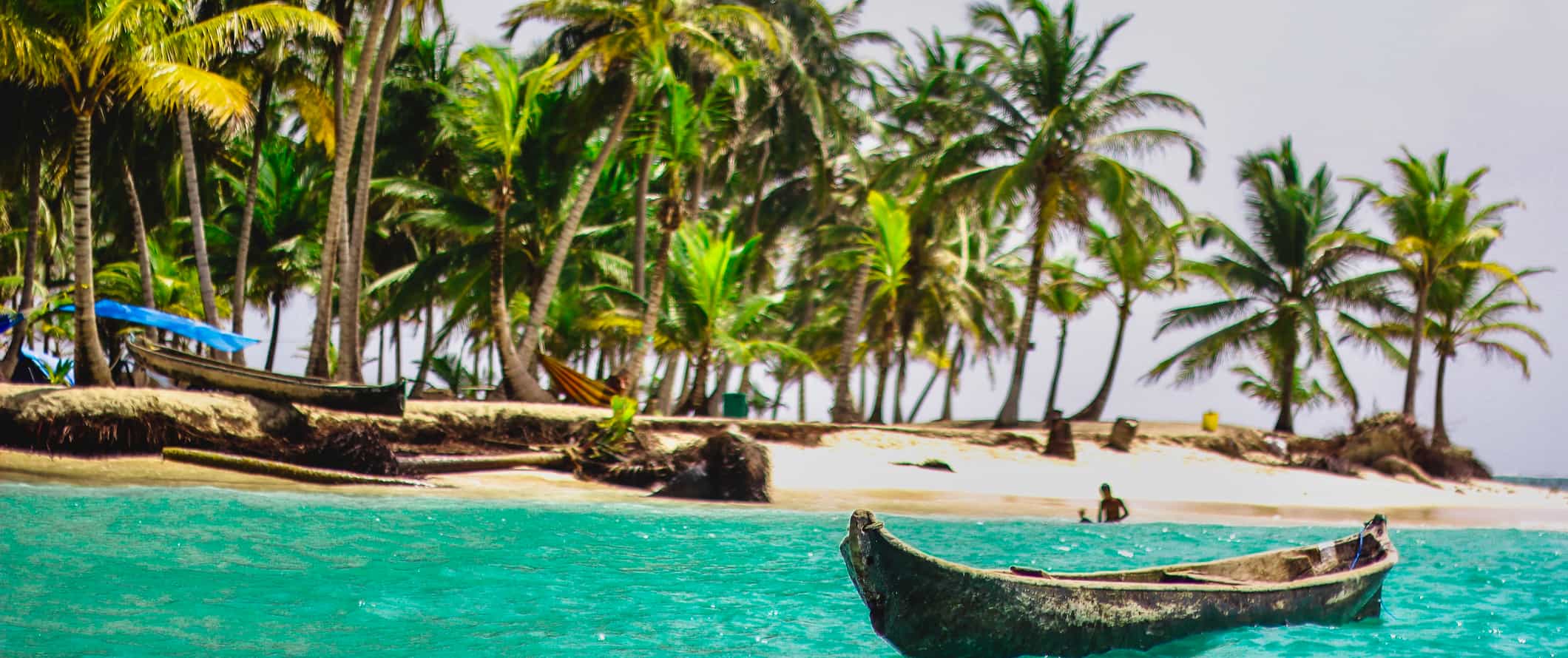
Long-distance buses are usually modern and air-conditioned, and night buses exist for longer journeys (like Panama City to Bocas del Toro). There is no online ticket booking system in Panama, you just show up at the bus station and buy your ticket at the counter.
For most routes, you can buy same-day tickets, but for night buses and longer journeys, it is recommended to buy your ticket a day in advance. Expect very basic buses in the smaller towns around the country – you’ll be riding Diablos Rojos (“Red Devils”): old repurposed American school buses that are colorfully painted.
There are two companies that offer services from Panama City all the way to Costa Rica: Expreso Panama and Tica Bus. Their ticket offices are inside the main bus station in Panama City which is inside the Albrook Mall.
Train – Train travel doesn’t exist in Panama. The Panama Canal Railway operates one train between Ciudad Panama and Colon on weekdays and that’s it.
Flying – Air travel is possible within Panama but is not recommended. The most common domestic connection is between Panama City and Bocas del Toro. The 1-hr flight is between $130-$145 USD. You can also fly from Panama City to David (near Boquete), Pedasi, Chitre, the San Blas Islands and the Pearl Islands. The 1-hr flight from Panama City to David costs $134 USD, vs. a 6-hr bus ride for only $9 USD.
If you’re on a budget, I wouldn’t recommend flying.
Car Rental – It is safe to drive in Panama, but be aware that rental agencies are scarce outside Panama City. Rentals cost around $15-20 USD per day. Websites like Expedia often advertise car rentals from $1 USD per day, but be aware that rental agencies charge additional fees and insurance. Most rental agencies require drivers to be at least 25, though some will accept drivers at 21 if they have a credit card.
For the best car rental prices, use Discover Cars .
When to Go to Panama
Panama has a short dry season between December and April, which is when you’ll get to enjoy clear blue skies. That said, Panama is less than 9 degrees north of the equator, which means temperatures are consistent year-round. The lowland regions are always hot and humid, but the highlands (Boquete, El Valle, Cerro Punta) can give you a bit of retreat from the heat – at least at night when it is a little cooler there.
Daytime temperatures in Panama average 30-33°C (86-91°F), and nighttime temperatures are around 21-23°C (69-73°F).
The rainy season lasts from May to December, but keep in mind that it usually only rains from late afternoon into the night. That means mornings and early afternoons can still be enjoyed. The rainiest month is November. If you visit during the rainy season, pack a rain jacket and avoid the highlands.
You never really have to avoid peak-season crowds in Panama; it’s never very crowded here, aside from certain areas (like Panama City) where cruise ships dock and crowds flood the streets for a few hours each day.
How to Stay Safe in Panama
Like neighboring Costa Rica, Panama is one of the safest countries for traveling and backpacking in Central America . That said, you’ll still want to be vigilant for petty crime.
Petty theft (including bag snatching) is one of the most common types of crime in Central America and it happens a lot in parts of Panama City as well as Colon. Always be vigilant and make sure your bag is properly worn and never left unattended.
The only city in Panama that is considered dangerous is Colon. Colon has the highest homicide rate of any municipality in Panama and you don’t want to wander after dark. Panama City, Herrera, and Chiriqui also have higher petty crime rates than elsewhere in the country so keep your valuables secure and do your best to fit in.
Some neighborhoods in Panama City can be a bit sketchy, including Curundu, El Chorrillo (which surrounds the neighborhood of Casco Viejo) and El Marañón. Avoid these areas after dark and don’t flash valuables like your phone or expensive jewelry.
Solo female travelers should generally feel safe here, However, the standard precautions apply (never leave your drink unattended at the bar, never walk home alone intoxicated, etc.).
The Darien Gap, the border region between Panama and Colombia, is considered extremely dangerous due to Colombian rebel groups and drug traffickers who operate there, but it isn’t really on travelers’ itineraries so it’s unlikely you’ll be anywhere near that but, if you are, keep a watchful eye out.
Don’t carry more cash on you than you’re planning to spend, and leave your passport and credit cards in your hotel room/hostel. Make copies of your personal documents, including your passport and ID.
Keep an eye out for common scams against tourists , such as fake ATMs, taxis that don’t use a meter, and questionable tour operators.
If you experience an emergency, dial 911.
The most important piece of advice I can offer is to purchase good travel insurance. Travel insurance will protect you against illness, injury, theft, and cancellations. It’s comprehensive protection in case anything goes wrong. I never go on a trip without it as I’ve had to use it many times in the past.
Panama Travel Guide: The Best Booking Resources
These are my favorite companies to use when I travel. They consistently have the best deals, offer world-class customer service and great value, and overall, are better than their competitors. They are the companies I use the most and are always the starting point in my search for travel deals.
- Skyscanner – Skyscanner is my favorite flight search engine. They search small websites and budget airlines that larger search sites tend to miss. They are hands down the number one place to start.
- Hostelworld – This is the best hostel accommodation site out there with the largest inventory, best search interface, and widest availability.
- Booking.com – The best all around booking site that constantly provides the cheapest and lowest rates. They have the widest selection of budget accommodation. In all my tests, they’ve always had the cheapest rates out of all the booking websites.
- Get Your Guide – Get Your Guide is a huge online marketplace for tours and excursions. They have tons of tour options available in cities all around the world, including everything from cooking classes, walking tours, street art lessons, and more!
- SafetyWing – Safety Wing offers convenient and affordable plans tailored to digital nomads and long-term travelers. They have cheap monthly plans, great customer service, and an easy-to-use claims process that makes it perfect for those on the road.
- LifeStraw – My go-to company for reusable water bottles with built-in filters so you can ensure your drinking water is always clean and safe.
- Unbound Merino – They make lightweight, durable, easy-to-clean travel clothing.
- Top Travel Credit Cards – Points are the best way to cut down travel expenses. Here’s my favorite point earning credit cards so you can get free travel!
Panama Travel Guide: Related Articles
Want more info? Check out all the articles I’ve written on backpacking/traveling Central America and continue planning your trip:

Do You Need Travel Insurance for Costa Rica?

The Best Tour Companies in Costa Rica
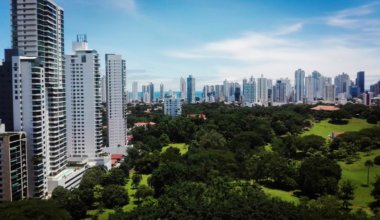
The 6 Best Hostels in Panama City, Panama
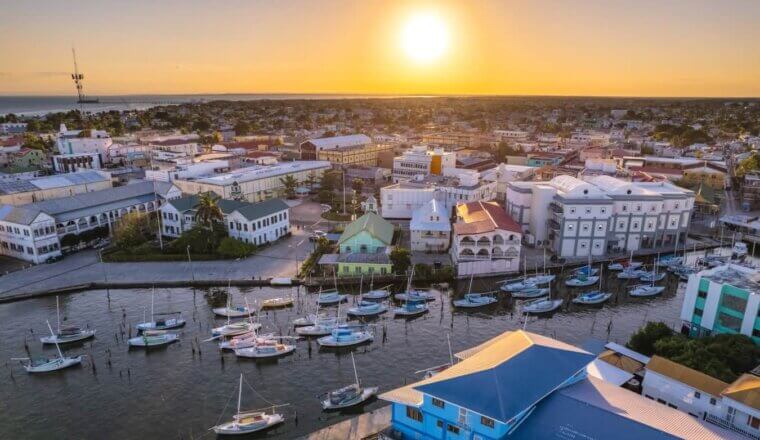
Is Belize Safe to Visit?

Is Central America Safe to Visit?
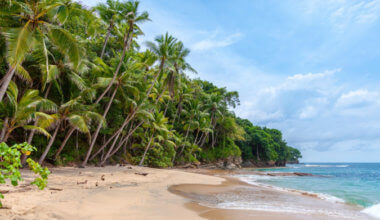
How to Get Around Central America on a Budget
Get my best stuff sent straight to you, pin it on pinterest.
- Where To Stay
- Transportation
- Booking Resources
- Related Blogs
Update April 12, 2024
Information for u.s. citizens in the middle east.
- Travel Advisories |
- Contact Us |
- MyTravelGov |
Find U.S. Embassies & Consulates
Travel.state.gov, congressional liaison, special issuance agency, u.s. passports, international travel, intercountry adoption, international parental child abduction, records and authentications, popular links, travel advisories, mytravelgov, stay connected, legal resources, legal information, info for u.s. law enforcement, replace or certify documents.
Share this page:
Learn about your destination
Take 90 seconds for safer travel.
Travel Advisory Levels
Enroll in step.

Subscribe to get up-to-date safety and security information and help us reach you in an emergency abroad.
Recommended Web Browsers: Microsoft Edge or Google Chrome.
External Link
You are about to leave travel.state.gov for an external website that is not maintained by the U.S. Department of State.
Links to external websites are provided as a convenience and should not be construed as an endorsement by the U.S. Department of State of the views or products contained therein. If you wish to remain on travel.state.gov, click the "cancel" message.
You are about to visit:
Panama City Safety: Am I Safe to Travel to Panama City, Panama in 2024?
Traveling to Panama City requires safety awareness; it combines modern and colonial areas, with typical urban safety considerations.

The good news is, Panama City is generally considered safe for tourists. However, knowing the ins and outs of staying safe can make your visit more enjoyable. Let's dive into what makes Panama City a destination worth visiting, while also keeping your safety a priority.
Crime Rates in Panama City
When considering a trip to Panama City, it's crucial to examine the crime rates that might impact your stay. Understanding these figures can guide your preparations and set your expectations about safety in this bustling metropolis.
Panama City's crime scene isn't uniform ; it varies significantly by area. Generally, the city enjoys a reputation for being safer than other Latin American capitals. However, like any urban center, it sees its share of crime, with petty theft and pickpocketing being the most common issues faced by tourists. These incidents are particularly prevalent in crowded areas and on public transport, so keeping your belongings secure and staying vigilant is key.
Let's look at the numbers to get a clear picture:
*Latest available data
Though the table shows a snapshot of criminal activity, it's important to note that significant efforts have been made by the local government to reduce these numbers, including increased police presence in tourist areas and the implementation of neighborhood watch programs. These initiatives have contributed to a gradual decline in crime rates, enhancing the city's overall safety profile.
For those planning to explore beyond the city's safer districts like Punta Pacifica or the historic Casco Viejo, it's wise to stay informed about the areas you plan to visit. Certain neighborhoods are known hotspots for criminal activities, and it's best to avoid them, especially after dark.
Arming yourself with knowledge about Panama City's crime rates and understanding which areas to avoid can significantly minimize risks. Preparation, awareness, and adhering to safety advice from local authorities will enhance your security, allowing you to fully enjoy the unique experiences that Panama City has to offer.
Safety Tips for Tourists
When embarking on an adventure to Panama City, being alert and cautious can significantly elevate your travel experience. As the city wins hearts with its vibrant culture and breathtaking scenery, it’s essential to tread wisely to avoid the shadows of crime that may lurk. Here are some must-know safety tips to keep you guarded and ensure your visit remains positively memorable.
Keep Personal Belongings Close: Petty theft, including pickpocketing, is the most common crime affecting tourists. Always keep your belongings secure and within sight, particularly in busy areas like public markets, transportation hubs, and popular tourist spots.
- Use cross-body bags that zip securely
- Avoid displaying expensive jewelry or gadgets
- Utilize hotel safes for valuable items
Stay Informed About Safe Areas: Not all parts of Panama City are created equal when it comes to safety. Before venturing out, it’s wise to research or inquire about the neighborhoods you plan to visit. Areas such as Casco Viejo and the Panama Canal Zone are known for their higher safety levels, while caution is advised in regions like El Chorrillo and Curundu after dark.
Rely on Reputable Transportation: Opt for officially marked taxis or trusted ride-sharing apps over unmarked vehicles. This simple choice can drastically reduce risks related to transportation, ensuring you reach your destinations safely.
Stay Connected: Keep your phone charged and consider purchasing a local SIM card for easy access to maps, transportation apps, and emergency contacts. This not only aids in navigation but also ensures you can reach help or inform someone of your whereabouts at all times.
Each of these tips, grounded in awareness and precaution, is designed to shield you from potential harm while allowing you to immerse fully in the splendors of Panama City.
Areas to Avoid in Panama City
While Panama City boasts a plethora of attractions and is largely considered a safe destination for tourists, like any major city, there are areas that require extra caution or are best avoided, especially after dark. Your safety is paramount, and being aware of these locations can help you navigate the city more securely.
First and foremost, El Chorrillo , Curundu , and Santa Ana are neighborhoods with a higher incidence of crime. Despite their proximity to popular tourist spots, these areas have struggled with issues related to gang activity and street crime. It's advisable to avoid these neighborhoods, especially if you're unfamiliar with the city or don't have a local guide.
Another area to be cautious in is Calidonia . During the day, Calidonia is bustling with shoppers and vendors; however, it transforms after sunset. The nightlife in this area can attract pickpockets and petty thieves, so it's wise to keep your personal belongings secure and to stay vigilant if you find yourself here in the evening.
For a safer experience, consider visiting well-trodden, tourist-friendly areas like Casco Viejo or the Cinta Costera . Both offer beautiful views and a multitude of activities, ensuring you experience the best of Panama City without compromising your safety.
- Stick to well-lit, populated areas.
- Always keep an eye on your personal belongings.
- Consider using reputable transportation options when moving around, especially at night.
Being informed about which areas to avoid is just as important as knowing the top spots to visit. By taking these precautions, you're more likely to enjoy a safe and memorable trip to Panama City.
Emergency Contacts in Panama City
While exploring Panama City, it's crucial to have essential emergency contacts on hand. Knowing who to call in case of an emergency can make all the difference. Here are key contacts you should save in your phone before embarking on your Panama City adventure.
National Emergency Number: 911 Immediately accessible and operational 24/7, dialing 911 connects you to police, fire, and medical services. Panama's emergency response teams are well-trained to assist in various crises, ensuring help is just a phone call away.
Tourist Police:
- Phone: +(507) 511-9260
- Location: Multiple, including major tourist areas. The Tourist Police are specially trained to assist travelers. Whether it's a lost passport or you've fallen victim to theft, they provide immediate assistance, ensuring your safety and helping you navigate the legal process in Panama.
- Phone: +(507) 317-5000
- After-hours Emergencies: +(507) 317-5000 For U.S. citizens facing emergencies, the American Embassy offers a range of consular services. From legal troubles to lost passports, they're ready to assist, ensuring American tourists receive the support they need.
Remember, in addition to these contacts, many hotels and resorts have dedicated security staff to assist with any issues. Don't hesitate to reach out to them for help or information during your stay in Panama City.
Having these numbers at your fingertips ensures you're prepared for any situation, letting you focus on enjoying the beauty and vibrancy of Panama City. Prioritize your safety, stay informed, and you'll have a memorable experience in one of Central America's most exciting destinations.
Panama City's allure is undeniable, with its vibrant culture and breathtaking landscapes. Armed with the right emergency contacts and an awareness of the resources available, you're set to explore this gem safely. Remember, having the Tourist Police, the American Embassy, and emergency numbers at your fingertips isn't just about precaution—it's about peace of mind. So, pack your bags, set your worries aside, and get ready to immerse yourself in all the adventures Panama City has to offer. Your journey is not just about the destinations you'll explore but also the confidence and safety with which you'll travel.
Frequently Asked Questions
What is the national emergency number in panama city.
The national emergency number in Panama City is 911. It can be dialed for immediate assistance in emergency situations.
How can tourists contact the Tourist Police in Panama City?
Tourists can contact the Tourist Police by calling +(507) 511-9260. They provide specialised assistance to tourists in need.
Is there an American Embassy contact for U.S. citizens in Panama City?
Yes, U.S. citizens can contact the American Embassy in Panama City at +(507) 317-5000 for assistance.
Do hotels and resorts in Panama City provide security assistance?
Yes, many hotels and resorts in Panama City offer dedicated security staff to further assist guests with safety and security concerns.
Why is it important to have these emergency contacts while exploring Panama City?
Having these emergency contacts is crucial for ensuring the safety and well-being of tourists, allowing them to receive immediate assistance in various situations and enjoy their visit with peace of mind.
73 Basic Dutch Phrases for Your Next Trip to Netherlands 🇳🇱
Learn essential Dutch phrases for a smooth trip to the Netherlands. Perfect for travelers looking to connect with locals and enrich their experience.
Win a $500 Flight!
Embark on the adventure of a lifetime! Enter our Dream Journey Sweepstakes for a chance to win a $500 travel voucher, redeemable with any major US airline. Whether it's sandy beaches, bustling cities, or tranquil mountains, your dream destination is just an email away!*

Is Copa Airlines Safe? Unveiling the Truth Behind Their Sky-High Safety Measures
When you're planning your next trip, safety is always at the top of your mind, especially when choosing an airline. Copa Airlines, with its hub in Panama City, has been connecting travelers across the Americas for years. But how safe is it really?

Ultimate Guide: Best Places to Live in South America for Every Lifestyle
Ever thought about packing your bags and starting fresh in a place where the sun kisses your skin a little differently? South America might just be the spot for you. With its vibrant cultures, breathtaking landscapes, and cities that blend the old with the new, it's a continent that's got something for everyone.

75 Basic Spanish Phrases for Your Next Trip to Panama 🌴☀️
Learn 75 essential Spanish phrases for your Panama trip! Perfect for travelers eager to connect with locals & explore Panama City to Bocas del Toro.

20 Things To Do in Panama City Beach With Kids (From a Local!)
Explore top activities in Panama City Beach for families! From unique attractions to stunning beaches, find 20 kid-friendly adventures locals love.

17 BEST Restaurants in Panama City Beach (Clams, Oysters And Burgers!)
Feast on Panama City Beach's top eats! From juicy burgers at Tally-Ho to fresh clams & oysters, explore the 17 best restaurants for every traveler.

Best Time to Visit Panama (Astonishing Views & Fun Festivals)
Explore the best time to visit Panama for astonishing views & vibrant festivals! Ideal from Jan-April for dry weather & fun events.
You may also like...

Chiapas Safety: Am I Safe to Travel to Chiapas, Mexico in 2024?
Explore if Chiapas, Mexico is safe for travel with insights on local safety, contrasting news, and traveler tales. Is Chiapas safe? Read on.

Quepos Safety: Am I Safe to Travel to Quepos, Costa Rica in 2024?
Exploring Quepos, Costa Rica safety for travelers. A guide to enjoying this Pacific coast gateway to Manuel Antonio National Park worry-free.

Liberia Safety: Am I Safe to Travel to Liberia, Costa Rica in 2024?
Wondering if Liberia, Costa Rica is safe for travel? Explore safety tips for this Pacific Coast gateway, a must-read for cautious travelers.

Santa Teresa Safety: Am I Safe to Travel to Santa Teresa, Costa Rica in 2024?
Is Santa Teresa, Costa Rica safe for travelers? Explore safety tips for a worry-free trip to this tropical paradise with surf and sun.

Am I Safe to Travel to Puerto Viejo de Talamanca, Costa Rica in 2024?
Exploring Puerto Viejo de Talamanca, Costa Rica? Learn if this lush, vibrant destination is a safe haven for travelers in our latest blog post.

Tijuana Safety: Am I Safe to Travel to Tijuana, Mexico in 2024?
Is Tijuana safe for travel? Explore safety tips, culture, cuisine & markets of this vibrant border city. Perfect for cautious travelers.
The travel site inspired by travelers and locals alike. Find amazing destinations, unique trip ideas, the best hotels, and most comfortable resorts.
- Destinations
- Mexico Travel News

Is Panama Safe To Visit Right Now? Travel Advisory 2024
Although most places in Panama are safe, you should exercise caution when walking through large cities’ streets after dark. Pickpocketing should be avoided, and keep in mind that violent crime and mugging are also commonplace on the streets of this nation.
Areas to avoid
Panama City’s high-crime areas include:
- San Miguelito
- El Chorrillo
- Veracruz Beach
- Parque Soberania
- Panama Viejo
- Casco Viejo
- shopping areas on Avenida Central
LATEST UPDATES / NEWS from Panama
January 26 – a working agreement is signed by eurojust and panama to strengthen their joint efforts to combat organized crime.
A Working Arrangement was signed by Eurojust and Mr. Javier E. Caraballo Salazar, Attorney General of the Republic of Panama, to facilitate more organized and close cooperation in the fight against organized crime.
The agreement guarantees improved communication to expedite the execution of judicial cooperation requests on both sides and formalizes Eurojust’s current Contact Points in Panama. The first nation in Latin America to sign a Working Arrangement with the agency is Panama.
“With Panama’s rich tradition as a bridge maker between continents in mind, I am delighted to sign into effect the Working Arrangement that will bring closer the European and Panamanian communities of prosecutors and judges. We share a similar criminal threat picture on both sides of the Atlantic as well as the resolve to intensify our joint judicial response. Eurojust therefore looks forward to engaging with colleagues in Panama; for instance, in the fight against organised crime and drug trafficking,” said Eurojust President Mr Ladislav Hamran
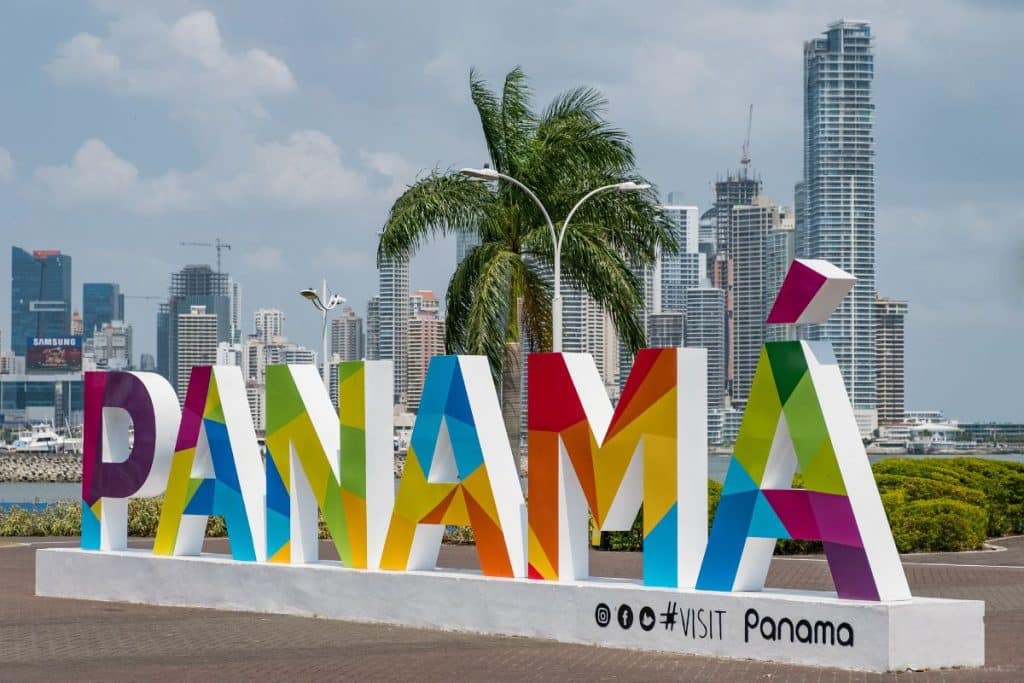
U.S. Travel Advisory – Level 2: Exercise Increased Caution
Avoid going from Boca de Rio, Chiriqui to Cocle del Norte within ten miles of the coast. This region is home to drug trafficking and other illegal activity.
Because U.S. government personnel must obtain prior approval before traveling to this region and face additional restrictions before such travel is approved, the U.S. government’s ability to provide emergency services to U.S. citizens is limited.
Parts of the Darien Region – Level 4: Do Not Travel
Do not travel to the following areas of the Darien:
- All areas south of Jaque to Manene to Yaviza to Lajas Blancas cities to the Colombian border
- The city of Lajas Blancas
- The city of El Salto
Canada Travel Advisory
Colón and some parts of Panama City:
Exercise a high degree of caution due to high crime rates, be extremely cautious in Colón and some parts of Panama City.
Area beyond Yaviza: Steer clear of all travel
Due to the extremely high rate of violent crime, avoid traveling to any area beyond the town of Yaviza in Darién Province, all the way to the Colombian border.
Mosquito Gulf: Avoid all travel
Steer clear of all travel to the Mosquito Gulf, which stretches from Boca de Río Chiriquí to Coclé del Norte, as there is a lot of illegal activity, including drug and human trafficking.
U.K. Travel Advisory
Violent attacks, including sexual assault, have occurred in Panama City and other popular tourist destinations nationwide. When you are traveling at night, exercise the same caution that you would in the UK. Steer clear of dimly lit areas and never go alone on foot.
There is a risk of political and criminal violence from Colombia spreading to Panama. The guerrillas in Colombia and other armed groups pose a threat. In this region, there have been murders, kidnappings, and violent crimes committed against both foreign nationals and Panamanian citizens.
Only take organized group trips to Darien Province. Don’t deviate from your group and heed any security advice from the area.
Tips for Staying Safe in Nicaragua
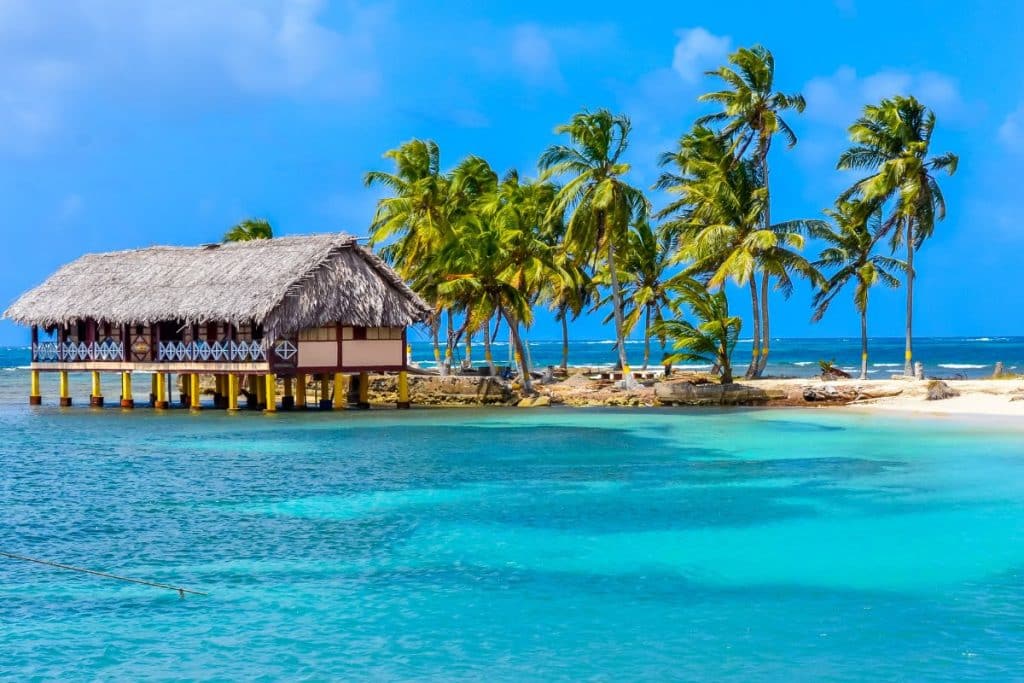
- Steer clear of protests and demonstrations, as they have the potential to escalate into violence. Stay informed through local media and adhere to the guidance provided by local authorities.
- Petty crime is more prevalent than violent crime. Be vigilant with your belongings, particularly in transit hubs. Violent crimes, such as armed robbery and muggings, can occur. Utilize ATMs only in banks or shopping centers, and avoid going out alone.
- The Darien Gap, located near the Colombian border, is actively frequented by Colombian guerrilla groups and drug traffickers. It is strongly advised not to travel to this region.
- Panama is susceptible to earthquakes, and tsunamis can occur. Familiarize yourself with tsunami warning signs and promptly move to higher ground without waiting for official alerts.

These 15 states are helping the feds enforce protections for airline passengers
( The Hill ) — The Department of Transportation (DOT) announced Tuesday that it was partnering with 15 states to investigate airlines and protect passengers amid a boom in air travel.
The partnership will allow the Biden administration to prioritize cases of misconduct if state attorneys general find that airlines or ticket agents participate in “unfair or deceptive airline practices.”
If a state attorney general believes an airline violated a law, they could refer the cases to DOT for enforcement. The partnership will allow participating states’ attorneys generals to have access to a federal complaint database and ensure airlines comply with state-level investigations, the DOT said in a release.
“We take our mission to protect consumers seriously, and today’s launch of the Airline Passenger Protection Partnership is an important milestone in that effort,” Transportation Secretary Pete Buttigieg said in a statement.
Buttigieg, speaking at the announcement event at the Denver International Airport, was joined by Colorado Attorney General Phil Weiser (D). Buttigieg said the partnership is a bipartisan effort to protect consumers.
“Consumers deserve to be treated fairly, know what they’re getting, and get everything they pay for when they fly,” Wieser said. “By working together, we will be improving travel for passengers and holding accountable airlines or ticket agents who harm consumers.”
Buttigieg pointed to travelers who had flights canceled and then had to wait days for a new flight or pay more to fly home on a different airline. He said it’s a violation of passenger rights and it’s happening far too often, The Associated Press reported.
Participating states include California, Colorado, Connecticut, Illinois, Maine, Maryland, Michigan, Nevada, New York, New Hampshire, North Carolina, Oklahoma, Pennsylvania, Rhode Island and Wisconsin. The District of Columbia, the Northern Mariana Island and the U.S. Virgin Islands also have attorneys generals participating.
The states have signed a Memoranda of Understanding (MOU) that will ensure state attorneys general and the DOT’s Office of Aviation Consumer Protection are collaborating on consumer complaints of unfair or deceptive practices being used by airlines.
“Federal law places responsibility for addressing airline consumer protection matters with DOT,” the release aid.
Several other states have expressed an interest in signing the MOU as well.
For the latest news, weather, sports, and streaming video, head to mypanhandle.com.
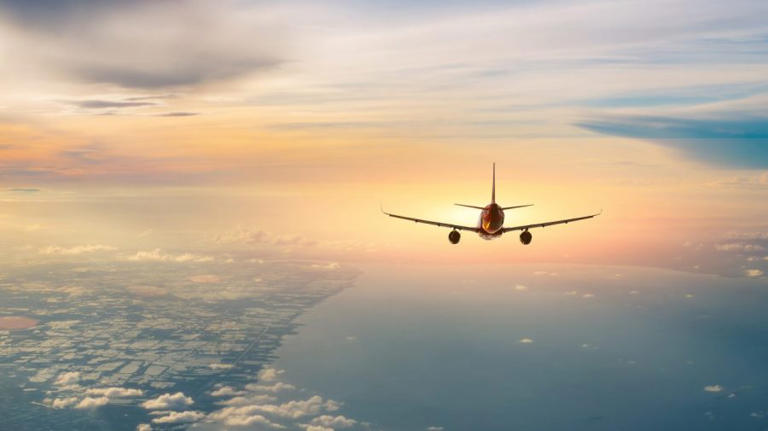
Is It Safe To Travel To Panama 2024
Is It Safe To Travel To Panama 2024 . How safe is panama in 2024. 28 feb 2024, 2:23 pm.
However, in your opinion is it to travel. These neighborhoods should be avoided if possible.
18 Things To Know Before Traveling To Panama.
Safe to travel in panama?
Is Panama Safe To Visit Right Now?
Yes, you can find areas in panamá where you really don’t want to be.
Nov 23, 2023, 9:06 Am.
Images references :, how safe is panama in 2024..
I know no one can forecast the future.
Be Sure To Stay Hydrated, Wear Sunscreen,.
28 feb 2024, 2:23 pm.
My Friend Wants Me To Go To Panama With Him.

- Privacy Policy
- Terms and Conditions
Time Travel Tuesday

PANAMA CITY, Fla. (WJHG/WECP) -This week’s edition of Time Travel Tuesday with local historian Bill Hudson features council meetings, buildings and more.
If you’d like to give Bill Hudson a call or recognize any of the people featured this week, you can reach him at (850) 785-3364.
Copyright 2024 WJHG. All rights reserved.

Sneads High School softball coach arrested in Jackson County

Man arrested for felony drug charges in Washington County

Gulf Coast Salute Air Show: officials focus on safety before big event

Crews deploy new artificial reef off Panama City Coast

CBS apologizes for cutting Billy Joel’s performance short, will re-air full concert
Latest news.

Commission votes Kevin Cowper out as city manager

WJHG wins national Service to America Award

Morning Extra: top stories from Tues. April 16

IMAGES
COMMENTS
Some areas have increased risk. Read the entire Travel Advisory. Do not travel to: Parts of the Mosquito Gulf due to crime. Parts of the Darién Region due to crime. Read the country information page for additional information on travel to Panama. If you decide to travel to Panama:
Generally, Panama is a safe country to visit. When you visit Panama, you can count on friendly people offering you help with anything you need, especially in rural areas. However, crime rates are high, and it's not just the petty crime that's the issue: violent crime is a common issue in Panama, though it's on its way to getting eradicated.
Do not travel to Panama due to COVID-19. Some areas have increased risk. Read the entire Travel Advisory. Read the Department of State's COVID-19 page before you plan any international travel. The Centers for Disease Control and Prevention (CDC) has issued a Level 3 Travel Health Notice for Panama due to COVID-19.
Tap water is normally safe to drink, especially in cities, but if you're going off the beaten track, avoid plastic pollution and invest in a water-filter bottle, which you can fill up from any water source. 13. Stay safe in the city. Panama is one of the safest countries in Central America, but it always pays to take a few precautions.
If you keep your wits about you and avoid well-known danger zones, you can avoid falling victim to crime. Crime hot spots. Alcohol and drug laws. Safety in the Darien Gap. Narco boats. Safety for female travelers. Taxis and public transport in Panama City. Car rental and purchase scams.
Requirements to Travel to Panamá. Proof of economic solvency of at least five hundred dollars (USD $500.00) in cash, credit card, bank reference, work letter, or traveler's checks. Some nationalities must present a higher amount. We recommend validating this information with the consulate of Panamá in your country or with your airline.
Safety and security Region between Yaviza and the Colombian border. Avoid all travel from the end of the Pan-American Highway (past Yaviza, about 230 km southeast of Panama City) to the Colombian border.
If your travel plans in Panama include outdoor activities, take these steps to stay safe and healthy during your trip. Stay alert to changing weather conditions and adjust your plans if conditions become unsafe. Prepare for activities by wearing the right clothes and packing protective items, such as bug spray, sunscreen, and a basic first aid kit.
Yes, but with care. In general, backpacking in Panama is pretty safe. Based on an official report by the United States Foreign Agriculture Service, Panama had a total of 862, 206 visitors in just the first half of 2022. Tourists generally had no problem with their visit. In fact, it's one of the safest countries in the Central American region - people are friendly and there are plenty of ...
And stay safe in Panama with a map, compass and a blindfold, just in case you stumble on hidden treasure or a drug lord! Navigating Panama Safely. To navigate Panama safely with transportation, street smarts, and personal safety in mind, and to deal with scams and petty theft, follow these travel safety tips and recommendations.
Additional Assitance. State Department, Consular Affairs - 888-407-4747 or 202-501-4444. Panama Country Information. Enroll in Smart Traveler Enrollment Program (STEP) to receive security updates. Follow us on Facebook and Twitter. Travel in Panama. U.S. Citizen Services.
COVID-19. If you are planning international travel at this time, please read our COVID-19 related travel advice here, alongside our destination specific travel advice below.. Do not travel. Do not travel to the Darien Gap, south of the town of Yaviza, due to high levels of violent crime and the presence of drug traffickers and armed guerrilla forces.. This includes the Darien National Park ...
In the depths of it, the skies can be overcast for days, but the rains are usually intermittent and the cloud cover can bring relief from the relentless Panamanian sun. 3. You're better off with a Metro card than a car. Although a car is good for day trips out of town, don't plan on driving much in the city.
Drivers and front-seat passengers must wear seatbelts. Children aged 4 and under must travel in the back in fitted child seats. Drink-driving is a serious offence in Panama. If you are tested and ...
Panama is a very safe country. The people here are friendly and the medical services, especially in Panama City, are great.Crime isn't a problem in most places, but there are a few areas that tourists should avoid, including the city of Colón, poorer parts of Panama City, and some regions of the Darién.Be sure to wear sunscreen while you're visiting and exercise caution while hiking in ...
Warnings and insurance. Information on political demonstrations in Panama ('Safety and security' page). The Foreign, Commonwealth & Development Office ( FCDO) provides advice about risks of travel ...
Panama is still safe for tourists in 2023, although the crime rate is as high as it's always been. However, visitors in 2023 will have to contend with sometimes-violent protests, which, in the past, were not usually common in this stable country.
A budget travel guide for Panama with things to do, accommodation suggestions, transportation tips, costs, ways to save, and more! Nomadic Matt's Travel Site. ... Car Rental - It is safe to drive in Panama, but be aware that rental agencies are scarce outside Panama City. Rentals cost around $15-20 USD per day.
Panama Travel Advisory: Level 2: Exercise Increased Caution: July 17, 2023: ... Subscribe to get up-to-date safety and security information and help us reach you in an emergency abroad. ... You are about to leave travel.state.gov for an external website that is not maintained by the U.S. Department of State.
The Tourist Police are specially trained to assist travelers. Whether it's a lost passport or you've fallen victim to theft, they provide immediate assistance, ensuring your safety and helping you navigate the legal process in Panama. Phone: + (507) 317-5000. After-hours Emergencies: + (507) 317-5000.
Travel Advisory 2024. Is Panama Safe To Visit Right Now? Travel Advisory 2024. Although most places in Panama are safe, you should exercise caution when walking through large cities' streets after dark. Pickpocketing should be avoided, and keep in mind that violent crime and mugging are also commonplace on the streets of this nation.
or email us at [email protected]. Government Advisories On Travel In Panama. Many Governments worldwide advise on how safe it is to travel to many destinations. The Canadian Government gives Panama the green light as a travel destination but notes to avoid some areas in Colon, Panama City, the Darian, and the Mosquito Gulf.. The USA Government is generally more conservative when ...
The Department of Transportation (DOT) announced Tuesday that it was partnering with 15 states to investigate airlines and protect passengers amid a boom in air travel.
Panama Vacation Packages with Airfare Liberty Travel, Is boquete, panama safe to travel in conclusion, the answer to whether boquete, panama is safe to travel to is yes. 3 months beyond date of arrival. Source: www.smartraveller.gov.au
This week's edition of Time Travel Tuesday with local historian Bill Hudson. ... officials focus on safety before big event. ... Panama City Beach, FL 32407 (850) 234-7777;
Best Luggage Tracker: Apple AirTag. Best RFID-Blocking Travel Wallet: Zoppen Multi-Purpose RFID Blocking Passport Holder Travel Wallet. Best Anti-Theft Bag: Pacsafe Women's Citysafe Cx Anti Theft ...
Level 1 is the safest ("exercise normal precautions") and Level 4 is the most dangerous ("do not travel"). In March 2022, Jamaica was elevated from Level 2 ("exercise increased caution ...